Roland Barthes: Love as a Language

The topic of love has perhaps been discussed ad nauseum but to unveil mankind’s long-running love affair with “love,” one would benefit by returning to the year 1977 and examining Roland Barthes’s A Lover’s Discourse: Fragments. Just as the original book does, this article will refer to miscellaneous elements of pop culture to discuss the facets of the lover’s experience. “Image-Repertoire” is a term Barthes uses to describe collections of images the lover cycles through and revisits each time in order to relate to the beloved. Here, “lover” means simply “one who loves,” “beloved” means “one who is loved,” and “love” is “a heightened state of being.” The exact nature of the relationship, its occupants, and its expression remain irrelevant just as the division between “lover” and “beloved” is often artificial and interchangeable.
What’s in a name?
Before one delves into its contents, it might be worth briefly examining A Lover’s Discourse: Fragments from first impressions. The term “lover” illustrates a solitary existence. He or she is the one “who loves,” but the object of that love is out of sight (though certainly not out of mind). Yet the second word of this title, “discourse,” suggests there are at least two people involved. After all, it is another word for “discussion” or “communication.” Since this discourse is in ways addressed to the reader, the “loved object” would be seem to be the reader. However, “the reader” exists as its own mysterious entity. The reader is in many ways a figment of the writer’s imagination, an absence that the writer flings his or her words at in the hopes of a reaction.

Lastly, there is the term “fragments.” “Fragments” denotes a disoriented state, perhaps to replicate the dizzying affect of love upon the lover. The word also suggests halted or interrupted communication, an impression alone rather than the knowledge of a great unknown. All those terms pooled together with their unifying and yet also disparate connotations is classic Roland Barthes. The title seems innocent and innocuous enough to slip by undetected, but it betrays mysterious implications upon further inspection.
An Ongoing Conversation
Juliet Capulet: “What’s in a name? That which we call a rose
By any other word would smell as sweet.” 1
(Shakespeare 2.2.46-7)
In her famous plea for she and Romeo to renounce their family name so that they may be together, Juliet entertains the notion that language itself is absurd. Juliet and Romeo are no more in control of the family name that was bequeathed to them than a rose is in charge of the label a collective group of humans has agreed to identify it with. However, were people to be rid of labels altogether, it would likely generate mass confusion and panic. Barthes acknowledges the importance of labels, but does not necessarily revere them either. Language cannot define reality, but language does inform us on how we can construct our visions of reality. How one chooses to shape reality for himself is indicative of the images that crowd one’s mind. The microcosm and the macrocosm feed each other.
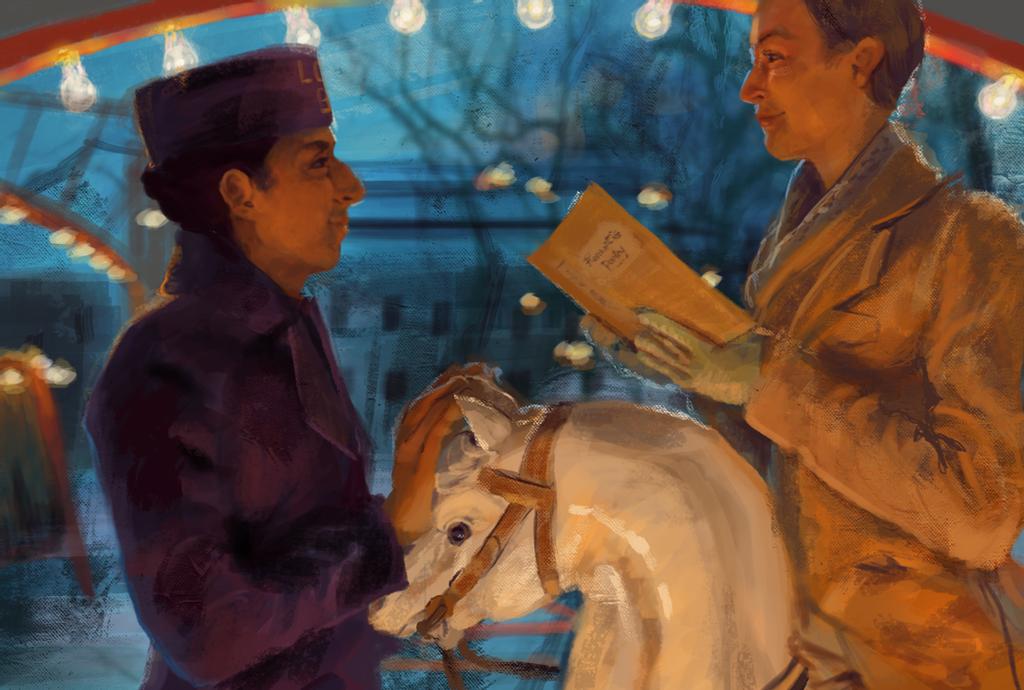
In My Fair Lady, Professor Henry Higgins sings “I’ve grown accustomed to her face” when speaking of Eliza Doolittle. This is a matter of retreading the same patch of land over and over again. This endless repetition, though he might grow weary of it and soon despise it, he soon fears he will unable to live without. Much like the realm of dreams, love requires the lover to consistently reacquaint himself or herself with the beloved. Every meeting is the first one and love is merely another word for understanding. Just like Agatha and Zero (“A” and “Z”) of Wes Anderson’s The Grand Budapest Hotel, the bond between lover and beloved is the beginning and end of all language. In his gift of poetry to her, Zero has inscribed a dedication which contains perhaps all known synonyms in the English language that man could have ever created for the word “love” (adored, cherished, darling, etc.).
In Spike Jonze’s Her, the power of conversation is put on full-display when Theodore falls in love with his artificial intelligence personal assistant named “Samantha.” He can only fall in love with words, since this is all “Samantha” consists of. As a professional love-letter writer, Theodore should be all-too-familiar with this phenomenon. Theodore’s growing love for “Samantha” illustrates mankind’s larger love affair with words. He of all people should be wary of the power of words to capture the lonely human heart, as even the most emotive and seemingly personalized sentiments can be manufactured for precisely that reason. Yet no matter his know-how, Theodore can’t help but fall for the game he helps orchestrate to others’ disadvantage. Words remain an attempt to solidify ephemeral love, of continually building a sandcastle only to watch the ocean tides take it away time and time again.

In William Shakespeare’s Twelfth Night, Olivia falls for Viola disguised as her brother Sebastian due in part to language. Viola must act on Duke Orsino’s behalf in terms of a marriage proposal, which belies the fatal flaw in the Duke’s plan. How can Olivia fall in love with a man she has never met? Meeting does not just mean encountering each other face-to-face either. In The Spanish Princess, Prince Henry (the eventual King Henry VIII) hijacks his brother Arthur’s (who is Catherine’s true intended) correspondence. This is twofold a subterfuge of his older brother’s engagement and an illicit seduction of Catherine. Catherine may be engaged to Arthur in name, but it is Henry who has courted her without her knowledge. As with Henry, Viola of The Twelfth Night admits she “would be loath to cast away [her] speech, for, besides that it is excellently well penned, [she has] taken great pains to con it” (Shakespeare, lines 170 – 2). 2 Olivia is distinctly aware of a woman’s worth being calculated as part of the estate as any other possession would be, like a chair or a piece of shrubbery. While dressed as a man, Viola can appeal to Olivia by using the womanhood she herself possesses, seducing her twice-over as well.
Viola: “Most sweet lady -“
Olivia: “A most comfortable doctrine, and much may be said of it. Where lies your text?”
Viola: “In Orsino’s bosom.”
Olivia: “In his bosom? In what chapter of his bosom?” 3
(Shakespeare 1.5.221-5)
In their first meeting, both Olivia and Viola explicitly refer to courtship as if there were a series of contracts that must be continually renegotiated when terms and conditions change. Olivia seems well-accustomed to (and thus, perhaps bored with) the marriage proposals of Duke Orsino’s kind, and refers to them as if they were passages from the Bible. The same trusty book can be relied upon to refer to each and every Sunday. All she needs is the pastor’s direction to know which page to turn to for this week’s sermon.
This open dialogue is what gives Laurie of Louisa May Alcott’s Little Women the courage to try to reframe his own image within Jo March’s mind and convince her to love him in the way he wishes. Due to his inherent lack of control, the lover seeks to have the last word in his lover’s narrative. In Greta Gerwig’s film adaptation of Little Women, Laurie initially allows Jo the last word as a means of engendering her sympathy. His submission to her speech makes her words appear unnecessarily cruel and overdone. “[B]y the announcement of suicide,” Laurie acknowledges his futility and “becomes the stronger of the two: whereby . . . only death can can interrupt the Sentence, the Scene” (Barthes, 208).
“(i do not know what it is about you that closes
and opens; only something in me understands
the voice of your eyes is deeper than all roses)
nobody, not even the rain, has such small hands.” 5
(cummings, 17 – 20)
In The Hour, Freddie Lyons casually recites this final fragment of e.e. cummings’s poem “somewhere i have never travelled, gladly beyond” to his central love interest in the series, Bel Rowley. The “closing” and “opening” of the beloved suggests a phoenix-like flower that dies before it blooms again. It suggests love is a perennial plant and the lover echoes what the German poet Rainer Maria Rilke once said: “No feeling is final.” Like the speaker of the poem, Freddie is continually pulled back into an ongoing conversation with Bel no matter what the present moment might tell him to the contrary. They change frequently between frenemies to badgering siblings to soulmates with each added syllable. This continuous cycle and exchange provides the lover with the hope that he cannot be rendered mute forever by his beloved’s oppressive presence.
What happens when one grows tired of one’s text? The Apartment shows C.C. Baxter and Fran Kubelik trapped in these roles of those “that get took” by the “takers” (as Fran would phrase it). The author Kurt Vonnegut Jr. once suggested that one’s pretenses unconsciously inform one’s behavior and so one must careful about what “characters” one chooses to play. Fran inhabits the role of a compliant elevator operator, a woman that senior executives in the office building can quickly pinch while their wives are none the wiser. Baxter is the compliant pencil pusher, one of many men with paperwork-laden desks. His position could be filled by any other willing and eager ladder-climber.
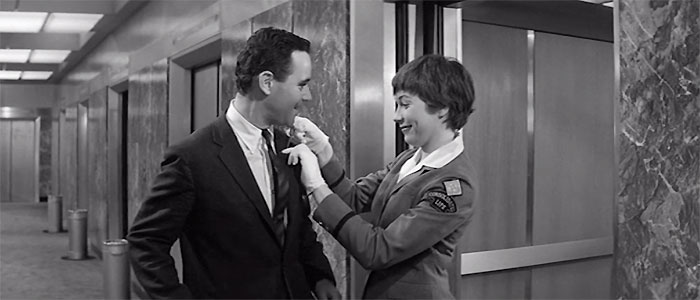
Baxter and Kubelik are so immersed in these characters that they do not have to conceptualize the lover’s feeling of being submerged in images they feel they have not willfully chosen for themselves. They separately share a similar language filled with cracked mirrors and missing room keys. However, they also share the joint language of travels up and down a packed elevator and playing cards to pass the time. By choosing to engage more in the latter language, Baxter and Kubelik reshape the way they see themselves and, eventually, how others see them. By the end, it is Baxter and Kubelik who will be sending the customary sympathy Christmas fruitcake to the orchestrators of those failed relationships.
“The lover’s solitude is not a solitude of person (love confides, speaks, tells itself), it is a solitude of system . . . I can be understood by everyone (love comes from books, its dialect is a common one), but I can be heard (received ‘prophetically’) only by subjects who have exactly and right now the same language I have.” 7
(Barthes, 212)
In one scene from The Half Of It, Ellie Chu attempts to coach Paul Munsky on how to effectively court his crush, Aster Flores, by likening conversation to table tennis. Contrary to table tennis though, the object of “the game” of conversation is not to defeat one’s partner but to maintain the gentle tempo. The lover must keep his or her partner “in the game,” as a means of extending the courting process for as long as possible (if not indefinitely).
A Collision of Languages
Communication of love is hardly seamless. Two people could speak endlessly to each other without realizing they have each been speaking to a wall this entire time, one that simply rebounded their own words back to them. How can they effectively communicate with each other? Getting the words right could mean the difference between success and failure for the lover.
In the 2015 adaptation of Thomas Hardy’s Far from the Madding Crowd, Bathsheba Everdeen sings a folk song called “Let No Man Steal Your Thyme.” The word “thyme” takes on multiple meanings in the song. “Thyme” is the literal plant, a symbol of virginity, and a homophone for the word “time.” This exhibits love as a dangerous phenomena, one that exacts a painful price on the lover. If the singer and listener have not agreed which definition of the word “thyme” to use (or perhaps agreed to no set definition), the consequences could be quite dire. The hidden meanings of the song itself, the entanglement between literal and figurative interpretation, are rife with danger for its intended audience despite the seriousness of its intentionality. Much like Her‘s Theodore, despite her intrepid independence, Bathsheba winds up falling for what she has spent years guarding herself against. Bathsheba is falsely convinced, like most people, that she always knows exactly what she wants and how best to get it.

In Midnight in Paris, Gil has a preoccupation with the “Golden Age” of the 1920s Paris. The present’s inability to live up to the supposed beauty of a bygone age causes an underlying sense of melancholy and dissatisfaction within him. The main friction between the lover and the object of his desire here consists of what Antoine de Saint-Exupery describes as keeping the lover’s view along the horizon. Love is not simply a matter of admiring or simply liking the beloved, of being forever trapped by his or her form, but of being able to look outward in the same way. Like the speaker in Shakira’s song “Poem to a Horse,” the lover risks using his poetic words on a beloved unable to comprehend them. The lover risks wasting his precious time.
In the modern world, Gil’s fiancée Inez longs for a glamourous, Hollywood-esque lifestyle in America. Gil likes the more muted rainy days in Paris. In the 1920s, the erratic and passionate artists Pablo Picasso and Ernest Hemingway seek beautiful muses for their work in Adriana. Adriana is tired of this oppressive energy and is attracted to Gil, who is far more understated and sensitive compared to the men she’s used to getting involved with. However, modern-day Gil’s ideal time period is the 1920s and 1920s Adriana’s ideal era is the 1890s. Nobody’s love images seem to align. It’s like a game of “Telephone,” where the original meaning gets more and more mistranslated the further one goes down the line. As in the Mat Kearney song “Ships in the Night,” all these potential lover and beloved relationships go amiss because they speak past each other and never land where they intend.

In The Beatles song “She’s Leaving Home,” the narrative alternates between sympathetic perspectives of a daughter, who unceremoniously leaves the family home, and her parents, who lament her loss. The song exhibits Barthes’s notion of a tension between love as an unceremonious gift and a loan to be paid back in at least equal measure. This causes a great deal of distress for the lover, who is forced to cement his love “in an exchange economy (of sacrifice, competition, etc.),” which is made evident via physical offerings of food, money, etc. and “which stands opposed to silent expenditure” (Barthes, 77). What happens when the beloved craves the immaterial, just as the daughter in this song longs for a pleasure-filled life? Both the daughter and her parents appear to love each other in “She’s Leaving Home,” but fissures have sprouted up in their relationship without either party appearing to realize it. When methods of loving are so different to each other, it can seem to either party that there is in fact no love there at all.
Lockscreen
Though love is a literary and cinematic experience, the words and actions involved must be so heavily digested by both the lover and the beloved that it does not strike either as artificial. Both In the Mood for Love and The French Lieutenant’s Woman display the inherent conflict between what is staged and constructed using another’s words and mannerisms and what is based on natural and spontaneous feeling. Barthes asserts that “tenderness, by rights, is not exclusive hence [one] must admit that what [one] receive[s], others receive as well” (Barthes, 225). An actor who takes part in a passionate sex scene on film would not necessarily be accused of infidelity by his significant other because it is assumed that he is merely acting. The actions taking place in front of the camera lens are detached from the person bringing them to life.
The 1981 film adaptation of The French Lieutenant’s Woman frequently switches back and forth between the modern real world and the fictitious Victorian movie setting using the same actors. This is done unceremoniously, meaning the viewer likely finds the contrast jarring and perhaps irreconcilable. With Wong Kar-Wai’s In the Mood for Love, Su Li-zhen and Chow Mo-wan superficially adopt the roles of their cheating spouses as an act of subtle revenge and engage in an affair without an affair. Much like philosopher Jean Baudrillard’s “Simulacra and Simulation,” both individuals here are deeply aware of an image or symbol’s power to construct reality. An actual affair is unnecessary when they can simply “appear to” have an affair to an ever-watchful audience. However, this Image-repertoire becomes compromised when Su Li-zhen and Chow Mo-wan develop real feelings for each other “off-camera.”
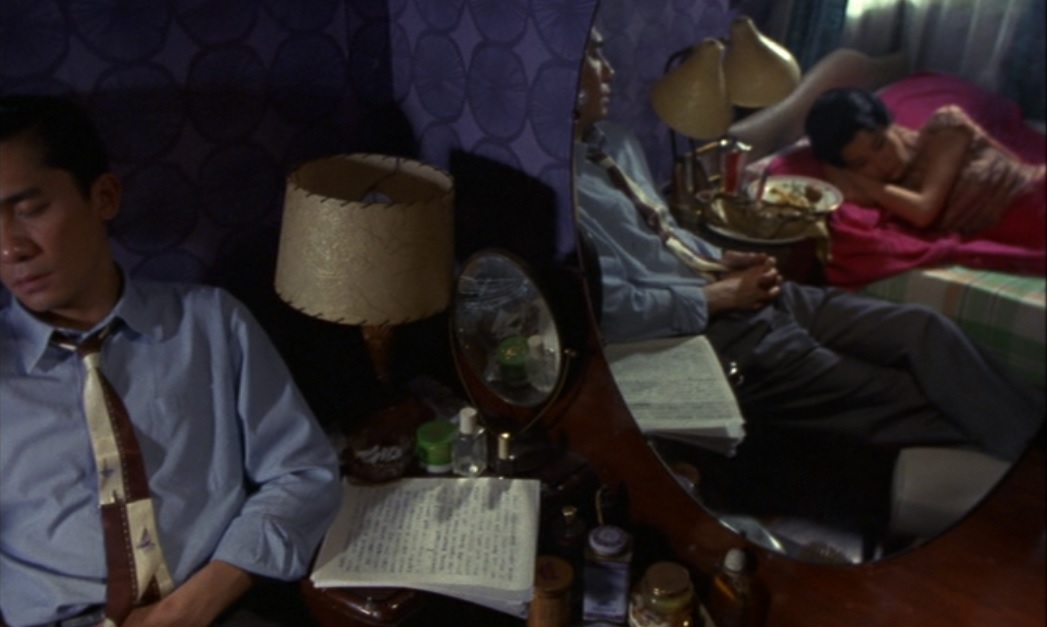
These other images that threaten the lover’s reality become a source of enmity for the lover. In other cases, the rivals are not other versions of “me” but a legion of other people whom the lover must mimic if he is to have any chance with the beloved. At times, the beloved appears just as replaceable. This notion is abhorrent to the morally-conflicted lover, who believes pursuing love is only worthwhile because it is “special” and “unique.” In the Arctic Monkeys’s “Cornerstone,” the speaker sings of encountering women who look like his beloved over and over again. It is the lover’s hell-scape of hallucinatory “Ghosts of Beloveds Past.” Like uncanny valley with humanoid robots, the speaker wishes to transform each woman into the original beloved in question but is equally unsettled by his desire to do so.
“She was close, close enough to be your ghost
But my chances turned to toast
When I asked her if I could call her your name” 8
In Daphne de Maurier’s Rebecca as well as the animated series Le Portrait de Petit Cossette, potential rivals are long-dead. They exist only as images with no flesh-and-blood counterpart with which one can offer a comparison. There is less of a chance of spotting an imperfection when the rival can no longer bleed as the substitute is so apt to do. How can one possibly compete with the dead? When competing with locked images (as the dead often have), a certain sainthood has been certified and set in amber. Haruki Murakami’s Norwegian Wood entails making do with substitutes for the “real thing,” but the awareness of this causes unspeakable sorrow.
Yet this feeling of love being ephemeral and unreal is due to love’s very nature. As Barthes notes, the word “love” lacks an inherent meaning. Most feel at a loss to explain what “love” is, to find a container that encompasses its entire skin and all of its guts. Something is inevitably going to slip out and be lost in the process. The word “love” can apply to one’s spouse, one’s grandma, one’s favorite dance track, a slice of pepperoni pizza, etc. It is a placeholder word for a vast spectrum of feelings and thoughts.
“Like a child’s word, [I-love-you] enters into no social constraint; it can be sublime, solemn, trivial word, it can be erotic, pornographic word. It is a socially irresponsible word. 9
(Barthes, 148)
In this clip from the film Baby Driver, Debora remarks how with an abstract name like “Baby,” just about every song ever made in history is unintentionally directed toward him. Much like this soundtrack-motivated film, the closest approximation Barthes can make is music because “in the proffering of I-love-you, desire is neither repressed . . . nor recognized . . . but simply: released” (Barthes 149). It is a performance even without a visible audience. It is an exhale. In The Song of Bernadette, one of Sister Bernadette’s final words is “I love you” when a vision of the Virgin Mary appears before her. This “I love you” is a prayer and a declaration of worship. To everyone else in that room, Sister Bernadette is simply addressing the empty air. However, the lover hopes to address the “I love you” somewhere, even if that somewhere is an unseen God. How does the lover go about sending this “I love you” to the beloved and what does he or she experience in doing so?
Travels to a Distant Land
An Unbearable Immobility
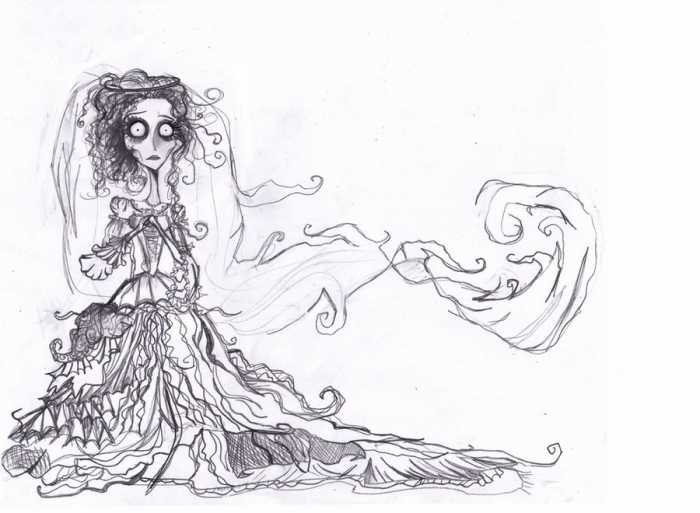
The primal experience of the lover is that of being immobile. One is helplessly and hopelessly “struck” by love as if it were a bolt of lightning, an energizing force that is deadly in that it is too much for the body to take. Like a spider injecting venom into its quivering prey to lessen the struggle, the beloved takes hold of the lover and nails him to a single spot. Perhaps nothing illustrates this better than the character of Miss Havisham in Charles Dickens’s Great Expectations. For Miss Havisham, time has stopped at the exact moment her husband-to-be left her alone at the altar. In Tim Burton’s The Corpse Bride, Emily serves as the film’s namesake because she was seduced into a marriage and then betrayed (murdered) by the man she believed loved her. Both Miss Havisham and Emily represent the fatality of broken promises and romantic disappointments.
“I enter into the night of non-meaning; desire continues to vibrate (the darkness is transluminous), but there is nothing I want to grasp; this is the Night of non-profit, of subtle, invisible expenditure . . . sitting simply and calmly in the dark interior of love” (Barthes, 171).
These disappointments are not harmless, but create dead orbiting planets to the still-burning Sun. One feels entirely reliant on the beloved for existence, just as the Earth needs to be both near and far enough away in relation to the Sun for life to flourish. Barthes ascribes the lover the role of a planet patiently waiting to feel the Sun’s warmth, for it is nothing but a cold rock hurtling through space otherwise. If the planet is deprived of experiencing the warmth of the Sun (i.e. the lover does not feel the beloved’s love), then the environment the lover experiences remains inert. There is no activity. The air is deadly still.

In “134340” by BTS, the name of the dwarf planet has been reduced from the dignified “Pluto” (the Roman equivalent to the god of the underworld) to the anonymous and bland number “134340.” This dwarf planet has the same position, environment, and planetary characteristics it has always possessed. However, it has now been cast aside through no fault of its own. A change in name is all it takes for the lover to be ripped away from the beloved’s warmth. The cozy familiarity of “John” becomes the coldly formal and applicable-anywhere “Mr. Smith.” A similar feeling is expressed in Florence + the Machine’s “Cosmic Love,” a song in which the lover has been plunged into darkness due to a lack of love.
As Coldplay expresses in their song “In My Place,” love is often a waiting game. As long as there is an end date to this purgatory, the heartache becomes manageable. For Barthes, the lover measures “the wealth of ingenuity . . . lavish[ed] for nothing in his favor (to yield, to conceal, not to hurt, to divert, to convince, etc.)” (Barthes, 85). It relates to the famous quote (perhaps falsely) attributed to Albert Einstein in regards to relativity. When one is in pain, the pain endured will feel eternal. However, like the humanoid robot boy of Steven Spielberg’s A.I. (Artificial Intelligence) who is granted one day to spend with his late mother, time spent with the beloved never feels enough. The neglected lover experiences a depressive state, where the future never extends beyond the present day misery.
“[W]aiting makes me more anxious than usual . . . I walk back and forth in my room: . . . everything seems inert to me, cut off, thunderstruck – like a waste planet, a Nature uninhabited by man.”
(Barthes, 87)
In The Young Victoria, Albert is feminized by his position as the Queen’s consort before he even marries Victoria. He must wait until Victoria proposes marriage to him, which would have been an unlikely position for a man to be in at the time. Even when they do eventually marry, Albert initially struggles with his new role as being forever subservient to his wife. It may be said that the beloved (love itself made incarnate) is the true king. The experience of “being in love” may make the lover feel kingly, but one is always an “an almost King.”
What exactly is the lover waiting for? For the Kings-in-waiting, a change in status in his beloved’s eyes entails a change in planetary conditions. He must patiently wait for the Sun to show her face again in the hopes the two planetary objects will grow closer and tidally-lock themselves into orbit about each other. One might think the lover would want his planet to rotate freely, so that it could be bathed in sunlight from all angles. Yet without this locked orbit, the lover will continually experience the beloved’s exit and entrance in his life. The lover wants forward-facing basking in the beloved’s heat with the cold abyss of loneliness always on his back and out of sight.
A Change in Weather
This locked orbit is an environment the lover can only ever hope to have. A change in weather, though contrary to the lover’s wish for the beloved’s unrelenting attention, provides the lover with the illusion that the intensity (and thus the amount) of love has increased. The threat of rain, sleet, or snow for the mailman to trudge through is preferred to the void of an eternally-smiling sunny day. The lover believes the intensity of withdrawal increases the potential reward of love for his patience.
“Absence becomes an active practice, a business (which keeps me from doing anything else); there is a creation of a fiction which has many roles (doubts, reproaches, desires, melancholies). To manipulate absence is to extend this interval, to delay as long as possible the moment when the other might topple sharply from absence into death.”
(Barthes, 16)
In the well-known children’s book Guess How Much I Love You? by Sam McBratney, Big Nutbrown Hare and Little Nutbrown Hare engage in an almost-duel of comparative measures of love. Does one’s love travel past the confines of the cul-de-sac, round the bend of the river, or does it fasten itself inside a N.A.S.A. space rocket and launch (fingers-crossed) toward the Swiss-cheese craters of the moon à la Georges Méliès? What does it mean when one attempts to quantify love? Other than perhaps being a form of friendly competition, it may reflect love’s ability to create alternate realities. It may be a response from the lover to the beloved’s question: “How big of a world can you create for me? Prove to me you’re my God above all other gods.”
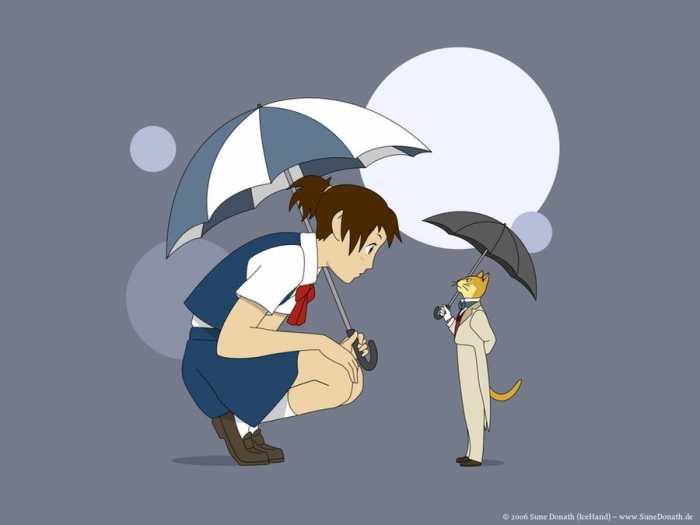
Yet the beloved is the world-maker as far as the lover is concerned and the beloved need not be Aladdin to lead the lover to “A Whole New World.” The world appears to explode from a dull monochrome to glorious technicolor whenever the beloved is near. One is Dorothy stepping from the dull confines of Kansas into the Wonderful Land of Oz. As in Cinderella or the The Little Mermaid, the beloved promises a broader expanse to the stifling borders of one’s hometown, neighbors, and state of mind. Like Lewis Carrol’s Alice’s Adventures in Wonderland or Hiroyuki Morita’s The Cat Returns, the beloved is a delightful intruder. The beloved seemingly appears as a streak of sunshine peeking out from beneath a muggy, gray cloud.
In the case of someone like Tom of (500) Days of Summer, all it takes is sex with the woman of his dreams to make the world colorful and vibrant and full of possibility. The next morning Tom can be seen parading through the streets with a newfound confidence, seeing Han Solo’s reflection staring back at him from a car window. The streets erupt into a flash mob song-and-dance routine, joining him in his celebration, while Hall & Oates’s “You Make My Dreams (Come True)” blares full-blast in the background. In 2003’s Peter Pan, a kiss alone can be enough to reinvigorate one’s dull senses. Before Wendy decides to give Peter the real thing in a moment of danger, Peter thought a “kiss” was just an underwhelming thimble. In Euphoria, the enigmatic and fun-loving Jules becomes drug-addict Rue’s new drug of choice. It is quite difficult for an addict to remain in one place for any extended period of time. Her intense relationship with Jules provides her with the kaleidoscopic “highs” as well as the sepia-laden lows that come with withdrawal.
“Like a kind of melancholy mirage, the other withdraws into infinity and I wear myself out trying to get there.”
(Barthes, 112)
Like a dream, this new and once-hidden world is not constant. Like the fickle lover of Simon and Garfunkel’s “Cecilia,” who changes sexual partners when the speaker gets up to wash his face, the beloved appears to be forever in the distance. This horizon that never gets closer no matter how far you walk means rainfall might soon follow the sunshine. In Disney’s Treasure Planet, Jim Hawkins struggles with his father’s abandonment of the family. His resentment manifests itself in both the need to escape and a desperate search for a surrogate father figure. This is something Jim sees in the dynamic and adventurous but man of questionable loyalties, John Silver. Is John Silver just another escaping light, like Jim’s biological father before him? Is it possible to safeguard this precious newfound horizon?
In the film Heavenly Creatures, this other world is so fragile that any outsiders who appear to pose a threat are met with murderous outrage. Pauline Parker and Juliet Hulme are both portrayed as outcasts with vivid imaginations, able to escape the dissatisfaction and frustration in their lives by constructing more dignified alter egos. They become so entrenched in their fantasy that reality seems more unreal by comparison. For them, the fantasy of the “Fourth World” is the true world, the only world that matters and their birthright. The lover and beloved here are united against a harsh and unforgiving environment. External reality is demolished and the fantasy-building realm of the Image-Repertoire is where the lover crawls back to for protection.
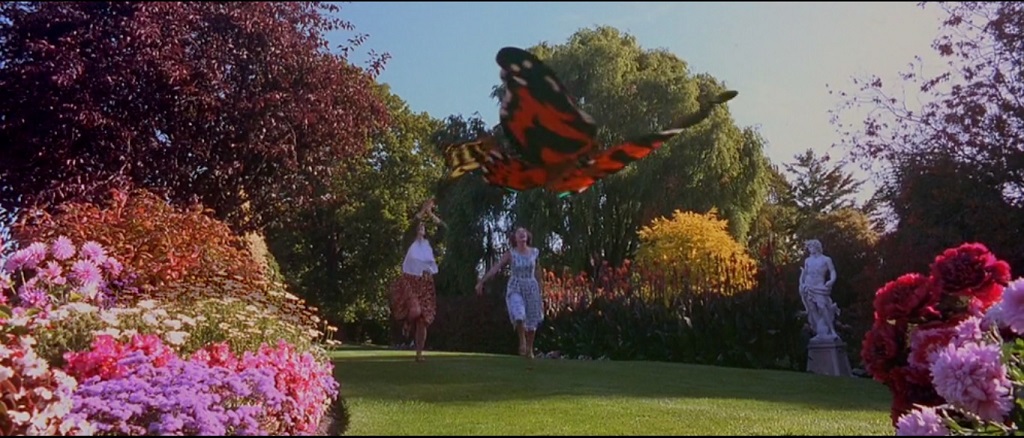
In The 1975’s music video for “A Change of Heart,” it is not the outside world that poses a threat to the lover’s climate. It is the beloved. The speaker confesses that he is not sure when he was fooled by the beloved’s physical beauty into thinking she was more unique than she is. Just when he thought she was “coming across as clever,” he expresses disappointment in the seemingly insignificant and relatively minor infraction of lighting “the wrong end of a cigarette.” 11 This single moment is one of many that serve to shatter, one by one, the speaker’s illusions about the beloved. The hopelessly infatuated and heartbroken Romeo soon forgets Rosalind when he sees Juliet in William Shakespeare’s Romeo & Juliet. The beloved becomes a vacation destination, a beautiful place to visit but not to set up permanent residence.
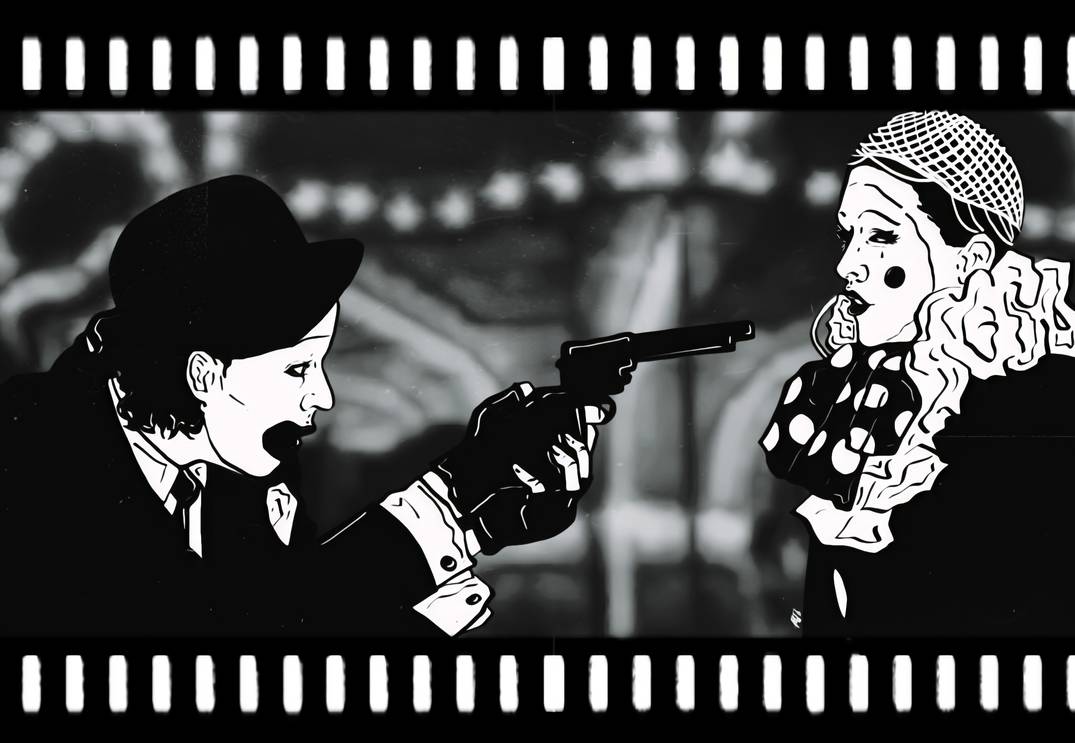
The speaker in “A Change of Heart” seems to be excusing his own diminishing feelings by suggesting it is out of his control. One cannot stop the rain from falling down just as one can’t help falling “out of love” he seems to assert. By the end of the music video, the singer shields both himself and his beloved under an umbrella, only for her to storm (pun intended) off with it. The singer is left unprotected and alone underneath the storm cloud, even going so far as to take his hat off as well (as if to intensify his feelings of sadness). In this case, the amount of love is dictated by whim. Feelings come and go. Excitement eventually leads to boredom and back around again. The feelings of the two involved are entirely dependent on the atmosphere. Without the right weather conditions, the baseball game of love will just have to be postponed (in the case of “A Change of Heart,” probably indefinitely).
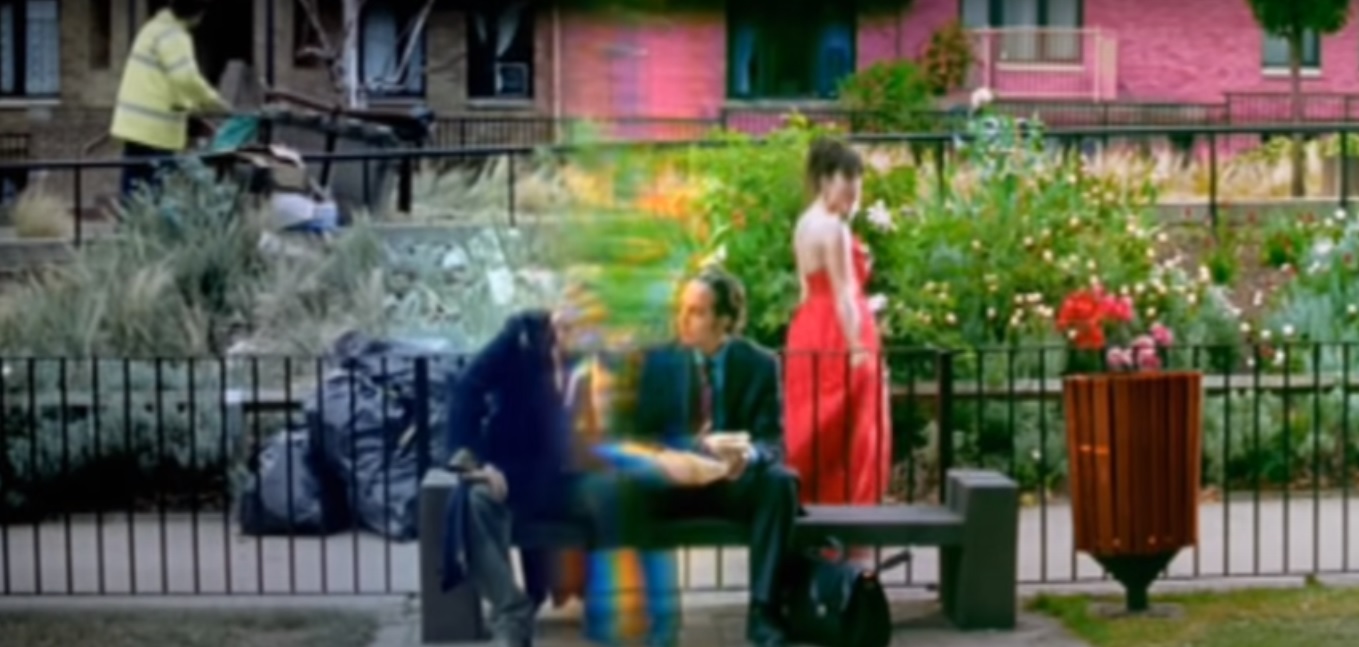
As Louis Armstrong sings in “La Vie En Rose,” the world looks more beautiful than usual when one is in love. When one falls out of love, the beloved looks like the grime-ridden reality of London in Lily Allen’s music video for “LDN.” In “A Lovely Night” from the La La Land movie soundtrack, the dueling speakers suggest a beautiful atmosphere is clearly wasted on two people who have absolutely no romantic feelings for each other. The lover’s internal state is responsible for the vividness of the external environment. However, the reverse is also true. The right lighting and the right soundtrack, as the film Liberal Arts suggests, contribute to one’s overall interior feelings of elation. Sweeping orchestral strings might induce relaxation and a lightness of being. Punk rock might produce an angrily forlorn lover. A disco strut might enforce carefree confidence.
Woody Allen’s Midnight in Paris tests this theory by giving its characters the textbook example of a supposedly romantic atmosphere: Paris, France. Gil’s major love interests in the film are both French, meaning the atmosphere likely to seduce a fresh-eyed and easily impressed tourist is an everyday backdrop for them. Gil also has a fondness for the rain. In Midnight in Paris, rain is often presented as an unexpected occurrence, a spontaneous downpour that catches the lover off-guard. This impromptu moment not only provides the chance of seeing rainbows, but it gives the lover evidence of who runs for cover and who is willing to walk in the rain with them. The woman best suited to Gil’s Image-Repertoire, Gabrielle, sees the romantic atmosphere as an album experience as opposed to choosing the right “single” of the moment. To her, rain is not simply a temporary disturbance to be avoided when possible, but an opportunity to see the beloved more clearly. It is a chance for rebirth, to get the conversation between lover and beloved started anew. Water is a metaphor for life after all.
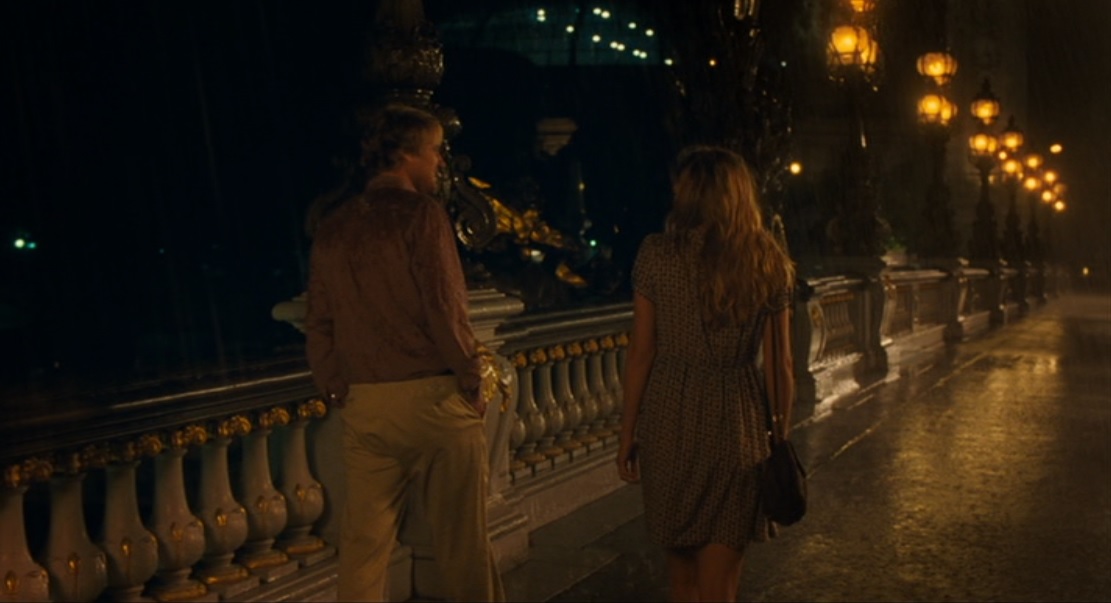
The beauty of Paris in the rain for both Gil and Gabrielle is similar to their joint affinity for Paris in the 1920s. Artists flocked to Paris in the 1920s and it flourished as a hotspot for creativity and free-expression. When it rains, it enhances the beauty of the city just the same. The streetlights shimmer in sidewalk puddles, images are doubled or displaced by refraction, or the dimensions of nearby buildings are distorted to cartoonish proportions. Mimicking the power of the beloved on the lover’s mind, water can play delightful optical illusions. By the end of the film, both Gil and Gabrielle are able to enjoy these distortions because they already recognize them for what they are. They can indulge in nostalgia without getting lost in the past.
“Reflection is certainly permitted, but since this is immediately absorbed in the mulling over of images, it never turns into reflexivity . . . I cannot hope to seize the concept of [love] except ‘by the tail'”
(Barthes, 59)
However, the lover cannot have an entirely out-of-body experience and observe love in an objective way. Much like the durability of the lover’s Image-Repertoire, water molecules have a tendency to cling to one another. They will join together to form round droplets, bound tightly together until the pressure becomes too great and the bubble bursts. An outside force comes seemingly out of nowhere to jolt the lover back into his own body, like a still frame abruptly dying as a brown autumn leaf in the middle of the movie reel projection. As Barthes says, the lover can only reflect on love through the absorption of images the beloved produces for him. He never has the opportunity step back and self-consciously say “this is only a film” because he is himself the projection machine.
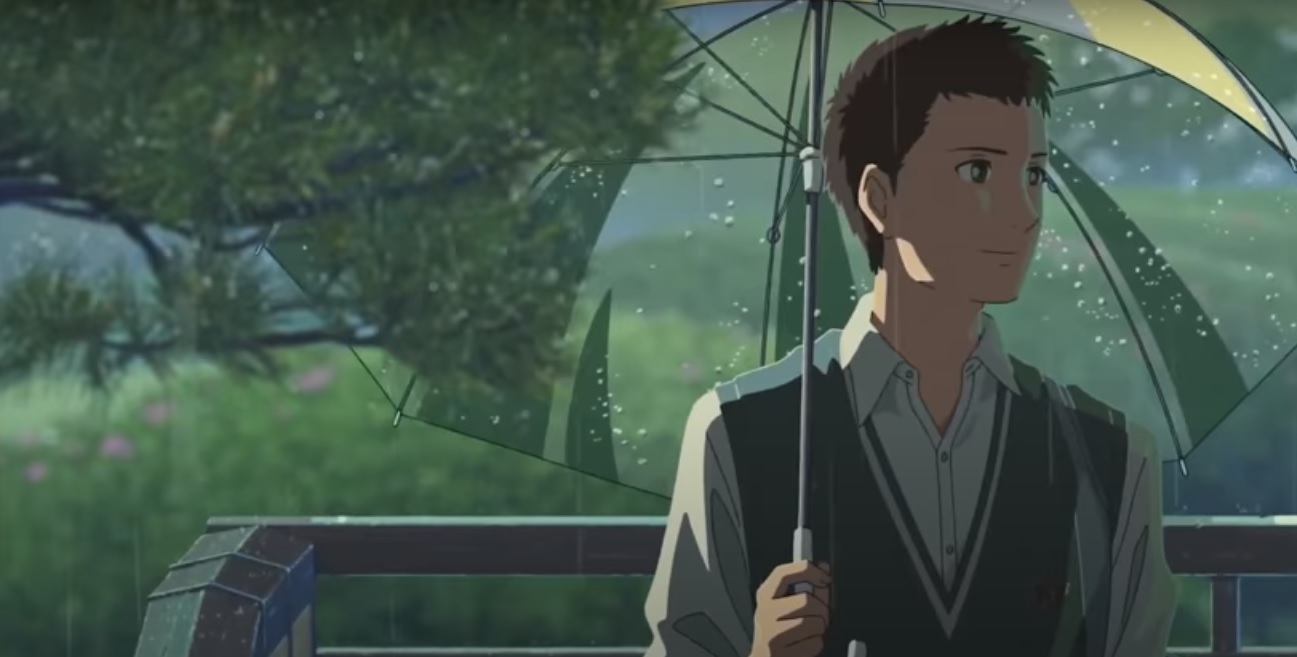
Does this mean perhaps rain (the downpour of funhouse mirror images of the beloved) is something to avoid getting overly-saturated by? The periodic rainy season shown in The Garden of Words provides Yukari Yukino and Takao Akizuki the opportunity to shelter in close proximity in a gazebo. These two are locked into an intimacy by the excuse of “bad weather.” Here, a rainy day is not an alternative type of weather to walk through. Contrary to pressing the “Skip” button, in favor of changing the setting for a more romantic one, rain provides the lover and beloved a delightful “pause” option. This is an insulated, dry-weather place where the distortional affects of rain cannot be felt. To view the beloved’s alternative world with enhanced clarity, it has to be enjoyed in short, intermittent bursts. It has the scope of the underside of an umbrella. Stray too far from the protective canopy and the lover risks getting drenched, turning blind again. As Jake Bugg plaintively sings in “When the Storm Passes Away,” the threat is the beloved moving out from under the umbrella as soon as he or she sees sunlight streaming in again.
Yukari Yukino:
“A faint clap of thunder
Clouded skies
Perhaps rain will come
If so, will you stay with me?
Takao Akizuki:
“A faint clap of thunder
Even if rain comes not
I will stay here
Together with you.” 12
The deceptiveness of the beloved is that he or she is both too close and always out of reach. Like falling raindrops, the romantic soundtrack the beloved provides for the lover can be felt but cannot be held in the lover’s hands. As The Beatles capture in the song “Here, There, and Everywhere,” the beloved is everywhere at once. This is because the lover’s world (the “Image-Repertoire”) is only in his mind, which has been saturated with images of the beloved. Everything the lover casts his eyes upon is colored by the beloved’s presence and it cannot be helped. The beloved ensures the lover’s rose-tinted glasses are in fact barely noticeable contact lenses.
Approaching the Abyss
“My fingers danced and swayed in the breeze
The change in the wind took you down to your knees
I got the good side of you
Sent it out into the blue” 13
Sometimes it is not as simple as a matter of weather forecasts. Sometimes the entire climate itself is intolerable. Sometimes it seems as though the beloved leads the lover to a precipice, like a siren luring sailors to crash their ships against the rocks. In his song “The Good Side,” Troye Sivan describes a situation in which the lover and beloved do not walk away with equal parts intact. As the beloved, the speaker expresses remorse at being able to leave in a better condition than the lover is able to. The lover here is approaching the abyss, a pit in which one cannot easily climb out. How is the beloved able to wreak such havoc on the lover, without necessarily intending to?
“The map of these exquisite points is known to me alone, and it is according to them that I make my way, avoiding or seeking this or that . . . I should like this map of moral acupuncture to be distributed preventively to my new acquaintances (who, moreover, could also utilize it to make me suffer more.”
(Barthes, 95)
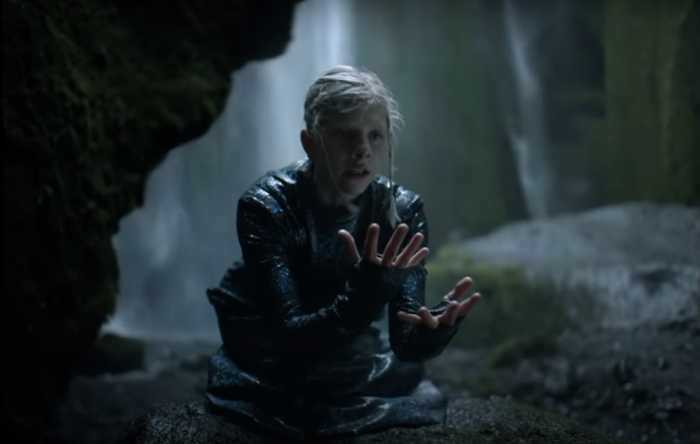
According to Barthes, the lover is a road map of certain pressure points the beloved is able to exploit whenever he or she likes. The lover could be a receiver of acupuncture or a Voodoo doll, depending on the beloved’s mood. In Aurora’s “I Went Too Far” music video, the singer plaintively prostrates herself, begging and crying out for love. She does so while being simultaneously exposed to the brutal elements of rain and wind, visibly trembling from the frigid cold. The singer languishes while exposed to the unsympathetic elements, as if saying “Look at how I suffer for you!” to the beloved.
“. . . the prison cell
where her husband sits staring at the moon
until he’s convinced it’s the last wafer
god refused him, let it hit his jaw like a kiss
we’ve forgotten how to give one another, hissing” 14
(Vuong, lines 24 – 8).
In this excerpt from Ocean Vuong’s poem “Self Portrait as Exit Wounds,” the body constitutes of the violence done to it. The lovers asks to be wounded, but only by the beloved and only because he allows it. If the kiss doesn’t land where it ought, it hisses past like a bullet grazing against the skin and out into the open air. As Barthes notes, if the lover feels the beloved “suffers without [the lover] being the cause of his suffering, it is because [the lover] doesn’t count for him” (Barthes, 57). Violence, the reality of body against body, is a reminder of the lover’s frailty against forces that conspire against his wish for steadiness and sturdiness in love.
This brush with death inspires one to live more fully. Harold of Harold and Maude frequently expresses a morbid fascination with death. It is heightened to such a level that it becomes darkly comedic. He drives around in a hearse, likes to attend funerals, and stages suicides in front of his mother whenever possible (whether or not she’ll bother to look up is another matter). Harold is a young man from a well-to-do background with a controlling but emotionally-removed mother. Maude, a Holocaust survivor, is an elderly woman who openly celebrates life because there was once a serious attempt to steal it away from her.
In one scene, Harold tells Maude how each staged suicide attempt is a way of recreating his first near-death experience, one which was not of his own making. It was at that moment in which his mother displayed her one and only public display of despair at the prospect of her son’s death, though the genuineness of her despair is left achingly unclear for him. Harold has been stuck and “muffled in an inert space” where his “language is not, strictly speaking, a discard but rather an ‘overstock’: what is not consumed in the moment (in the movement) and is therefore remaindered” (Barthes, 167-8).
Despite appearances, Barthes might argue (as well as Maude) that Harold is wholly unserious about suicide. He regards death as “an easy idea, a kind of rapid algebra” which is “grant[ed] . . . no substantial consistency” (Barthes, 218). Harold is in desperate want of a public display of care, a sign that someone would mind if he decided to leave the Earth for good (Barthes, 214). His staged suicides are a way of taking ownership of things left outside his control, something Maude replicates when she decides to overdose on pills for her eightieth birthday party (without Harold’s knowledge). This spontaneous decision on her part is perhaps a way of challenging Harold to accept spontaneous, off-script happenstances. Love, a matter of publicity, never suffers entirely in silence. One approaches the abyss so as to be pulled back.
Originality and the Unutterable
Relying on/Rejecting Clichés
Even though the lover dislikes existing in silence, the experience of love is often described as being unutterable. One relies hopelessly on clichés in attempts to describe it, turns of phrase which may have once been shocking and inspired but now barely elicit a shrug. One may roll one’s eyes or let out a groan of irritation, but many also can’t help falling for clichés over and over again. To help navigate the pitfalls of language, clichés intervene like finding the perfect Hallmark thank you note. They are tried and true. No different than a can of Coke to bring a smile or Apple’s latest iPhone, a cliché is a trusted product. Countless people before the lover have already instilled their faith in its success rate. Clichés are a brand one can trust.
“[D]ependency . . . in all its purity, . . . must burst forth in the most trivial circumstances and become inadmissible by dint of cowardice.”
(Barthes, 82)
However, the power of clichés require a joint effort at deception. If the beloved is made aware and not willing to go along with packaged romantic gestures, the lover’s attempts fall flat and he risks exile. A Face in the Crowd tackles this with the character of Larry “Lonesome” Rhodes. A former petty criminal, he is able to charm millions of people across the nation when he is given the opportunity to perform on a radio broadcast. Lonesome Rhodes is equal parts magnetic storyteller and incorrigible, narcissistic rogue. His personality is a double-edged sword, what is both responsible for his quick rise to fame and what is responsible for his equally-quick plummet to nowheresville. He commands a large portion of public opinion because they place their trust in him but he also derides them when he thinks no one is listening. By the end of the film, it becomes achingly clear to the audience that Lonesome Rhodes has not acutely learned Barthes’s understanding of the lover’s dependency. Rhodes wrongly assumes his power and ability to manipulate make him the almighty Beloved who can wreak havoc on the lover at will, but he is actually the desperate lover gesticulating for a bit of attention.
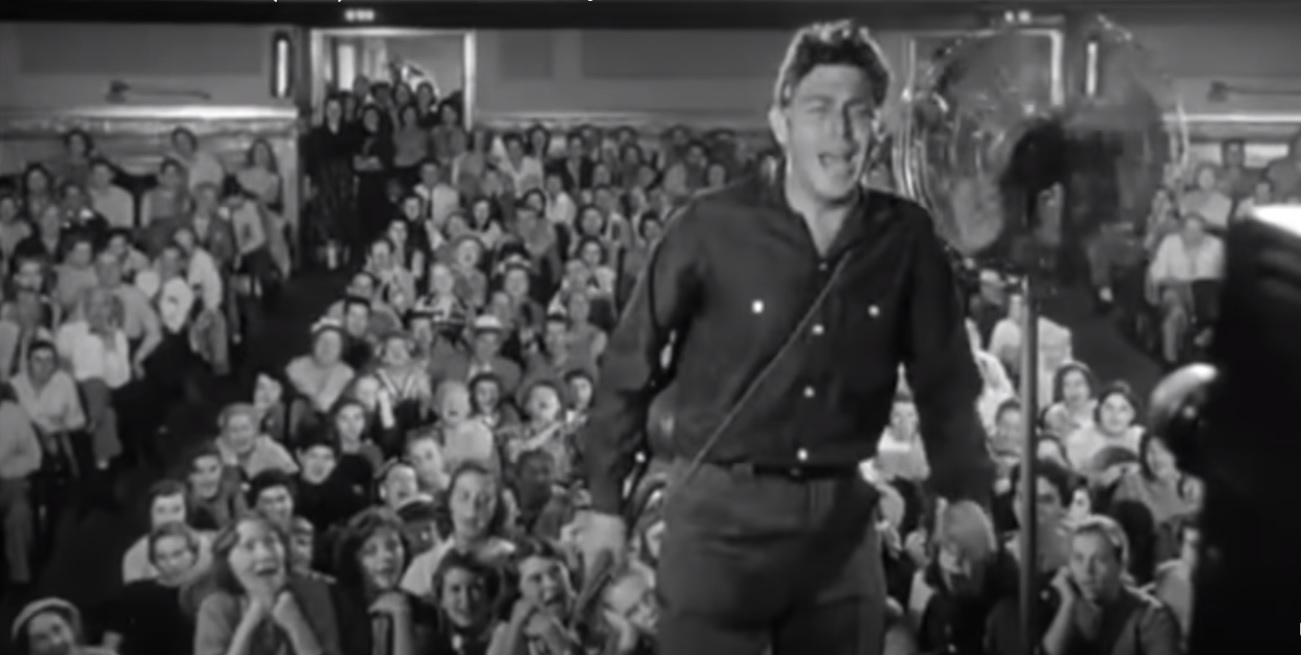
In a more comical depiction of humanity’s love affair with words, one need look no further than a sketch on The Carol Burnett Show with Alan Alda as a guest. In “Morton of the Movies,” Alan Alda plays a shy man on a date with Carol Burnett’s character. Each time after being overcome with desire for this “leading man’s” charm, Burnett soon witnesses the exact same line of dialogue Alda used on TV. This scenario suggests one needn’t necessarily be Clark Gable or Ryan Gosling. One need only act like him. This acting here consists in delivering the right line in the right way. When Burnett’s character confronts him about his fabrications, he resorts to yet other movie line as a means of apology in lieu of a genuine acknowledgment of his deception. It is framed as a comedic hopeless compulsion on his part. Both Burnett’s character and the audience realize that Alda’s character borrows everything from movies, whether it be a pick-up line or an apology or anything else.
William Shakespeare’s “Sonnet 130,” believed to be inspired by and dedicated to the mysterious “Dark Lady,” attempts a rejection of traditional romantic forms of poetry. No more pale, virginal beauties with golden-flecked tresses and blushing, apple-red cheeks. “Sonnet 130” is hardly flattering. One might think it the Shakespearean version of a diss. With the “black wires [that] grow on her head,” the speaker tells readers how “breath . . . from [his] mistress reeks” (Shakespeare 4, 8). 16 If this were a Tinder profile description, one would be hard-pressed to find any swipe-rights. And no woman, however little vanity she may possess, would relish the idea of being described in such disparaging terms. As admirable a break from convention as this may be, the speaker takes an obvious gamble. Will such a confident posturing of being unimpressed by his beloved’s looks serve to intrigue? Or will it merely serve as a distasteful insult, the kind of which show the lover has trespassed into the land of no return?
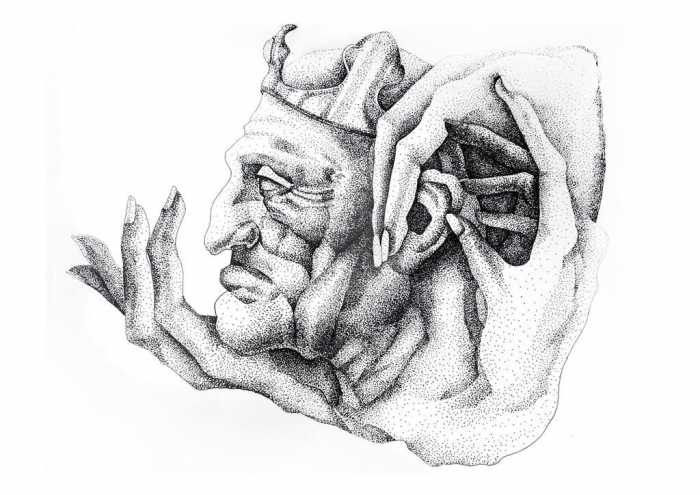
Perhaps one of the most dramatic and tragic consequences of putting sole faith in words plays out in King Lear. The daughter who loves King Lear best finds herself unable to declare so, which casts her out of her father’s favor and into the clutches of her scheming sisters Reagan and Goneril. Cordelia’s sisters have little trouble declaring their love for their father in hackneyed terms of him being “dearer than eyesight, space, and liberty” or finding themselves “an enemy to all other joys” (Shakespeare 62, 80). 17 Cordelia remains silent through all of these attempts to stroke his ego for personal advantage. It is only when she is pressed by her father into making a grand declaration that she decides to simply say she loves her father “according to [her] bond, no more nor less” (Shakespeare, 102). 18 Cordelia begins the play as King Lear’s favorite daughter by default, but it takes only a moment for her innate charms to dull in her father’s eyes and for her to be exiled her from her father’s affections. Cordelia refuses to submit to clichés, dangerously attractive words that perhaps make one place faith in the shadows of real things. But this move comes at a cost.
Making Contact
If clichés are mere shadows, how does the lover make contact with the beloved? In Wall-E, the movie’s namesake robot educates himself. He is particularly fond of the musical Hello Dolly, which he uses to inform himself about the specifics of human behavior. As he is seemingly the only remnant of operational humanity left on Earth (aside from a persistent cockroach), Wall-E has no outlet with which to “give” these romantic gestures to anyone or anything. He simply lets them out, releasing them into the air like an exhale. Alone in his room, it’s an almost self-soothing gesture. It perhaps mimics the way an inexperienced youth might try out “nice to meet you” lines in front of a mirror or perfect the art of kissing with an ever-patient and ever-reliable pillow. Wall-E appears curious about this human mind that created him, but of which there is no real-world application or understanding.

When Eve shows up on Earth, Wall-E thinks he has finally found his chance. Like two kids on a playdate, Wall-E is eager to show his new friend his collection of toys and memorabilia. By trying to impress the beloved in this manner, the lover is essentially trying to make contact by offering up little portions of himself as an entreaty for the beloved to reciprocate. With each successive knick-knack, Wall-E announces “here I am.” Treatment of said objects is an experiment that is indicative of how the beloved might treat the lover. Eve does not have the same relationship to man-made creations such as Rubik’s Cubes or egg-beaters as Wall-E does. Though evidently curious about these confounding items, she unintentionally breaks or misunderstands whatever Wall-E shows her. Wall-E mistakenly thinks simply showing her what he loves will make her understand automatically. He tries to abdicate the lover’s responsibility to objects to carry the conversation forward. However, such a tactic only has a chance of succeeding when the beloved can correctly interpret them as surrogates for the lover.
The opportunity for practical execution of these methods of socialization first arrives when Eve is a passive participant. She becomes dormant after her systems detect the plants she’s been searching for and during this period, Wall-E looks after her. He protects her from the rain, accessorizes her look with a string of Christmas lightbulbs, and they watch the sunset together (well at least, he does) as though they were dating. Is all of this merely the execution of clichés? Wall-E, a robot mimicking human behavior, seems no different from the lover who may parrot romantic lines in favor of a desired result from the beloved. This scene essentially illustrates a repetition of what Wall-E routinely did alone, before Eve’s arrival. In this case, the beloved is both a required participant and an after-thought to the lover’s romantic gestures that take center-stage.
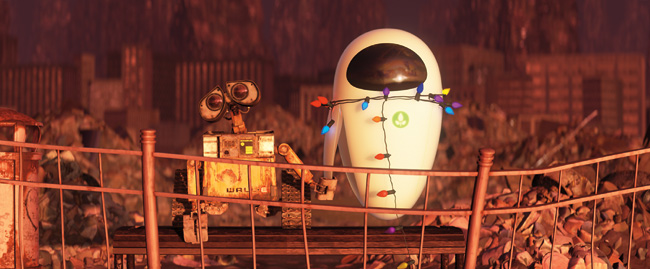
Perhaps the level of artificiality involved depends on how well the lover has absorbed the lessons provided. How puréed is the meal to be digested? When a meal resembles the living organisms killed to make it, the eater is reminded of the labor and sacrifice involved. Food does not appear out of thin air. If the bones protrude from the soup and the sinews show, the greater the chance of revulsion from the consumer. Despite physical appearance, Wall-E’s humanoid nature is something he’s adopted for himself. His major glitch in the film is when he suddenly starts behaving “like a robot,” when his internal being is too well-aligned with his exterior façade. Love has no obvious utility, especially in robots. A robot’s job is consistency, of gaining assurances by following the same patterns without the messiness of new data inputs.
Subsequent intimacy between these two robots in Wall-E is often conveyed with the simple iteration of each other’s names (just like “I love you” has no inherent meaning) and “kisses” conveyed as static shocks of electricity in the air between them. Though romantics are familiar with love being ascribed the quality of electricity, visible jolts of electricity in robots are often used to convey glitches. It should not be visible because it would be a sign of something gone wrong. Electricity is wild and untamed, but illustrates contact between lover and beloved. If he does not wish to incinerate himself on the spot the beloved has tacked him to, the lover must serve as a conduit for which the beloved’s energy can channel through him before being released. Perhaps inhabiting the space between being unaware of one’s reiteration of clichés and consciously trying to stop the flood of incoming voices whenever they try to intervene and interrupt attempts at “original thought” is where the lover is at his or her truest state.

“I cannot make speeches. If I loved you less, I might be able to talk about it more.” 20
From “Emma”, 2020 film adaptation
Touch intercedes where words fail by mimicking the muteness of intense feelings. Jane Austen’s Emma Woodhouse is a character prone to constructing matches between people, like a master puppeteer, as opposed to self-reflection. Mr. George Knightley avoids flattery for flattery’s sake and is perhaps more concerned with mastering himself than others. When Emma is vain, he tells her so. When she is unkind, he tells her as much as well. Since words are likely to cause sparring matches between them, touch must supplant it. It is the only language they can agree upon. Since relations between the sexes in Emma involves far more rules of decorum and issues of civility, touch is conceivably more potent than the casualness of modern day counterparts as well.
The 2020 film adaptation of Emma exhibits this in a dancing scene between Emma and Mr. Knightley, where they are the only pair without gloves on, driving the sexual tension between them. The slightest hint of physical intimacy is charged because of its rarity and its indiscretion. Mr. Knightley even manages to touch the small of her back as well. For Barthes, the individuals in this scene are bursting at the seams with inexpressible meaning for which “there is no acting out: no propulsion, perhaps even no pleasure – nothing but signs, a frenzied activity of language” (Barthes, 68). Touch has a startling sameness to it, a universality that zips at light-speed between regional dialects and assures the lover is left dumbfounded in how to properly respond to what’s being asked of him. Contrary to the lover’s wish to gesticulate and perform, an act which aligns better with words, there is no release via physical contact. If Emma and Mr. Knightley are forced to engage in touch as opposed to speech, the encounters between them are like repeatedly shaking a carbonated drink without unscrewing the bottle cap to relieve the pressure.
What happens when touch is the lover’s only option as a means of expression? In both The Miracle Worker and Marie’s Story, a blind and deaf girl is closed off to the world until a teacher comes into their lives and recognizes how to communicate and engage with them. In both films, the girl is surrounded by well-meaning family members who are overwhelmed by her needs and thus cave in to every little demand. She becomes a stray animal, mangy with a ravenous appetite and one who bristles whenever this energy is contained by hair brushes, form-fitting dresses, or eating utensils placed in her hands. Touch alone only adds an extra layer of language for the lover to discern the meaning. Like absorbed electricity, these girls only consume what’s given with no idea of “relationship.” They lack the lover’s outlet of performing love as an act. In The Miracle Worker, when Helen Keller makes a breakthrough in her lessons with Anne Sullivan and sees the connection between hand signs and the objects they represent, she shares an emotional moment with her grateful parents. However, Helen’s focus of deep gratitude (a potential prerequisite for love) quickly shifts from her mother to the teacher responsible for giving her this newfound and efficient language with which to interact with the world.
Both films illustrate the strong connection between love and learning. Learning always requires a relationship via the interaction of dominant and submissive energies. There is “the one who knows” and “the one who wishes to know,” echoing the lover’s wish to understand and therefore navigate the beloved. The effects of touch-deprivation is obvious in infancy, where the child’s ability to rely on his or her mother’s protection correlates with levels of anxiety, strength of immunity, and long-term physical development. As Michelangelo’s famous fresco painting “The Creation of Adam” shows, touch is imbued with life-building forces and is an act of remembrance. Demonstrating one’s physical presence to another through touch ensures bonds of trust and generosity by implicitly saying: “I am here and recognize you are also here with me.”
Physical contact reminds Helen Keller and Marie Heurtin that they are living beings, capable of complex thoughts and emotions, and that they are meant for more than just stuffing their mouths with sweets and smashing plates in fits of rage. Their relationships with teachers who understand them allows them to emerge from the darkness into a world of light and language and meaning, both figurately and literally. When Bruno and Schmuel clasp hands and won’t let go in the gas chamber (an environment they are too young and innocent to realize they are now trapped in) in The Boy in the Striped Pajamas, it is a solemn vow not to abandon each other when faced with perplexing circumstances.

Touch is also potent in the world of The Artist. Shot as a silent film about the transition between silent films and the introduction of sound, the relationship between George Valentin and Peppy Miller is conducted with minimal dialogue (which is shown only through intertitles and never heard by the audience) and touch must take the reins instead. The film accurately illustrates the lover’s apprehension of the external world of speech. Like the “talkies” are to George, the societal discourse of love is loud and disorienting and appears to rob the lover of his own distinct voice (which he is in desperate need of in the presence of the beloved). When repeatedly shooting the dancing scene with which Peppy has a small role, it becomes more and more difficult to film as the real-life intimacy between George and Peppy makes itself apparent.
“Every contact, for the lover, raises the question of an answer: the skin is asked to reply.”
(Barthes, 67)
When one cannot touch the beloved, objects will have to suffice. In one particular clip in The Artist, the starstruck ingénue, new to Hollywood, enters movie star George Valentin’s dressing room. While there, she enacts a romantic encounter with him by using his suit on the hanger as a prop and a substitute for the man himself. She slips her arm through one of the sleeves and holds her own body close, smelling the scent of him on the fabric. Peppy’s actions not only exhibit the desire for autonomy in the romantic encounter, where she is not dependent on the beloved’s reciprocity, but also the chance to merge identities. When she plays both the tall, dark, and handsome stranger and the young and beautiful maiden caught in his embrace, she is both “lover” and “beloved” with not a line of distinction made between the two.

Objects crafted for the lover and the beloved may also be pacts, a physical manifestation of an invisible bond between two people. A written legal document as sign of a contract is maybe too clinical and removed from the intense emotionality a lover would wish to partake in. Moved and overcome by her beauty, Gimli the dwarf of The Lord of the Rings is happy to be simply in the beautiful elf Galadriel’s ethereal presence. However, when pressed further, Gimli humbly asks for a single strand of her hair (if she is so moved as to bequeath it to him). Perhaps touched by his courteousness and gentility, Gimli is graced with three strands of Galadriel’s hair as a parting gift. It is not just a token of admiration, but a sign of respect between elves and dwarves. This illustrates declarative love within the public sphere, but what about the lover’s preferred state of the private sphere?
In the world of Lisa See’s Snow Flower and the Secret Fan, traditional marriage between man and wife is for economic and reproductive purposes only. A laotong (“old sames”) relationship, a strong sisterly pact, is able to supply the demand for an emotional support system of a fellow woman in a similar position, something the husband would be unable to satisfy. Lily and Snow Flower exchange letters to each other on fans using their own secret language. Hand fans here are both a substitute for traditional letter-writing and the construction of a barrier against the hostile outside world. Despite being aesthetically decorative, hand fans are protective accessories that partially shield both the beloved’s face and time wasted by unwanted advances. In the western tradition, hand fans could be like air-traffic control signals, displaying various levels of interest depending on how the beloved held the fan and how much of the face was visible to the lover. For Lily and Snow Flower, these hand fans join the realms of touch (fans being an extension of the hand) and the written word (via the secret messages they contain).
“The quality of the gold is poor. The paper is as thin and transparent as an insect wing. See how the sun shines through it? We need something that will show for all time the precious nature and durability of our relationship.” 23
(See, 50)
When they initially create the relationship pact, Snow Flower suggests the the material used to write the promise is just as important as the promise itself. If the parchment is thin, transparent, and easily ripped, the promise might easily wither away as well. If the lover believes the bond with the beloved is forever, shouldn’t the material it’s constructed from be similarly indestructible . . . as if from a diamond, perhaps? The written contract is not just a symbol of the promise. It is the promise itself.
In a passage from Anne of Green Gables by L.M. Montgomery, Anne Shirley is threatened with being parted from her kindred spirit and bosom friend, Diana Barry, after they get in trouble. In an encounter unknown to and forbidden by their respective guardians, Anne and Diana meet outside. They soon declare their eternal devotion to each other, a pledge which culminates in Anne keeping a lock of her friend’s hair to seal the pact.
“Diana gave me a lock of her hair and I am going to sew it up in a little bag and wear it around my neck all my life. Please see that it is buried with me, for I don’t believe I’ll live very long.” 25
(Montgomery, 132 – 3)
For the intensely romantic (and at times overly-dramatic) Anne Shirley, this memento of her friend is no mere trifle. Though invigorated by this friendship, Anne fears she will die without Diana. An object, though comforting and soothing, is a hopelessly insufficient substitute. In fact, it can be a painful reminder of the beloved’s absence. Anne sets up a grim and guilt-inducing scene for the perpetrators of their separation: This lock of her dear friend’s hair will be the only companion for Anne’s lonely corpse when she is left six-feet underground.
If the lover always lies in waiting, then the lover is also an object. Barthes describes the lover as being always “at hand, in expectation . . . in suspense – like a package in some forgotten corner of a railway station” (Barthes, 13). The lover cannot move unless the beloved gazes upon him or picks him up off the ground and animates him into being. The lover must relate to other objects, other inanimate things who the beloved might casually brush past and animate before discarding them and leaving them wanting. Unlike the vibrant people of the world, only objects may have a sense of what the lover’s state feels like.
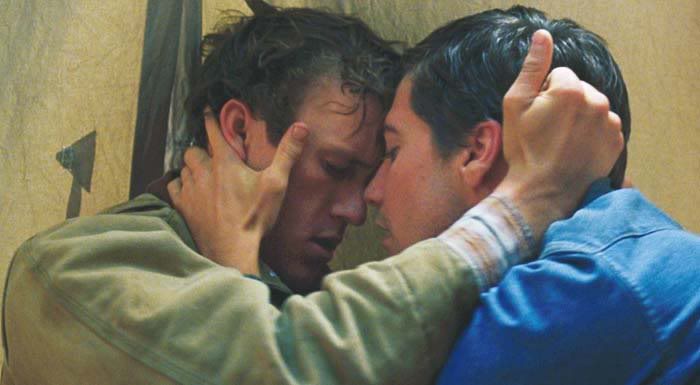
Barthes suggests clothing is one of the most intimate objects there is for the “lover” and “beloved” relationship. Clothing contains scent and texture and its nearness to the beloved is enviable to the lover. In the final scene of Brokeback Mountain, Ennis privately mourns Jack’s death by going through his clothes and clinging to the only things left of the man he loved. For Barthes, it is also a crime scene in which “there were always the slaughtered, embalmed, varnished body, prettified in the manner of the victim . . . embellish[ed] that which, by desire, will be spoiled” (Barthes, 127). In a romantic-sexual encounter, the woman beautifies herself only for clothing to be quickly ripped off by the man wishing to conquer her.
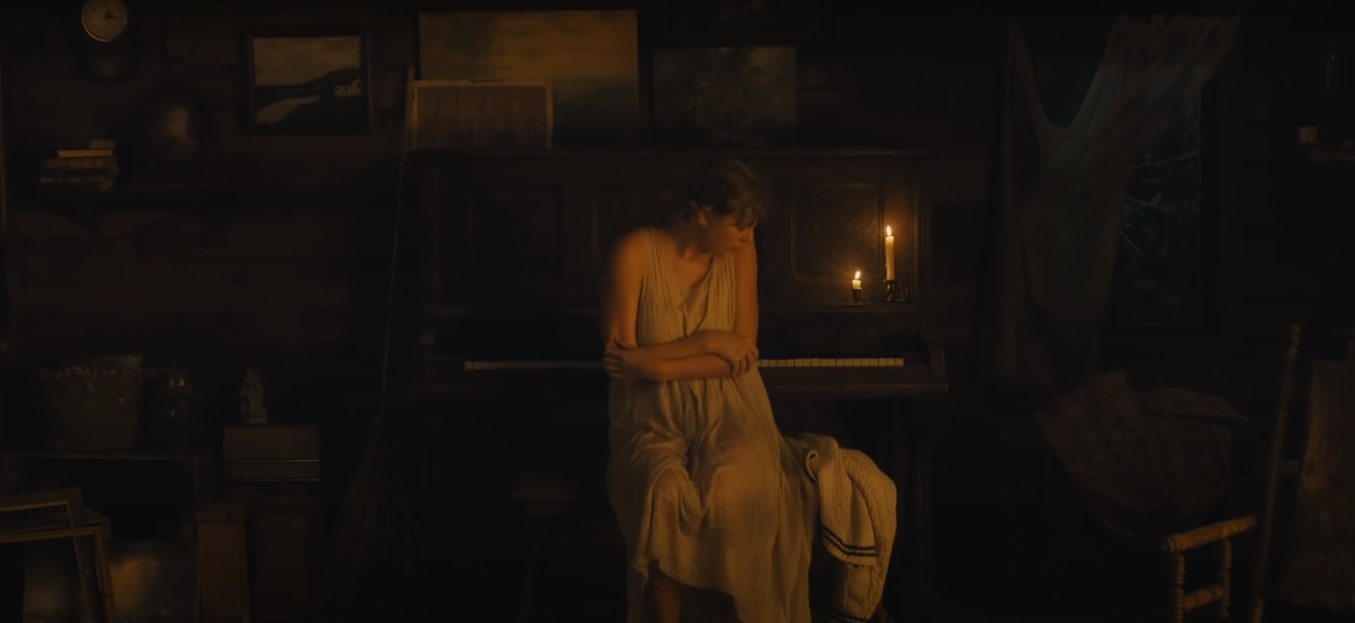
Taylor Swift assigns herself the role of the discarded item of clothing as the narrator in “Cardigan.” The narrator alternates between the idea of a cardigan as being an almost nostalgic source of comfort to being something easily forgotten. She is not unlike the Velveteen Rabbit whose “realness” depends on the amount of love poured into him or the toys left behind in the Toy Story franchise after the children have either grown up and forgotten them or accidentally lost them. In The Young Victoria, Queen Victoria’s style of mourning for her late husband, the Prince Consort Albert, is a rebuttal of an earlier scene that showed Albert’s dismissal of keeping unnecessary personal mementos post-mortem. When he is alive, Albert puts a stop to a tradition of setting the table for a long-dead King. An empty seat could never enjoy the lavish bounty of food laid out before it. However, when Albert passes away, Victoria wears black clothing long after the respectable mourning period and lays out his clothes everyday (though he obviously can no longer make use of them).
It doesn’t matter what you do . . . so long as you change something from the way it was before you touched it into something that’s like you after you take your hands away. The difference between the man who cuts lawns and a real gardener is in the touching . . . the lawn-cutter might just as well not have been there at all; the gardener will be there a lifetime.” 26
(Bradbury, 156 – 7)
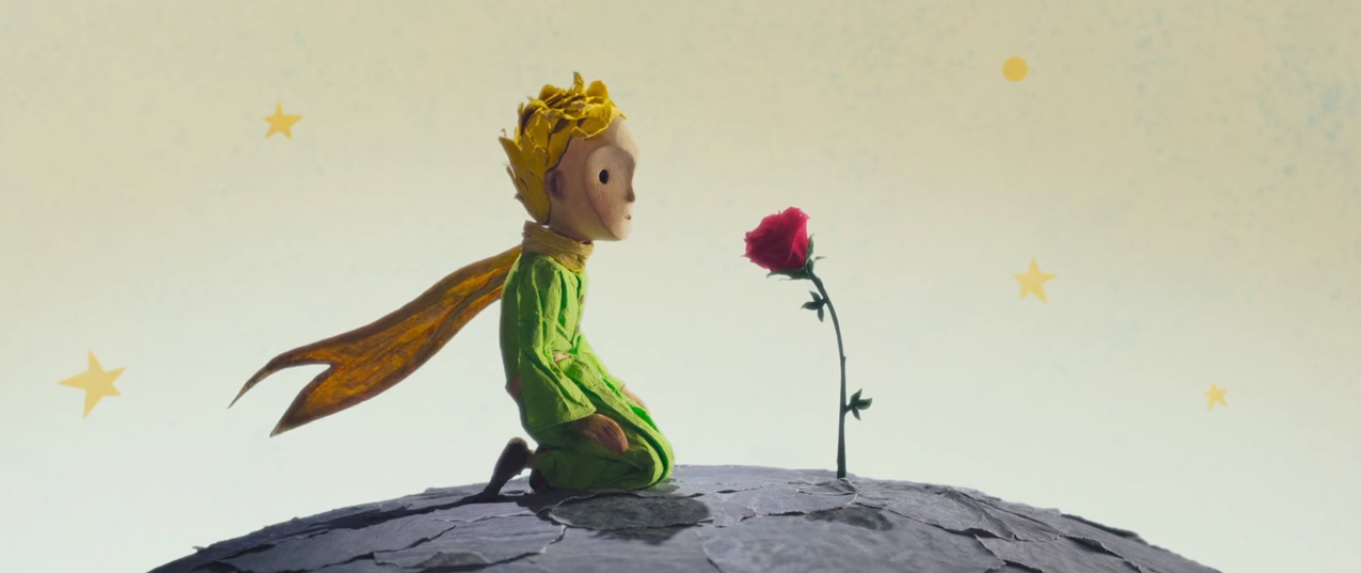
This passage from Ray Bradbury’s Fahrenheit 451 speaks of the importance on the beloved’s touch, the impact of which continues even in death. The Little Prince initially takes this “reap what you sow” garden analogy quite literally. In The Little Prince, the book’s namesake is able to grow a rose on his home planet, an asteroid called B 612. He takes great care to look after her, despite her increasing demands. He is disheartened to learn during his travels that she is but a common rose (as commonly found on Earth as she is rare on asteroid B 612). However he soon learns that it is his love for her that makes her special because she is “his” rose. The lover’s guardianship (perhaps as opposed to ownership), even in the temporal sense, is what lends meaning to the beloved.

Pushing Daisies challenges the notion of making contact between lover and beloved to the extreme. It pushes the lover’s connection to the beloved through objects from beyond the grave and into the afterlife. Ned can revive corpses with the touch of his hand and render them dead again with another touch. The trick only works once so Ned must be careful in regard to touch. When he revives his deceased childhood sweetheart, Charlotte (known by her nickname “Chuck”), it is the one and only time he can touch her if he wants her to remain alive.
The two devise all sorts of loopholes with which to contrive intimacy with each other. Beekeepers’ suits for dancing, plastic wrap for kissing, and winter gloves for hand-holding. Not only can the lover only conduct a relationship with the beloved through objects, but this relationship is an active one. Traditionally speaking, objects are only potent because they easily conjure the lover’s use of his Image-Repertoire through the aid of physically-bound memory. Objects say: “Here is a shadow of your beloved. And here. And here too.” In Pushing Daisies, objects are pushed into the jarring realm of the present tense as a vehicle for understanding between lover and beloved. Chuck is not some distant memory locked away in objects for Ned to interact with at his own pace, from time to time. Ned proves his love to her in an active sense by limiting his contact with her as only being possible through objects, despite his ability to physically reach out and touch her in the here-and-now. Objects are not just mere symbols here, but all-important evidence of the lover’s sincerity of intention towards the beloved.
Proof of Love
Empty Words?
Destructive touch is at times preferred to words, which in their immateriality and lack of visible location suggest the beloved cannot wholeheartedly trust them. It simply isn’t enough to claim to love because as Tessa Violet says in “Words Ain’t Enough,” they can be merely pleasant placeholders that only serve to soothe the lover’s lingering anxieties. Gabrielle Aplin’s “Sweet Nothing” subverts the romantic phrase. When a lover whispers “sweet nothings,” it is usually taken in an entirely positive light. However, Aplin uses the phrase to express disappointment with flattering, but ultimately empty, compliments. Barthes’s acknowledges the failures of language as well, especially as far as the lover is concerned.
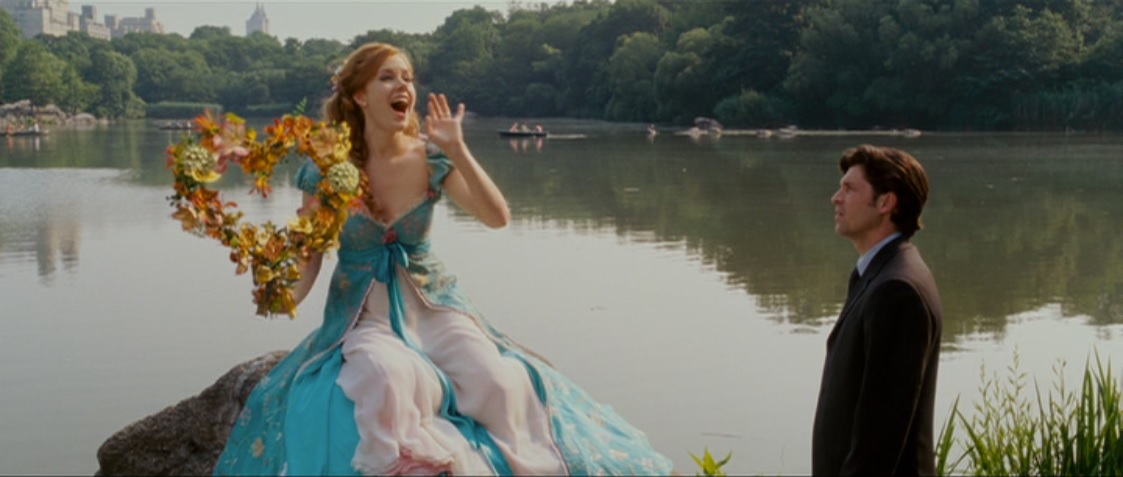
However, it is not enough to simply dismiss the importance of compliments and flattery and other words used to signal admiration. In Enchanted, Princess Giselle makes an impassioned case for the importance of “sweet nothings” on Robert’s behalf. Robert is bit more cynical and pragmatic when it comes to love, believing it is enough that he is a long-term relationship with a woman whom he intends to marry one day. When she bursts out in her musical number “That’s How You Know,” Giselle contests that one must be reminded over and over again, in little and seemingly trivial ways that one is loved. It is not enough to assume and take someone for granted.
Against the express wishes of his friend Jacob Kowalski, Newt Scamander of the Fantastic Beasts series compares Tina Goldstein’s eyes to a salamander’s. As a magizoologist, this is perhaps the height of adoration. Especially in Fantastic Beasts: The Crimes of Grindelwald, Newt makes it clear (however implicit) that he is in love with Tina though their lives have gone in different directions since the events of Fantastic Beasts and Where to Find Them. Contrary to Newt’s awkwardly endearing nature, Jacob Kowalski recommends Newt make the standard, formulaic declarations of love (“crazy about you,” “lost sleep,” “can’t live without you,” etc.). Comparing a woman’s eyes to a little lizard-like amphibian would seem to be the R.M.S Titanic of all romantic gestures, i.e. destined for disaster.
With Jacob’s approach, one could easily swap out either Newt or Tina with any random stranger and the delivery would be just the same. What any man might say to any woman. That Tina anticipates Newt’s attempt at poetic comparison before he is able to utter it suggests the intimate link between the two. Only Newt could have said this as an attempt at romantic overture and only Tina could have understood its meaning. The same could be said for a scene in Stranger than Fiction, when I.R.S. auditor Harold Crick offers baker Ana Pascal “flours” (as opposed to the usual of “flowers”) as both an apology and as a symbol of his romantic interest. How well these gestures are received is directly proportional to how much both parties are able to correctly interpret these obscure signs. Like a Wi-Fi network password, connection hangs on a single keyword. A moment of understanding is a promising sign when gibberish becomes the native language.
This requires a willingness to shed the noble garments of the romantic figure. The chief problem for Mumble in Happy Feet is his lack of “Heartsong,” something evident from his youth. One’s entire existence is built mainly upon one’s ability to eventually secure a mate through serenade. Mumble can dance as opposed to sing, but this method of expression does not translate in the same way a song would. No matter the love he may have in his heart for Gloria, shuffling and kicking one’s heels is a muted proclamation.
What is ironic here is that Mumble’s attempts at singing are what real-life emperor penguins sound like. What is unoriginal to movie viewers (like the public discourse on love) is startlingly and perhaps unappetizingly original to the movie’s characters (much like the beloved). This is a disheartening state of affairs for the lover because his only real concern is aligning himself with the beloved’s vantage point. He has little regard for similarity to public discourse because he is already well-aware of this sad fact. He is a failed lover like many before him. What use is there in knowing that? According to every other emperor penguin he knows, Mumble’s lack of singing ability means he has no chance of proving his love. This, according to Barthes, is one of the lover’s greatest fears.

When words fail, the lover must reveal his exhaustion via the body. Cold sweats, sleepless nights, spontaneous fits of uncontrollable sobbing convey the beloved’s affect on the lover in an immediate and visceral manner. As Barthes notes, “[a]morous anxiety involves an expenditure which tires the body as harshly as any physical labor” (Barthes, 203). In Sam Raimi’s trilogy of Spider-Man films, Peter Parker is forced to keep a great deal of heartache to himself because revealing his secret identity as a superhero puts his loved ones at risk. When Peter does unveil his emotions, his tears come as though he has accidentally left the faucet running.
This act of expression is often especially tricky for men, for whom tears are often unfairly seen as signs of weakness. According to Barthes, Peter “follows the orders of the amorous body, which is a body in liquid expansion, a bathed body” (Barthes, 180). In the film adaptation of Haruki Murakami’s Norwegian Wood, Toru Watanabe sobs uncontrollably after learning about Naoko’s death. However, he is not simply mourning Naoko, but Kizuki (Naoko’s boyfriend and Watanabe’s best friend) before her. Watanabe grieves for a part of his past, memories of his formative years, that have now been locked away forever with the death of two people he felt closest to in all the world. In this scene, he is alone on a rocky outcrop as ocean waves crash around him. It is as if he is sending his tears out invisibly, like a river empties unremarkably out into the sea. Tears become doubly performative, as evidence for both the lover and beloved of the gravity of this experience. Since the beloved he grieves for is not physically present, the film’s audience becomes a surrogate witness to his pain.
“I make myself cry, in order to prove to myself that my grief is not an illusion . . . I give myself an emphatic interlocutor who receives the ‘truest’ of messages, that of my body.”
(Barthes, 182)
Getting Directions
When it comes to love, one certainly requires a road map or G.P.S system to navigate. However, that would suggest one is entirely in charge of the destination. Habits and algorithms take a backseat to a free-floating pointer finger. Like a pile of hands gliding over the wood of a Ouija board, everything happening seemingly at random. However, Barthes would argue that those one is surrounded by, friends and foes alike, play as much of a role in regard to who one fixates on as the individual in question. To avoid the sharp pangs love inflicts on the body, the lover will seek guidance from the outside world in an effort to ensure his eventual success. Which route has the least amount of detours, pot holes, aggressive fellow drivers, police activity, etc.?
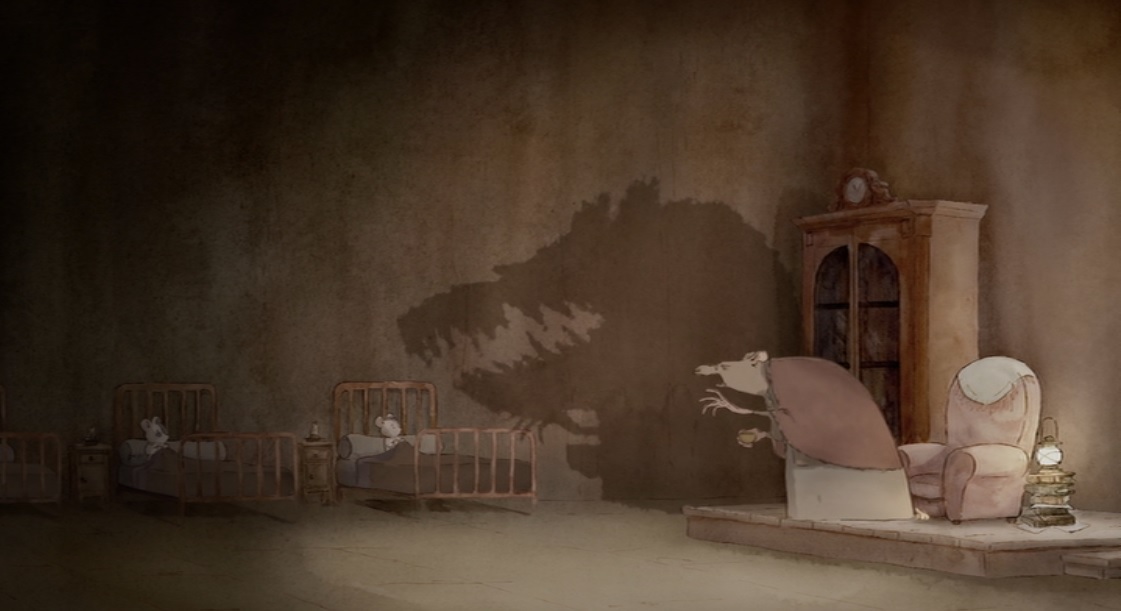
Both the films Ernest & Celestine and How to Train Your Dragon demonstrate how the world provides one with instructions on what is considered “lovable” and what is worth “loathing.” In the world of How to Train Your Dragon, it is dragons whom humans must fear. In Ernest and Celestine, bears and mice are sworn enemies. These feelings are instructed at a young age, so much so that they would never question these reactions as anything other than natural. The premise of To Sir with Love consists of a man, Mr. Mark Thackery, attempting to teach his students what is worthy of loving (disguised as academic attention) and what is not. He has to redirect and refine their anti-authority hooliganism into maturity by focusing on the basics of cooking, dressing up, and approaching substantial relationships.
The great tragedy of Thomas Hardy’s Tess of the D’urbervilles is that Tess puts her faith in people who do not have her best interests at heart. These errors can be easily rooted out in language. Tess D’urbeyfield is told her family is related to the noble D’urbervilles. She is sent off on her own to the D’urbervilles’s estate to improve the lowly D’urbeyfield family fortune, not realizing this trip begins the downfall of her reputation rather than an upswing. Not even the man not-so-subtly-named “Angel” can save her. The novel suggests relying too much on the suggestions of the external world is fatal for the lover.
“I know that I occupy the same position as my rival and that, therefore, all psychology, all value set aside, nothing can keep me as well from being, one day, the object of disparagement.”
(Barthes, 66)
Why does the lover risk using this sometimes faulty navigation system at all, even at the sublimation of his own instincts and judgments? The lover wants to devise a precise battle plan to avoid falling out of favor in the beloved’s eyes. He is aware this wish is ultimately doomed because he witnesses the example of other third-parties who express similar interest in the beloved. If others want the beloved as well but fail to secure her, it becomes a predictive mirror for the lover as to what dangers may await him. If others fail using similar romantic methods to himself, the lover envisions a sameness in identity between himself and other rivals for the beloved’s affection. Though he seeks external influence upon his battle plan, he must ultimately be singular (and not doomed to the garbage pile of the group) in the eyes of the beloved.
In Some Like It Hot, Joe and Jerry both have their eyes set on Marilyn Monroe’s “Sugar Kane.” However, both of them have a price on their heads and are dressed as women to hide from the gangsters pursuing “the loose ends” of their recent killing. Both Joe and Jerry are saxophone players, a red flag for Sugar as these types of men have been nothing but a series of romantic disappointments for her. Though both Joe and Jerry use their newfound womanhood as a means of getting close to her, neither of them can fully pursue Sugar without the threat of being discovered. To combat this issue, Joe and Jerry eventually take alternate routes of gaining Sugar’s attention.
Joe retains his womanizing ways, eager to play (in his spare time) the handsome millionaire Sugar Kane often dreams about someday marrying. Jerry takes a different approach, by remaining a “gal pal” whom Sugar can confide in and trust, and protects her from his potential romantic rivals. Though Jerry likely envies Joe’s connivance to develop another male alter ego and wishes to dissuade Sugar from having any interest in Joe either, this ulterior motive soon softens. While dressed as a woman for a prolonged period of time, Jerry soon sympathizes with Sugar as though he were a fellow woman and warning her against a wolf in sheep’s clothing, i.e. a man who will take far more than he gives. Though Jerry is the one who first starts to care for Sugar as a human being, he is not the one who ends up with Sugar by the film’s conclusion.
Both Harry and Sally of When Harry Met Sally perhaps engage in romance’s version of Agatha Christie’s And Then There Were None. Harry and Sally are always the two remainders leftover. Perhaps nothing illustrates this better than their double date with their respective friends. Harry is intended for Sally’s friend Marie. Sally is intended for Harry’s friend Jess. This initial relationship, carefully selected and constructed by Harry and Sally, is nonchalantly refuted by the sheer existence of Harry and Sally’s already-well-established chemistry. When it becomes apparent to both Harry and Sally (as well as viewers) that these new relationships will begin and end at the first date, Harry and Sally make eye contact with each other.
The film seems to suggest that something which is “meant to be” can overcome all sorts of obstacles. A square peg cannot be forced into a round whole, no matter how determined one is or how frustrated one becomes. It can surmount time apart, bitter disagreements, bad first impressions, and all the “secondary” (or transitional, as Sally Albright might say) people who aren’t and could never be the “right fit.” This a reminder of the lover’s fixed place, his feeling of a lack of choice in love. No matter how much Harry and Sally try to direct their dating lives using their own volition, others always apparently know better than they do and steer them back on course whenever they go astray. Other people are an aggravating reminder to the lover of his own blindness, a quality which can only be remedied when he returns to the presence of the beloved.
“The body which will be loved is in advance selected and manipulated by the lens, subjected to a kind of zoom effect which magnifies it, brings it closer, and leads the subject to press his nose to the glass.”
(Barthes, 136)
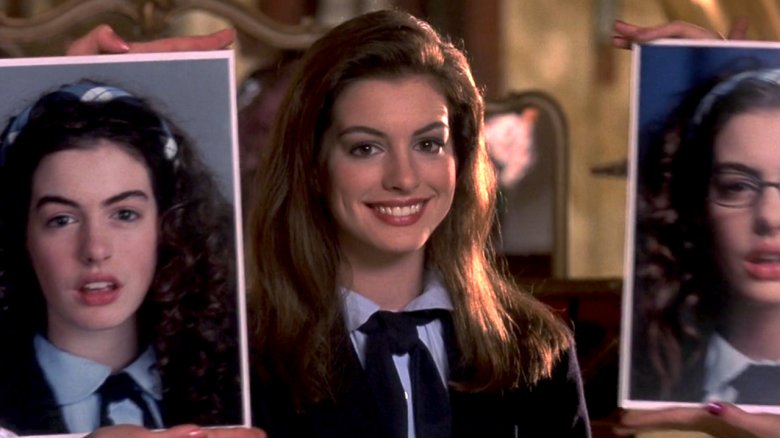
In The Princess Diaries, the viewers and those in the film who belong to the “in-crowd” are encouraged to love the “new and improved Mia” because of her newly elevated status as the Princess of Genovia. Gone is the frizzy hair, the thick glasses, and thick eyebrows. The only thing Mia can’t quite change entirely with a little bit of makeup and a few etiquette lessons is her propensity for klutziness. The same deflection technique occurs with the boy Mia initially believes is the guy of her dreams, Josh. Mia is induced to have a crush on Josh not just because of because of his looks, but his popularity.
Popularity is simply a localized version of myth-making. He is amazing simply because everyone else tells her so (even just implicitly), which makes her turn a blind eye to his flaws in personality. This demonstrates what Barthes terms as an “‘affective contagion,’ [because] this induction, proceeds from others, from the language, from books, from friends: no love is original” (Barthes, 136). The lover must alter himself so as to appropriately correspond with the beloved’s image. Whether the larger public remarks “I can picture you two together” or not encapsulates the lover’s ability to assimilate himself to the broader landscape of the lover’s discourse. In Mia’s case, only a princess can attract someone who seems princely.
When these newly fashioned images go awry, they serve to exacerbate the lover’s already existent doubts. Romantic visions are soon cast aside under the harsh light of gossip and hearsay. The lover must contend with rumors and mistaken propagations reproduced under this environment of mistranslation. What should the lover dispense with? Ian McEwan’s Atonement and the 1961 film The Children’s Hour illustrate the importance of “scenes.” Entire lives are ruined because of a single moment of either indiscretion or mislabeling. What “the truth” is is actually of little consequence to the lover. Like the single flash of a camera, the single eye that captures the “incriminating” image is always half-blind to the other images that would compromise the fluid movement of an entire film reel. The nature of love, far from promising security, always promises the lover is on unstable ground because image means “that from which I am excluded” (Barthes, 132). Gossip, essentially creating and perpetuating stories about others, is a hopeless human compulsion that renders the beloved eternally subject to change. How can the lover align himself with the beloved if the public is intent on assigning its own, disparate images to the beloved?
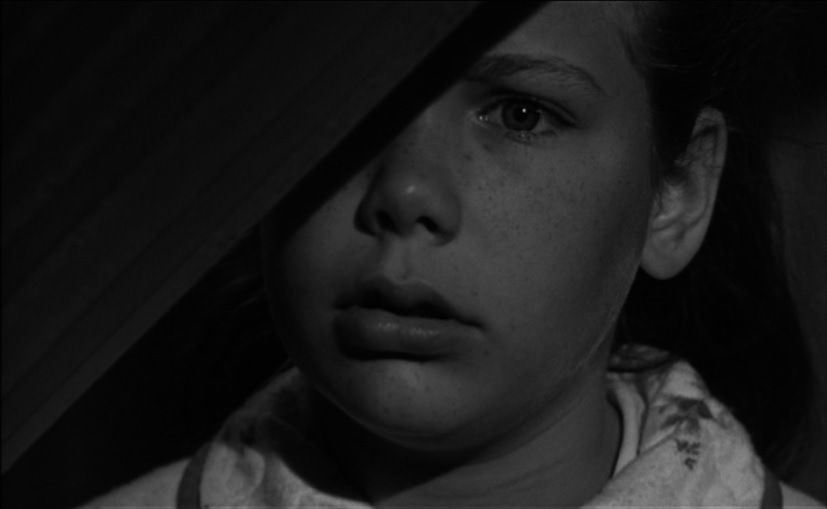
The lover likely does not have to deal with a single compromised image. Rumor mills ensure long-running messages that churn out compromised images for the lover to follow. These images continually flood the lover’s senses with a list of reasons to turn away despite the intensity of one’s feelings. In Gentleman Jack, Ann Walker is repeatedly told to stay away from the peculiar Miss Anne Lister, the unmarried woman who dresses in a “mannish” fashion and travels to far-off places without a chaperone. In the film adaptation of Naomi Alderman’s Disobedience, Ronit is the distrusted abandoner of her Orthodox Jewish faith and customs. In the TV series adaptation of Winston Graham’s Poldark, Ross and Elizabeth’s prior engagement before the events of the series is constantly reevaluated. Are they still in love? If so, are all subsequent affairs merely making do with “second best” and nothing more?
Talk from outsiders is unbearable for the lover, who always regards the beloved from the personal perspective. There is only ever “you.” Any discussion which appears to slander the loved object is considered out of bounds. In Nowhere Boy, the film’s depiction of John Lennon struggles with the simultaneous allure and scandalous nature of his mother, who is vivacious and fun-loving and everything his guardian Aunt Mimi is not. His inability to reconcile images which appear hostile to each other is an aspect of the lover’s torment. Like the song “Everybody Talks” by Neon Trees, the lover fears for the fragility of his Image-Repertoire against slander (baseless or not) that is impossible to escape. With public discourse, the beloved retreats into impersonal historical account as opposed to memoir.
“When I realize that common discourse takes possession of my other and restores that other to me in the bloodless form of a universal substitute, applied to all the things which are not here, it is as if I saw my other dead, reduced, shelved in an urn upon the wall of the great mausoleum of language.”
(Barthes, 185)
What about someone whose reputation resides in idle gossip and rumor? To this day, the name “Casanova” signals a man who has no trouble attracting and bedding a multitude of women. What if he meets a woman who is unimpressed or perhaps discouraged by this advertisement? Then he will have to rely on other means entirely of gaining her attention, a premise which sets up the plot of the 2005 film Casanova. The character of Francesca Bruni is a staunch champion for the advancement of women’s rights, which puts her in direct opposition to Casanova’s casual attitude toward “affairs of the heart.”
As Francesca points out to the original Casanova, his behavior means he makes very few conscious decisions over how to love or who is worthy of giving love to. He’s typically chased out and hunted down before he can face the nitty-gritty challenges of “the morning after,” meaning his reputation has encouraged his courting abilities to be out of practice. This has served him no trouble until his opportunity to seriously win Francesca’s favor presents itself. The film’s depictions of the Vatican and The Inquisition, with their emphasis on suppression, have more in common with Casanova than they might realize. Consistently saying yes to anything (as Casanova does with illicit affairs) is as misleading as perpetual denial (as the Vatican behaves in regard to humanity’s propensity for misbehavior). Perhaps nothing exhibits this better than the marriage between sexually-repressed Victoria (Virgin Mary incarnate) and the man who becomes the new “Casanova” by the end of the film, Giovanni Bruni.
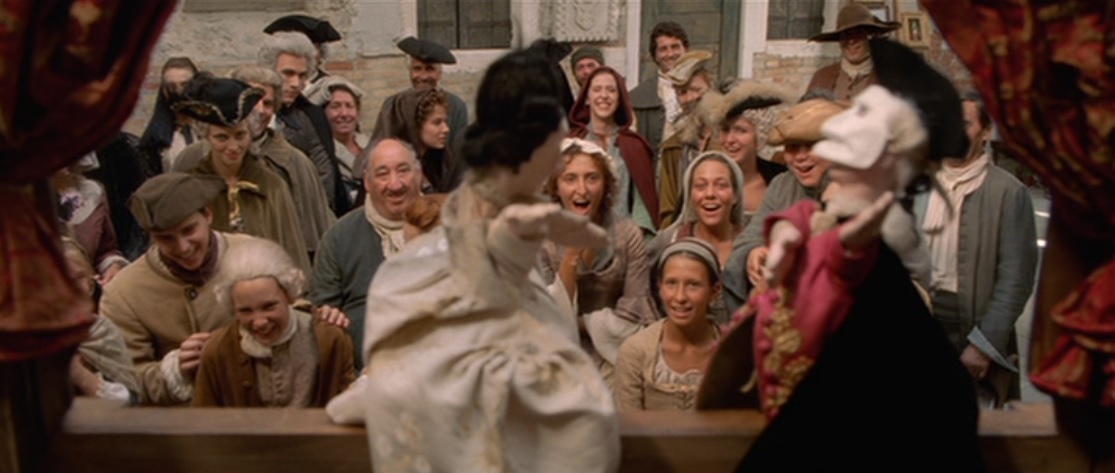
His reputation speaks for itself, which is precisely the enemy to his seductive powers. Once he has established himself as an impressive womanizer, the name “Casanova” supplants the flesh-and-blood man who must do the wooing. This is why the character of “Casanova” is played over and over for audiences in the streets, whether it be by human actors or puppets. Audience members laugh along, claiming to know enough about the real man as to astutely judge the effectiveness and truth of the performance. This they all do without realizing the man next to them in the crowd might be the man from whom the image has taken inspiration. “Casanova” is not presented as simply a name as any other. It is a role that can be forfeited and passed on to the next person willing to bear it. As a way of destabilizing her Image-Repertoire, Casanova echoes her words as a means of gaining her attention. However, in order for Francesca to see the man underneath the reputation, Casanova must destabilize his own Image-Repertoire as well. Unlike the lover, a role such as “Casanova” bears no personal risk. It is rumor and therefore the bloodless, universal substitute of language for vulnerable body.
A Willingness to Bleed
Loving is not a bloodless affair. Contrary to the assertions of “Beast of Burden” by The Rolling Stones, the lover is more than willing to torture himself or herself if it means a sign of affection from the beloved. In the French film, Love Me If You Dare, two childhood friends engage in increasingly dangerous stunts over the course of their lives in an effort to prove their commitment to each other. In Disney’s Frozen, Anna commits an act of true love to protect her sister Elsa and is frozen solid in the process as a sign of how sturdy and unshakeable their sisterly bond is. However, love often entails quite the opposite . . . that the lover be torn asunder.

Estella Havisham: “Moths, and all sorts of ugly creatures . . . hover about a lighted candle. Can the candle help it?” 29
(Dickens, 283)
In this passage from Charles Dickens’s Great Expectations, as the “candle” in this analogy, Estella suggests she is capable of both light and warmth. However, as she suggests to Pip with this comparison, she has been too well-trained by her guardian, Miss Havisham, to wreak havoc on men’s hearts. She could never offer Pip the sort of heated love affair he seeks. When Estella compares herself to a candle with moths surrounding it, she knows full-well that these “moths” (gentlemen suitors) will risk incineration at the hope of a little warmth, however unlikely it is that this opportunity might present itself. Out of some sense of affection for him, it is only Pip to whom she openly acknowledges this. Just as Pip’s love for Estella brings him down to his knees, Estella must realize her adherence to Miss Havisham’s lessons does not advance her well-being. Her allegiance to her beloved guardian, Miss Havisham, must be exposed as manipulative and unworthy of Estella’s time. The only hope Pip has is when Estella becomes as equally broken down as he is.
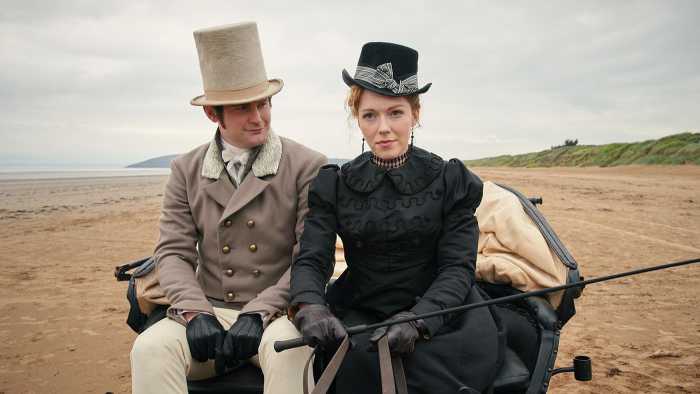
In PBS’s Sanditon, the beloved is not brought down to Earth but remains where she is. Lady Esther repeatedly, subtly rejects the ever-hopeful Lord Babington at every opportunity. In an effort to put an end once-and-for-all to his attentions, Esther says she will never be interested no matter how hard he tries in this scene. However, Babington catches Esther off guard by agreeing to her terms and expressing a wish to write to her anyway. Babington essentially consents to his own death sentence with a smile. The lover here must double-down on his efforts while simultaneously relinquishing his wish for a particular, desired result. He must allow the beloved to crucify him in the hopes that this bravery might be rewarded with a publicly-declared pardon, something the beloved would only risk announcing if the lover has a chance at returned love.
A movement may be made from the sacrifice of one’s life or soul to the literal body. Why be entirely figurative? If the lover is true in his intention, surely he would be more than willing to prove so by actually injuring himself in a way the beloved can visibly witness. In the “Collector” episode of Netflix’s miniseries Persona, IU plays a mercurial character named Eun who has a fondness for collecting her lovers’ hearts. Men offer them to her, bloody and still-beating, as a sign of their devotion and in the hopes she will love them in return. She labels these hearts, since she often easily forgets the men’s names, and stores them in mason jars for her to carry around. Barthes asserts “the heart is the organ of desire (the heart swells, weakens, etc., like the sexual organs)” and “is what remains . . . once all the wit attributed to [the lover] and undesired by [the lover] is taken away” (Barthes, 52). In The Road to El Dorado (loosely based on Rudyard Kipling’s “The Man Who Would Be King”), there is little joy to be found in becoming a god. The gods do not stand aloft, impervious, upon mountaintops. Since they are associated with primal concerns of bountiful harvests or punishing droughts, the god is meant to be torn up and distributed to the thousands of eager, hungry hands waiting for sustenance.
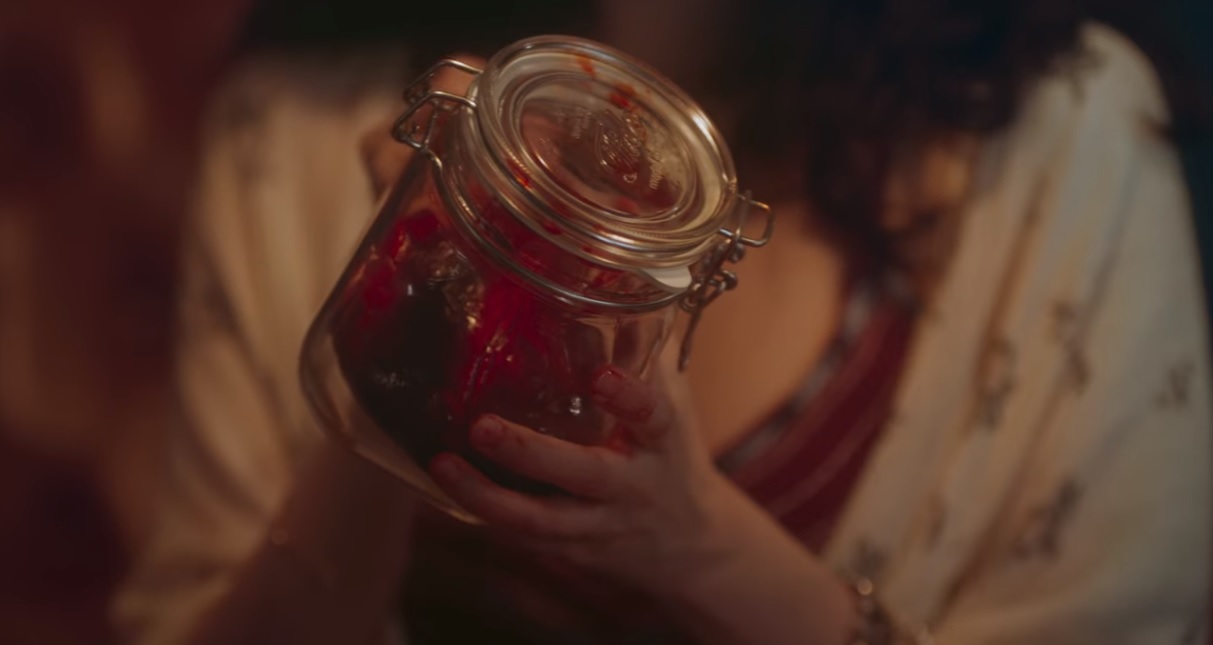
Yet, as Barthes contests, there is something hopelessly crude about the gift the lover bestows upon his or her beloved. In the case of Vincent Van Gogh, there has been the persistent rumor that after lopping off his ear, he decided to deliver it to a prostitute. If true, what purpose could a bloody ear possibly serve as a token of affection? A “starving artist” is well accustomed to “going without” whether it be food, water, sleep, substantive relationships, money, or material objects to call one’s own. As with the Eucharist in the Christian faith, the lover must sacrifice of himself. His body is bread. His blood is wine. In most conventional circumstances, the lover does not bestow a literal fragment of his body to the beloved. Creative works intercede this lover’s dilemma by joining both the material and spiritual expenses. When an individual employs his creative energies to a particular project, he commits to exhausting both his mind and body.
“[T]here is no benevolence within writing, rather a terror: it smothers the other, who, far from perceiving the gift in it, reads there an assertion of mastery, of power, of pleasure, of solitude. Whence the cruel paradox of the dedication: I seek at all costs to give you what smothers you.”
(Barthes, 78-9)
This is especially true in the case of the lover as writer. As Barthes notes, the lover’s “expressive needs oscillate between the mild little haiku summarizing a huge situation, and a great flood of banalities” (Barthes, 98). The lover is either not enough or too much. Virginia Woolf’s Orlando, about a gender-bending individual who lives for many centuries, was inspired by Vita Sackville-West. This depiction obviously has a greater relation to Woolf’s own colorful perspective than Sackville-West’s actual biography. As the film The Invisible Woman by Ralph Fiennes shows, several Charles Dickens books were inspired by his affair with the young amateur actress Ellen (“Nelly”) Ternan. Yet, as the title of the film conveys, her identity as his beloved is overshadowed by his dedications to her as the lover. Though she greatly admires his literary talents, the characters inspired by their particular relationship are likely distorted in favor of Dickens’s mindscape. He is, after all, the orchestrator of their “written story” with his pen. It leaves something out. The parts missing cause distress to the beloved, who will only see a funhouse mirror reflection instead of her true form. But as Barthes would suggest, the lover can never write his own story without the beloved’s help. It resides only as “local legend . . . little sacred history that [the lover] declaim[s] to [him]self” (Barthes, 94).
Takao Akizuki of Makoto Shinkai’s The Garden of Words is able to surpass the inherent fears of the writer by designing shoes instead. The shoe has both utility and personalization in a way a written ode does not. It is for Yukino and Yukino alone. It is crafted by Takao and Takao alone. He perhaps surpasses Yukino’s initial invitation of call and response through tanka poetic forms. As a literature teacher, Yukino can only offer him words written by someone else about something other than their specific connection.
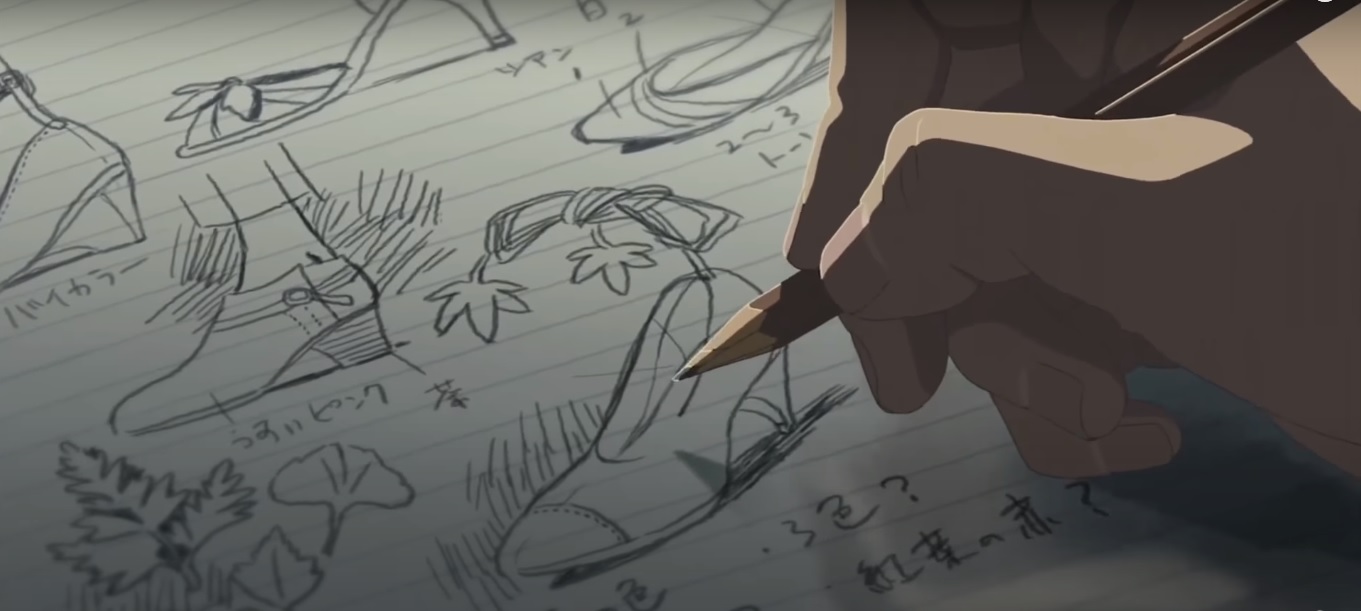
To return to the idea of “I love you” as a musical expression, Love & Mercy’s depiction of Brian Wilson post Beach Boys-fame illustrates a possible bridge for the artist. It is not the tailored clothing of The Garden of Words or the next great novel by Charles Dickens in The Invisible Woman. In one scene, Brian Wilson is spontaneously inspired to play a melody on the piano (what will one day become his song “Love and Mercy”) soon after his love interest, Melinda Ledbetter, enters the room. Where Dickens has risked playing the puppeteer God to his beloved and Takao has ensured his gift’s longevity by strictly adhering it to his beloved’s form, Brian has taken an alternative approach. Both instrumental and improvised, this mere fragment of a song endears itself to Melinda precisely because it refuses to confine either her or itself. Without words, it can be whatever romantic sentiments Melinda might attach to it. By being improvisational, it captures the idea of love as a feeling “in the moment,” something that must exist in the present if it is to be considered alive. It is not bogged down by the potential to be reread and over-analyzed, for Melinda to find cracks in it to fill her lingering doubts with.
An Answer to a Curious Riddle
“To make the other into an insoluble riddle on which my life depends is to consecrate the other as a god.”
(Barthes, 135)
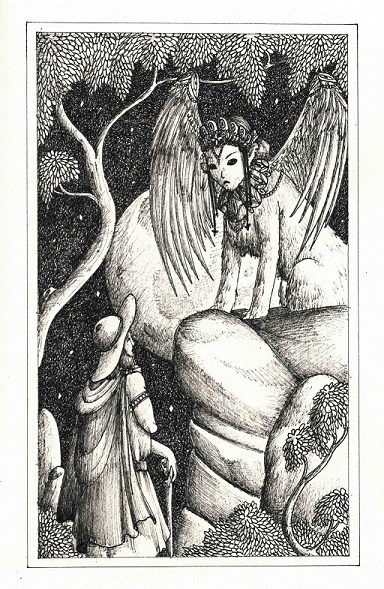
To put an end to physical and mental suffering, the lover sees only one possible solution. He must arrive at the correct answer to what the beloved demands of him. Just as the beloved knows the passcode to unlock all of the lover’s vulnerabilities, the lover must figure out the puzzle of rendering the beloved’s defenses useless.
One is used to love being decided by competition, such as the archery contest for Maid Marian’s hand in marriage in Disney’s Robin Hood. However, these competitions are arranged and decided by an outside party. A riddle puts the lover in direct conflict with the beloved, the object of his or her adoration, as the executioner capable of directing the fall of an axe upon one’s innocent neck. Riddles might bring to mind Oedipus and the Sphinx. By winning, Oedipus mistakenly believes he is victorious rather than the orchestrator of his own downfall. Steven Spielberg’s Indiana Jones and the Last Crusade enlists riddles as proof one is worthy of attaining the Holy Grail. Individuals go through a series of tasks with which they must prove their devotion to God.
Unlike an archery competition, for example, answering a riddle correctly accomplishes far more than a demonstration of physical strength does. They test, through question and response, whether the lover can adapt to the beloved’s train of thought. Can they hold (and not just have) a conversation?
From Geoffrey Chaucer’s Canterbury Tales, “The Wife of Bath’s Tale” devises the riddle as a means of detecting how much the lover is willing to relinquish his desire to possess the beloved. This is especially pertinent in the case of the knight in this story, who is accused of raping a young maiden and must learn “what women really want” if he is to be freed from his death sentence. Following in this tradition, A Knight’s Tale (a loose adaptation of another Chaucer tale) showcases the lowly peasant William Thatcher masquerading as a knight. He is continually frustrated by his attempts to woo Lady Jocelyn because she continually changes the answer of how best he may prove his love to her. In one instance, he has to purposefully lose a jousting match, agreeing to a damaged body as well as compromised pride.
What if the beloved rejects the lover’s right to a riddle? In The Tale of Princess of Kaguya, Princess Kaguya attracts the attention of various suitors whom she has no interest in. None of the challenges she poses for her suitors are a method of measuring their devotion to her. For Princess Kaguya, they simply serve as a means to grind these troublesome men down into hopelessness. She hopes they will all give up and leave her alone. Like Victoria Forester of Neil Gaiman’s Stardust sends Tristan Thorn on a wild goose chase in search of a fallen star, these outlandish requests are meant to befuddle the lover into resignation and retreat. It is an attempt by the beloved to render the overzealous lover inanimate once more, to turn the rescuing knight into an abandoned pile of armor. In Brave, Princess Merida refutes the riddle altogether and addresses both question and answer by entering the archery competition for her own hand in marriage.
When Oedipus correctly answers the Sphinx’s riddle, it causes such a sense of astonishment for the Sphinx that she kills herself by throwing herself into the sea. This suggests that the lover cannot truly answer the beloved without killing him or her in the process. Ann Kelmot in Mr. Holmes would appear to be the beloved and Sherlock Holmes the lover. She is the one who orchestrates her own disappearance in the hopes that not only would her husband recognize her intelligence, but so that only someone else of comparable intellect would solve it. However, when Holmes does discover her and her plan, the situation reverses itself and she becomes the lover pleading to be loved.
Rainer Maria Rilke would likely identify with her sentiments that love is nothing but two solitudes who guard and protect each other. This would make them both Sphinxes, guardians of their respective temples of solitude. Despite all of his intellect and proof that he can unlock whatever puzzle is set before him, Holmes is ultimately utterly stumped by the most important riddle of all to her . . . whether he is willing to stand by her solitude. This final question she poses to Holmes is the one he is unprepared (whether unwilling or unable) to answer. These two sphinxes annihilate themselves in the process, with her her own life and with him his faith in his detective career.
Love as Affliction
Me as Monster
If one chooses to ignore or dismiss the riddle altogether, it is because “by dint of deliberating about ‘nothing’ (as the world sees it) . . . [one] exhaust[s] [one]self” and “madness is tempered, it is not seen” (Barthes, 63). Unlike with an actual puzzle, the lover’s tackling of the maze is done so alone and unnoticed. This makes love seem like a pestilence . . . a maddening disease of the brain to be avoided at all costs. It is for lesser mortals, those of limited intelligence and weaker constitutions. In the television series adaptation of Caleb Carr’s The Alienist, gruesome serial killings occur in the corseted and moralizing world of late-nineteenth century New York City. The public release of intense emotions, if it ever happens at all, happens explosively and violently. In this scene, John Moore tries to tap into the lover’s urge to purge himself of his love and set it on the beloved’s doorstep. However, he is aware of the ensuing embarrassment that follows. The lover’s confession is like ritual hara-kiri, gutting oneself in a manner considered “honorable” but which still stains the beloved’s carpeting with clashing shades of red.
In the film Bright Star, love itself wreaks havoc on the body no differently than “consumption” (the alternative term for tuberculosis). It causes one to stay in bed one day and journey out in the cold rain without a coat another day. Its dizzying heights exist in equal measure to the deprivation of its lows. In The Curious Case of Benjamin Button, the film adaptation loosely-based on the F. Scott Fitzgerald short story of the same name, this notion is built into the title. The “curious case” simply means Benjamin Button’s condition of aging backwards, but it can also signify the lover’s condition. Just as Benjamin is rejected and abandoned by his father at birth, the lover feels perpetually unlovable.
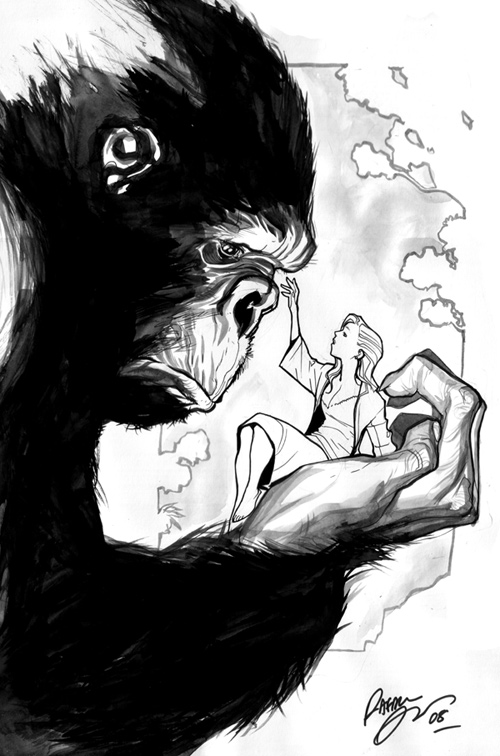
Radiohead’s “I’m a Creep” is an expression of what the lover always feels. The lover is Quasimodo, King Kong, Shrek, the Phantom in Phantom of the Opera, or Beast rather than Belle the “Beauty.” Where the lover is preternaturally ugly and deformed (therefore considered “unlovable”), the beloved is heavenly and whose beauty is beyond measure. It is not just the lover’s inherent hideousness which poses a threat. After all, as is the case with Guillermo del Toro’s The Shape of Water, the beloved is sometimes drawn to the otherwise unlovable creature. The lover fears the intensity of his feelings is itself the monster that steadily consumes the beloved in its ardor. This fear is not necessarily present in the beloved, but in the lover.
How could the lover possibly harm the beloved? The lover, as the eternally-wounded “me” beset by the beloved’s indifference to his suffering, assumes it is always the lover alone who hurts. As the song “You Always Hurt the One You Love” suggests, we are most capable of hurting those who have chosen to expose themselves to the vulnerability of loving someone who could choose to hurt them instead.
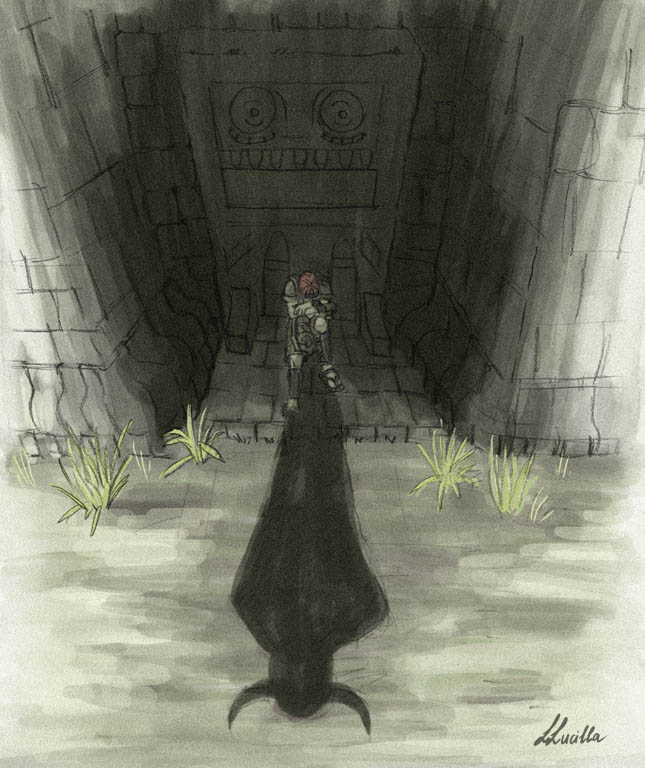
The video game Shadow of the Colossus video follows a young man named Wander who must defeat a series of creatures known as Colossi in order to restore life to a girl called Mono. Over the course of these conquests in a desolate landscape, Wander grows increasingly weaker and paler as the menacing spirit of Dormin (locked away in these various Colossi) take over his body. This sacrifice made out of love is a reflection of the lover’s everyday existence with the beloved.
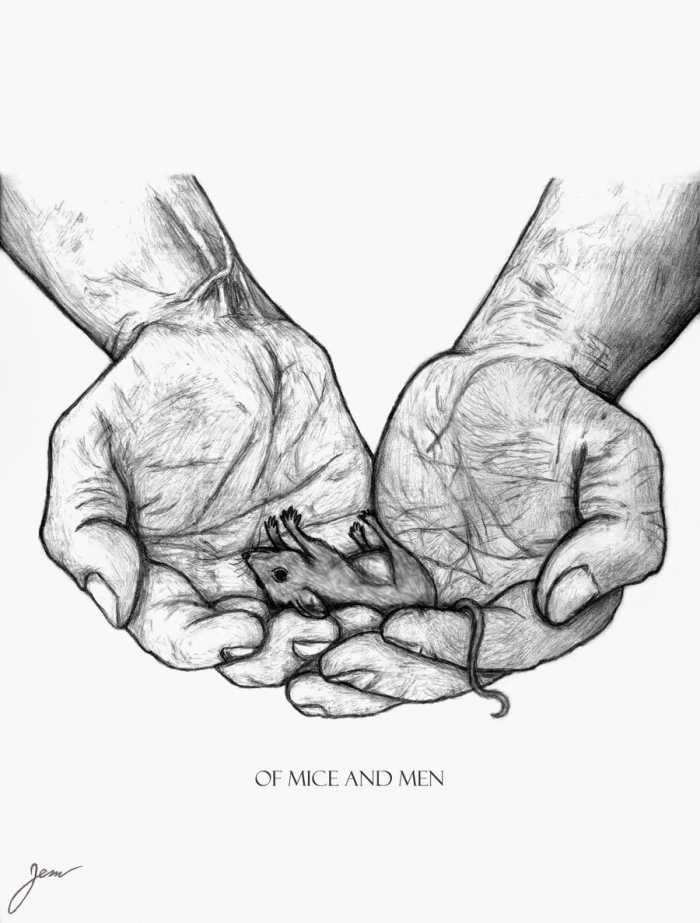
However, more often than the valiant knight, the lover feels he is Lenny Small from Of Mice and Men. Just as gentle-minded Lenny doesn’t realize his own strength, the lover risks fatally injuring those he or she loves. As Barthes says, “the lover is intolerable (by his heaviness) to the beloved” (Barthes, 165). Aside from being depicted as a rampaging monster who can easily topple skyscrapers and pluck airplanes from the sky, King Kong has also been depicted as a tragic figure fixated on the beautiful Ann Darrow. Unlike Beast of Beauty and the Beast, King Kong is unable to transform into a handsome prince through the act of loving. In Akira, Tetsuo accidentally kills his girlfriend Kaori when his powers become too great. The lover is like this, with his insides becoming too much for his own body to contain and eventually squishing his beloved in his grasp.
However, the overwhelming nature of love is not just a matter of size. It is also about the fear of corruption according to the lover’s misjudgment of his own character. Like Dorian Gray of Oscar Wilde’s The Picture of Dorian Gray, the lover fears the beloved will discover the horrifying and ghoulish portrait of his “true self” locked away in the attic. In Ruby Sparks, novelist Calvin discovers he has the power to write his “dream girl” into being and edit her anytime a new issue develops in her character. When he leaves his typewriter for extended periods of time, she begins to act more of her own free-will. Whenever he takes back control, she becomes distastefully robotic to him, thus destroying his illusions of this being an organically developed relationship. Unlike Pygmalion, this creation story does not ensure the created will inevitably love the creator.
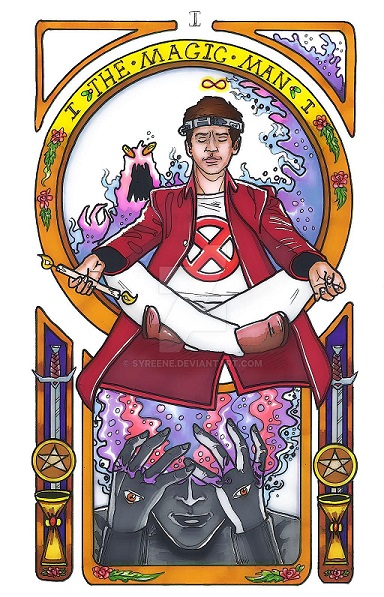
The TV miniseries I Know This Much is True, based on Wally Lamb’s book of the same name, conveys the fear of having a cursed lineage. What if the lover cannot help but be bad? If so, one turns into a type of King Midas. Everything falls apart at one’s touch, which means one must never touch what one loves. David Haller of FX’s adaptation of Legion is what happens when one doesn’t heed that advice. For much of Legion, David believes himself to be a good man who is worthy of love and for much of the series, viewers are convinced of the same because his superpowers are closely tied to feelings of mental illness and misunderstanding. However, when David cannot get what he wants by playing the victim . . . he decides to fully embrace his powers and play God. If sacrifice does not engender pity for the lover from the beloved, why not become the beloved oneself?
This self-protective mechanism David employs is a rejection of Barthes’s discussion of the lover’s demons. The lover’s doubts of his own worthiness in love is like the mythical Hydra, a multi-headed serpent that replaces one sliced-off head with two in its place. These heads may be “the bubbles ‘Despair,’ ‘Jealousy,’ ‘Exclusion,’ ‘Desire,’ Uncertainty of Behavior,’ ‘Fear of Losing Face’ (the nastiest of all demons)” that threaten the lover’s solid framework of the Image-Repertoire (Barthes, 81). A lover may fight these demons that threaten to “expel [him] from [his] paradise” by delving too deeply into the framework he fears the beloved already views him through (Barthes, 80). If one is already thought to be a monster, why not embrace it and become one if it does indeed guarantee control of the beloved?

David’s unreliability as a narrator lends itself to other films such Gaslight or Wilkie Collins’s The Woman in White where the concealment of knowledge can be a useful tool to ensure the lover’s success. As Billie Eilish does in her music video for “Hostage,” the lover creates a cocoon for the beloved to permanently reside in. Within this cocoon, the beloved knows only what the lover creates for the beloved. In the film Phantom Thread, Cyril Woodcock learns to keep tight control over her workaholic fashion designer husband using “Munchhausen by proxy.” She repeatedly poisons Reynolds so she can mother and control him for brief, intermittent periods of time. He becomes solely dependent on her to make him well again. By the end of the film, her husband not only finds out but willingly submits to her treatment.
The lover actively avoids playing the role of captor. Only compulsion and fear propel him into acts which exhibit this level of control. When the lover submits to this, he winds up living with a metaphorical corpse. Eventually the body will reek, no matter the amount of expensive perfume doused on it to preserve the illusion of living. It is far better for the lover to live with the beloved in the “landscape of fear,” an area of land where prey animals thrive because of the possible risk of predation.
Shell Shock Buddies
When fear is not inwardly experienced by the lover, it certainly appears in the environment he and the beloved are contained in. While the lover and beloved are pushed into a dangerous environment together, fear becomes surprisingly conducive to feelings of love. Fear is the lover’s primal state after all. The lover’s Image-Repertoire, an internal and ever-changing landscape the lover battles alone, must find a way to externalize itself. This is one of the only ways for the beloved to recognize the lover and assimilate herself into his world. In Guillermo del Toro’s Pacific Rim, pilots of massive robots called “Jaegars” are mentally connected to each other through a process known as a drifting. This requires absolute trust and compatibility between the two as each are privy to personal traumas and fears. Raleigh has hang-ups about losing his previous co-pilot, his brother. Mako’s childhood trauma about a kaiju attack that claimed her parents’ lives makes her a risky (and therefore unpopular) choice as co-pilot. Partnership here is about witnessing and being present in each other’s horrors in service of the greater good.
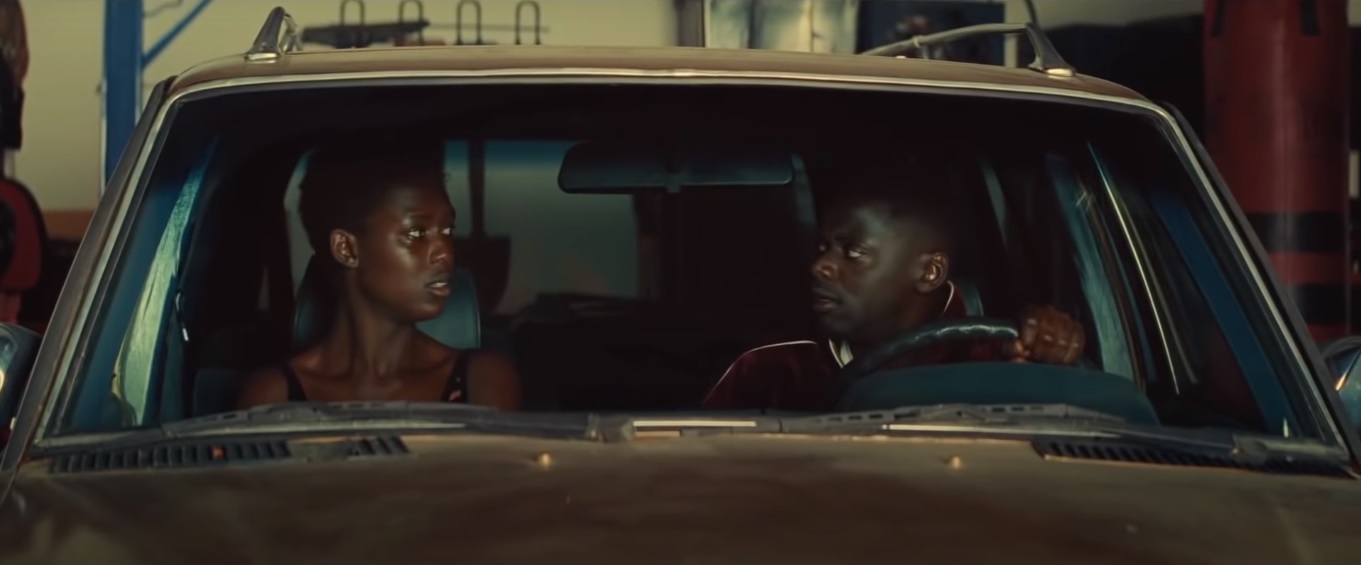
In Queen & Slim, the film’s namesakes are forced into the same dilemma after being jointly and falsely accused of murder. Unlike in Pacific Rim, this partnership is not born out of an international crisis. These two individuals, who admittedly would not have gotten past a first date under normal conditions, are able to craft something beautiful out of a forced intimacy and the impetus to survive at all costs. They are confined into a tight space together, having to rely on each other for survival while being hunted down by a hostile external world. Being on the run from the law like Bonnie and Clyde means they must learn to trust each other completely if they are to survive another day.
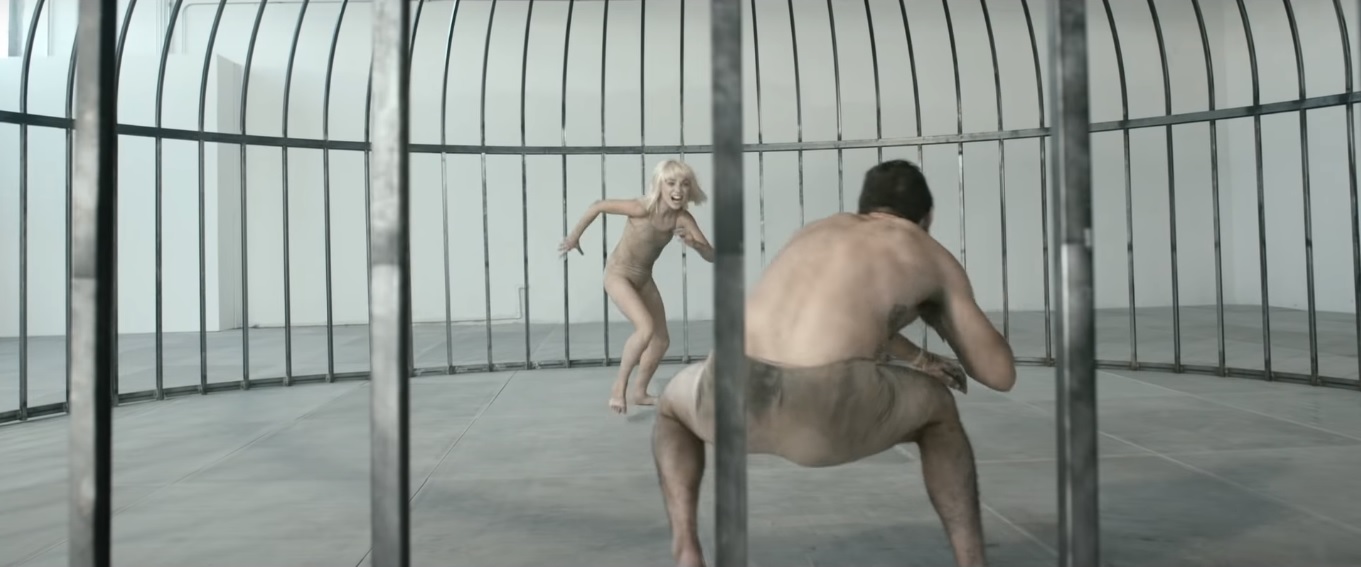
The characters in Sia’s “Elastic Heart” music video further shrink the landscape of fear into a mental cage the lover and beloved share. Shia LaBeouf and Maddie Ziegler’s characters spend the initial part of the music video fighting each other, despite the fact that both are trapped in the same cage together. It looks like a colosseum fight between gladiators, but with no audience to egg them on. Through the course of the music video, they appear to recognize their shared scars and there is a growing compassion and tenderness between the two.
By the end of the video, LaBeouf’s character is shown unable to escape the cage like Ziegler’s character, no matter how hard she tries to pull him through the bars. Whether this is due to him being physically unable or if it is merely an expression of helplessness turned hopelessness is left to the viewer to decide. Shared trauma does not always lead to saving. In Sophie’s Choice, no amount of love post-Holocaust can surmount the grief of being forced to choose one of her children over the other. Both Sophie and her lover, Nathan (with his paranoid schizophrenia), wander through their own personal traumas alone. Grief is always a solitary occupation that none can successfully penetrate no matter the lover’s sincere attempts.
However, hope for the beloved’s love can offer enough incentive to keep trying. This echoes Holocaust survivor Viktor Frankl’s notion in Man’s Search for Meaning that human beings can endure almost anything if they are a given a reason for their suffering. In Park Chan-wook’s The Handmaiden and Maggie Betts’s Novitiate, love serves as either a refuge or a plan of escape against otherwise intolerable conditions. Whether one is ultimately successful in the long-term appears to make little difference to love’s potency in the moment. It is deemed ultimately worthwhile for the lover’s internal experience no matter the external outcome.

In the film Seeking a Friend for the End of the World, Dodge and Penny form an unlikely bond when the end of the world approaches. The people around them resort to all sorts of alternatively self-soothing or self-harming techniques whether it be taking drugs, joining orgies, or drinking bleach. Nothing matters anymore. Yet Dodge and Penny’s experience of world-altering love does not translate into the external world. The physical Earth is not rescued from the incoming meteor simply because Dodge and Penny require more time together or because the viewer wishes it so as well.
To publicize this fragile state of the Image-Repertoire, the lover may decide to only expose his inadequacy as a means of asserting his strength. It is a signal from the lover to the beloved that it is safe to approach. Gabrielle Aplin’s music video for the song “Kintsugi” highlights a Japanese art which does not discard something once it has been broken. A shattered plate or bowl is glued back together with gold emphasizing the cracks. In the film adaptation of Mathilda, Miss Honey is perhaps the epitome of the perfect teacher. She is kind and sweet and treats her students as though they were her own children. The bond she builds with Mathilda is not simply a matter of recognizing and encouraging Mathilda’s intelligence and gifts in a way Mathilda’s birth parents are unable. What cements the bond between them even further is that Miss Honey was tormented by Miss Agatha Trunchbull (her aunt) in her childhood just like her students are now.
In the film adaptation of Roald Dahl’s James and the Giant Peach, the makeshift family young orphan James forges is what makes life livable. Much like the lover’s Image-Repertoire, James’s refuge world consists of fantasy-built but nonetheless real-seeming images. However, James is successfully able to affix these comforting images into the realm of reality. This feat is more manageable for the child, an individual to whom the line between image and physical reality is sometimes more malleable (and fuzzy like a peach).
In most cases though, this escape is a mere pipe dream for the lover. His inability to manifest his internal romantic machinations causes the lover great anxiety. Gillian Flynn’s Sharp Objects makes evident a repaired artifact not attempting to disguise its scars. Camille Preaker’s scars are not etched in gold nor are they displayed for any common audience, which is more akin to the lover’s actual experience. Her psychological scars from her mother’s coldness and her long-dead sister’s death are coupled with the hateful words she secretly carves into her body like private diary entries. Because she has been taught she cannot rely on it, Camille is wary of any attempts to mother her with “a motionless cradling . . . enchanted, bewitched . . . [where] all desires are abolished, for they seem definitely fulfilled” (Barthes, 104). The lover resents external reality’s attempts to place flesh-colored band-aids over the areas through which the lover bleeds. How can the Image-Repertoire cement itself externally if it is not made evident through its life-blood, the channel through which it feeds itself, the lover?

In films such as Grave of the Fireflies or Life is Beautiful, love is expressed through the lover’s suppression of horrors that attempt to harm the beloved. In Life is Beautiful, Guido attempts to protect his young son from the horrors of concentration camp life by pretending it is all a big game they are playing. In Grave of the Fireflies, Seita does all he can to protect his little sister from the gruesome suffering of post-war Japan in 1945. All these siblings have left in the world is each other, but they ultimately die in trying to preserve innocence.
It is perhaps a push against what Barthes refers to as the lover coping with the notion of being at fault. When the lover does not experience his own intensity of feeling, he sees this as a form of betrayal (perhaps one of the greatest forms of it). As Barthes says, “lightening the burden, reducing the exorbitant load of [one’s] devotion-in short ‘managing’ . . . makes [one] guilty” (Barthes, 118). To prevent this feeling, one becomes Atlas by choice. This self-imposed punishment means he must hold up the world for his beloved on his back. As evident In The Theory of Everything, it takes quite a long time for Jane to admit she cannot be Atlas to her physically disabled husband, Stephen Hawking, for long.
This hero-complex is also self-serving. The lover must have someone to save, but the lover’s intense vulnerability leaves him in mortal danger. The beloved’s defense mechanisms that keep all potential lovers at bay must be employed for other means. The beloved serves to rescue the tortured lover by indulging his Image-Repertoire. The lover cannot successfully externalize his Image-Repertoire, but the beloved may decide to willingly cave in and collapse herself into the lover’s images.
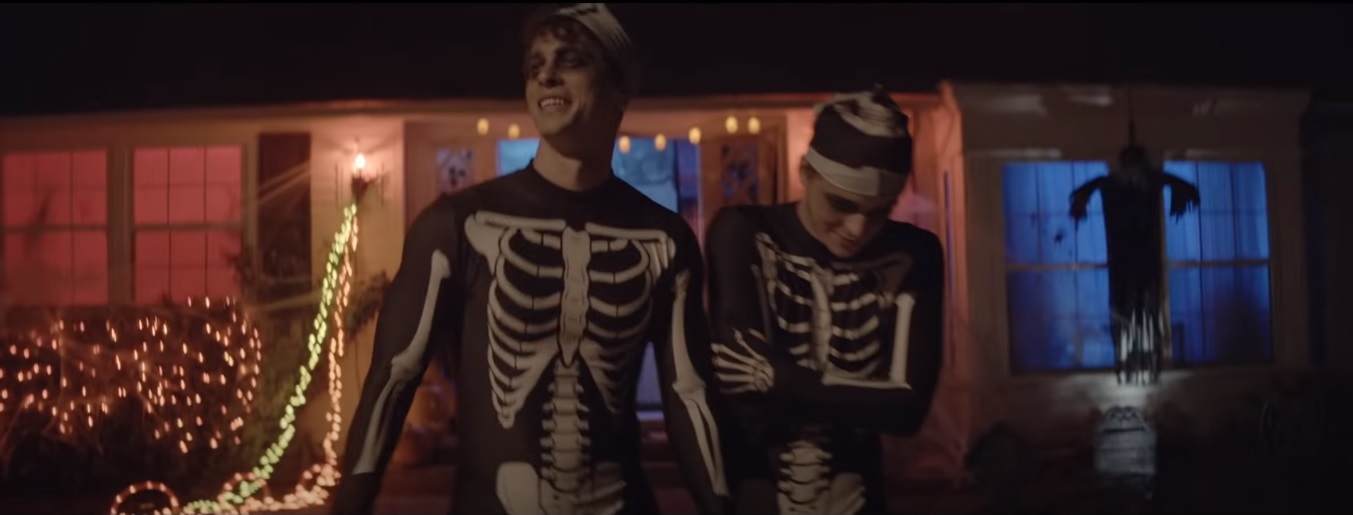
When the beloved is absent, the lover must create one himself to save and to save him in return. Unlike the tightly-bound band of boys in Stand by Me, the main character in Twenty One Pilots’s music video for “My Blood” has no one to turn to in distress. He conjures up his own older brother to cope after his mother’s death as a child. This big brother/best friend figure unleashes his suppressed wildness and rebelliousness while sheltering the unrelenting grief festering inside. This causes the lover’s comfortable mania, love as an insanity destined to be ignored. It is certainly easily diagnosed, but like the common cold it causes no public outcry or alarm. There’s no need for medication. Some chicken noodle soup and plenty of rest are recommended for a full-recovery within the week or so.
“I am entitled only to a impoverished, incomplete, metaphorical madness: loves drives me nearly mad, but I do not communicate with the supernatural, there is nothing of the sacred within me . . . it frightens no one.”
(Barthes, 120)
However, the beloved’s purpose should not be to adhere to the lover’s fantasy indefinitely. It is merely a method of coaxing him out of his own delusions. In Crush’s music video for “Mayday,” the singer’s isolation causes him to hallucinate and see ghosts in his backyard. Joy shows up later in the music video, as the beloved, “in order to release him from [madness] gently” and “initially conforms to his delirium . . . to sustain the illusion somewhat and not to waken the dreamer too abruptly” (Barthes, 124). It does not do the dreamer any good to simply denounce his dream-world as a meaningless fiction. The lover would not believe it and would hastily refute any notion to suggest the thought of it being true. Instead, the lover must witness the glitches in his images for himself.

Fear of False Gods
“I thought I was suffering from not being loved, and yet it is because I thought I was loved that I was suffering; I lived in the complication of supposing myself simultaneously loved and abandoned.”
(Barthes, 187)
The reason for the mutability of the Image-Repertoire is itself to guard the lover against these glitches in the simulation. Absolute faith in religion (praying to altar of the beloved) is immortality, atheism is death, and agnosticism is living. Though the lover is too doubtful to believe he is loved, he cannot commit to the atheism of believing he is not loved at all. He is cursed to be agnostic, wanting to believe he is loved but unsure altogether if he is.
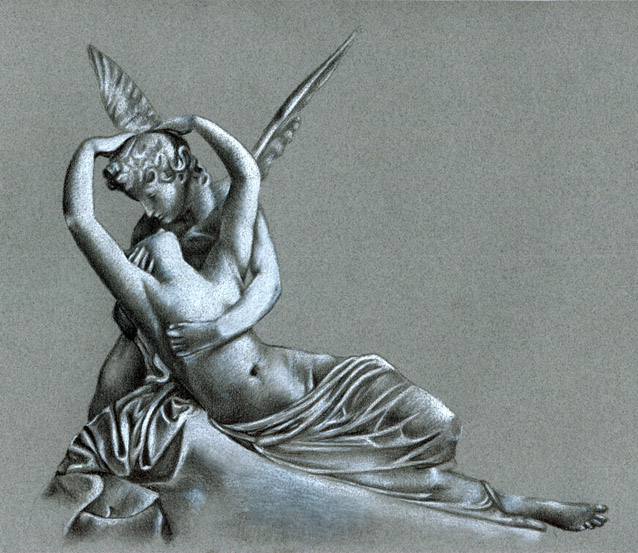
To understand the lover’s fear of falseness, one may take a look at the ancient coupling of Cupid (or Eros) and Psyche. “Eros” brings to mind passion and eroticism. The name “Psyche” originally meant soul, which (though one might feel a strong sense of its existence) is not something one can point to in an anatomy book. The current legal definition of death is “brain dead” as opposed to any other bodily organ, including the heart. This makes the closest approximation, and what modern interpreters would likely first think of as the “soul,” the mind. As Eros embraces his lover Psyche, desire takes its hold over the mind.
How dependable is this embrace? According to basic physics, human beings never actually touch anything. When human beings touch anything, they are actually “hovering above it by an unfathomably small distance” (Trosper). 34 The Buzzcocks’s “Why Can’t I Touch It?” is far more accurate to the human condition than the band likely dared imagine. If this is the case, how can the touch-dependent lover ever get what she needs?

Sigrid’s song “Strangers” understands the lover’s dilemma of forever being alien to the beloved. This stands against all hopes that “only I know him, only I make him exist in his truth” and “[w]hoever is not me is ignorant of the other” (Barthes, 229). In the music video, Sigrid demonstrates reflexivity by capturing the movie set that love’s scenes typically unfold in. The singer is essentially saying: “I see this for what it is. You can’t fool me.” However, awareness itself does the lover little good. When in love, a person may regard themselves singly. No one has ever felt this before. All other loves pale in comparison. When the lover is continually closed in by suggestions to the contrary, when the beloved reminds the lover of his mediocrity, the lover’s choices are exceedingly reduced at every turn. With this, the lover can only see himself as a mere cloth puppet in a play not of his own making. This will be the call to romantic atheism the lover cannot bear.
“Sometimes in the brilliant light cast by some trivial circumstance and swept away by the reverberations the incident has provoked, I suddenly see myself caught in the trap, immobilized in an impossible situation.”
(Barthes, 218)
Is the lover living in a simulation, just as some scientists have theorized? Like the replicant K in Blade Runner 2049, the lover’s fingers pass through the beautiful hologram of the beloved. Joi is whatever type of “perfect girlfriend” he wants her to be. Is K’s girlfriend Joi capable of loving him or can she only convince him of this because she has been programmed to do so? What if the lover has made a mistake? What if the perfection we saw in our beloved is a trick of the eye and the cracks in the façade start to reveal themselves? In the film Take This Waltz, Margot embarks on a whirlwind affair to escape the dull monotony of marriage only to find herself in the same series of repetitions when she officially leaves her husband for this new man.

In Final Fantasy X, there are several false gods at work. Tidus is locked into a rivalry with Yevon, a religion the woman he loves, Yuna, puts her faith in and pledges to sacrifice her life to (just as many before her have done). Yevon not only secretly manipulates its followers, but is not the type of faith one can simply opt-out of. It has real-world consequences because it is responsible for the majority’s understanding of the world. The religion of Yevon is a deceitful beloved because it threatens both Yuna’s and Tidus’s existence, hers as a faithful follower and his as a man who once lived in the lost city (and holy pilgrimage site) of Zanarkand. The protagonist of this role-playing game, Tidus, turns out to be a dream and the hometown of Zanarkand he remembers is only a dream of a place that once existed.
The TV series Dispatches from Elsewhere suggests the failure here lies in the lover not being a god to himself. Is the lover’s journey real life, a distracting game, a thread of a larger conspiratorial web, or something else entirely? Does the answer matter if the question is the same regardless? Despite his obvious hesitation, the lover is quick to let the beloved dictate his interpretations of his own Image-Repertoire at whim. However, these dictations are not due to the beloved’s direct influence. They are merely the lover’s interpretations of the beloved’s influence. The wound is self-inflicted.
Don’t Look Back
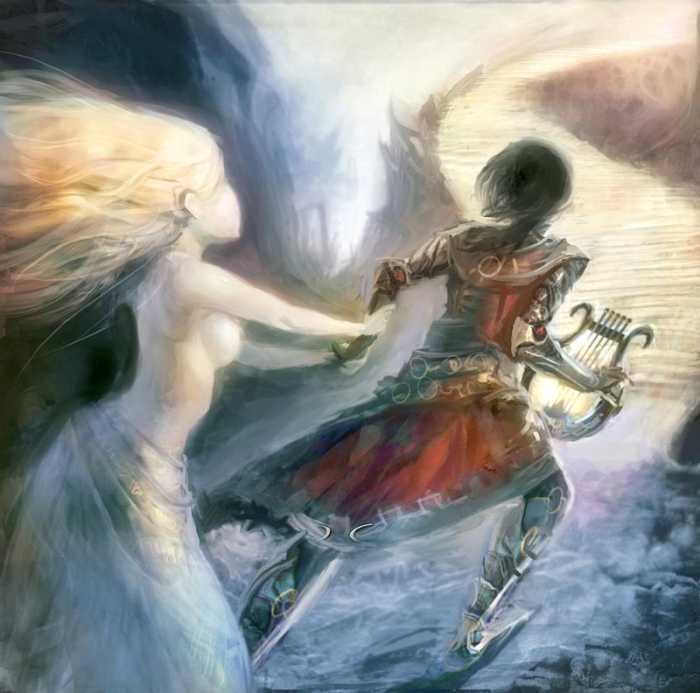
Just as there is a fear of trust, there is also a fear to be found in one’s lack of trust. Like a self-fulfilling prophecy, is it a lack of faith which causes the eventual destruction of love? If one believes enough, will love remain intact? One need look no further than the Orpheus myth. Orpheus is unable to trust that Eurydice is following close behind him as they cross the boundary between the Underworld and the land of the living, an error which makes their entire journey together fruitless. It’s a grievous lapse in judgment that causes him to lose his beloved wife twice-over. The second loss is perhaps even greater because it comes by his own hand. She & Him’s song, “Don’t Look Back,” appears to take on the voice and perspective of Eurydice, warning her beloved not to doubt their love.
In William Shakespeare’s Much Ado About Nothing, Hero’s image is brought down to Earth at the speculation that she has been unfaithful to Claudio, a detail Claudio mercilessly exploits on their wedding day. This public shaming is repaid with Hero’s staged death as a result of Claudio’s hateful renunciation of their lovers’ agreement. One of the reasons for doubt is a fear of seeming foolish. Facing the beloved head-on requires having the appropriate look. The lover “must determine the degree of publicity . . . give[n] to [his] initial anxiety” (Barthes, 41). Much like Koh of the Avatar: The Last Airbender universe, a spirit world creature who steals people’s faces when they express emotion, the lover feels the urge to maintain a certain level of composure in the face of overwhelming feelings. If not, one risks losing what one holds most dear.
Ernest Hemingway: “I believe that love that is true and real, creates a respite from death. All cowardice comes from not loving or not loving well, which is the same thing.” 35
“Midnight in Paris” (2011)
As the character of Ernest Hemingway expresses in Midnight in Paris, loving well results in the lover’s bravery against all odds. Is the lover’s neurotic state a result of half-hearted and hesitant love? Perhaps one of the most frightening creatures of the Doctor Who universe are the Weeping Angels. They are the exact opposite of Medusa. With Medusa, one must avoid direct eye contact so as to avoid being turned to stone. Unlike Medusa, Weeping Angels are only dangerous if one looks away. The Weeping Angels might seem harmless at first glance, but they are demonic gargoyles who are predatory rather than protective. When applied to one’s thoughts of love, Weeping Angels can be a good analogy for the lover keeping a close eye on the beloved lest the beloved betray him. It is just like Harry Burns of When Harry Met Sally‘s preference to read the endings of books first, so he knows the ending in case he dies before finishing the book. The lover dislikes surprises made against him, which is why he tries to anticipate the beloved’s every potential move like a chessboard piece.
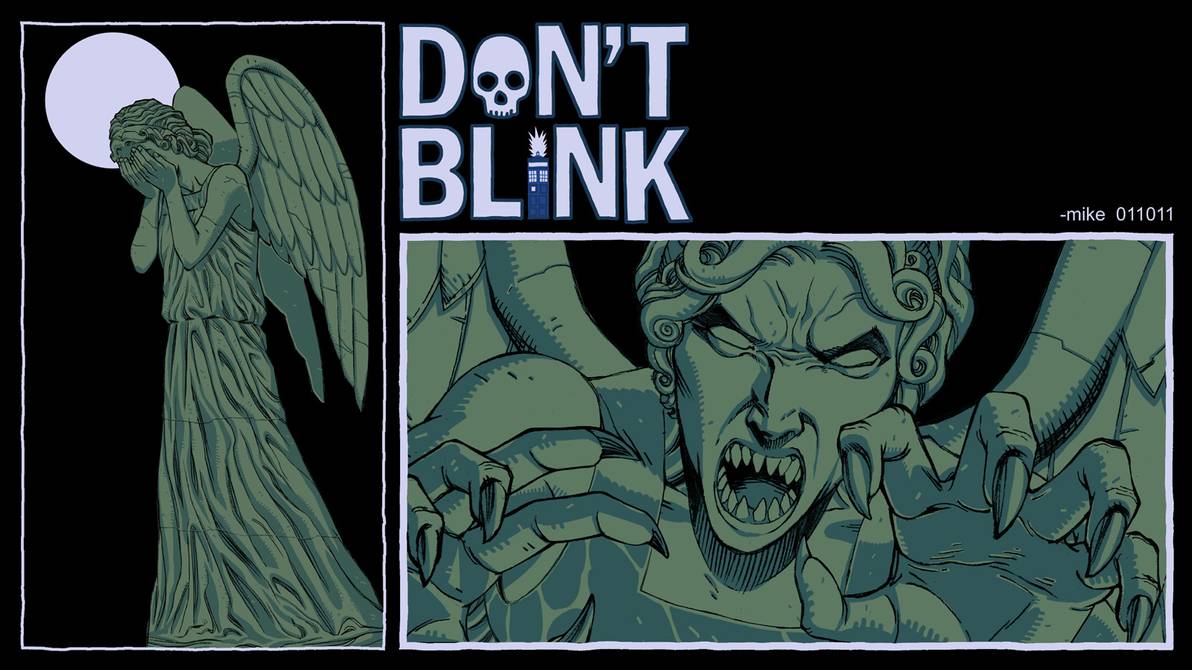
This anxiety of “love as a lie” is the subject of the 1930 German film The Blue Angel. In it, a respectable professor is slowly but surely brought down in the world by his fervent desires for a young cabaret performer. To love is so seemingly ludicrous that “no one dares offer his discourse publicly without a serious mediation: novel, play, or analysis (between tweezers)” (Barthes, 177). The intellectual only approaches love if he can examine it under a microscope or slice it straight the down the middle with the delicate precision of a scalpel. He has no time or the lack of wit to “fall into it” as other fools who lose all sense of decorum would. And yet the pull is so strong, intellectuals are apt to (privately, of course) reveal themselves to be fools. The relationship between Soames and Irene Forsyte on The Forsyte Saga consists of a man who cannot cope with the idea of not understanding his wife. If he cannot understand her, it means he cannot command her.
“I cannot decipher you because I do not know how you decipher me.”
(Barthes, 134)
Yet the proper English butler Mr. Stevens of Kazuo Ishiguro’s Remains of the Day retains his composure at a grievous personal cost. Any hints of his emotions are tightly locked inside his body like a mason jar. His relationship with Miss Kenton is handled with a figurative yardstick between them, by placing his professional duties to an employer he does not fully understand above his unexpected feelings for her. He eventually realizes late in life that he has made his offerings to the wrong altar, that he has chosen poorly what to pay mind to (and thus what to love).
Lending a Helpful Hand (of Fate)
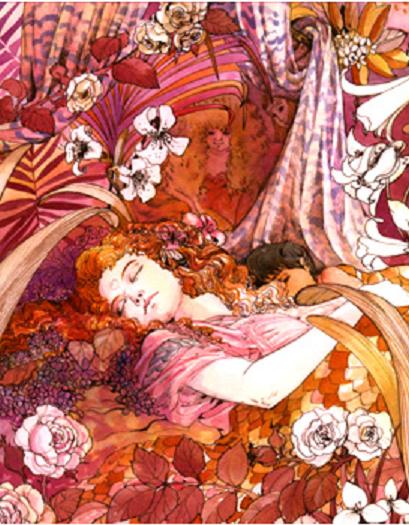
If we ourselves are incapable of or simply inept when it comes to deciding what to love and how, what can the lover do? The lover needs to be reassured by the outside world. He needs external evidence to compound his own findings within the Image-Repertoire, for the play and the play within a play to coincide with each other. Much like William Shakespeare’s A Midsummer Night’s Dream, love appears to be subject to the whims of fairies and trickster sprites who induce pleasant sleep just as often as they do jarring wakefulness. In Robbie Williams’s music video for the song “Candy,” the singer plays the guardian angel to a woman who never notices his efforts to protect her from danger. She mistakenly believes she is impervious to danger because of her own good luck rather than because other people continually look out for her safety. Can the lover ever command these supernatural powers to his or her own benefit?
The Place Promised in Our Early Days appears to borrow from Carl Jung’s belief in a collective unconscious. According to Jung, the reason behind humanity’s similar mythologies across the globe despite disparate languages and cultures is due to a collective unconscious. Humans can experience a taste of these shared images and symbols though dreams, which contain hidden information waiting to be deciphered. In The Place Promised in Our Early Days, there are multiple parallel worlds that exist as dreams of the universe or the “what ifs” of reality. Potential meaning that has been locked away in one’s unconscious is reflected in human feelings of intuition or déjà vu. As in Ursula K. LeGuin’s “The Ones Who Walk Away from Omelas,” Sayuri must remain asleep for “the greater good.” While Takuya is able to move on and take a practical approach to mourning, by joining a scientific facility and studying the Hokkaido Tower’s activities, Hiroki is unable to let go.

Hiroki falls into a depression, walking through reality as though it were a dream and clinging to images of a nostalgic past in order to cope. He illustrates Barthes notion of “[m]ourning for the image, insofar as I fail to perform it, makes me anxious; but insofar as I succeed in performing it, makes me sad” (Barthes, 107). Hiroki must resurrect certain images to keep Sayuri’s memories (and thus her) alive. He learns to play the violin as she did and visits the hospital room where her comatose body once lay, knowing full-well they are mere ghosts or traces where something once living once resided. Hiroki knows that if he is to have any hope of waking Sayuri up, it is to fulfill the promise that he, Sayuri, and Takuya made together as kids to fly to the Tower together. The beloved is the impetus for the lover to wake up from the dream-making machine of his own Image-Repertoire. When thinking of her, the lover pushes against his own propensity for amnesia. According to Barthes, there is no underlying meaning itself to this act. The waking serves no purpose. It’s potency lies in the fact that the lover has chosen and allowed the beloved, out of all possible people, to wake him.
“What does ‘thinking of you’ mean? It means: forgetting ‘you’ (without forgetting life itself is not possible) and frequently waking out of that forgetfulness. I do not think you; I simply make you recur . . . I have nothing to tell you, save that it is to you that I tell this nothing.”
(Barthes, 157)
Aside from trying to closely align reality with dreams, faith means allowing fate to be determined by interpreters of these mysterious signs. Otherwise, the lover consistently pulls the petals off daisies with metronomic precision to “She loves me” and “She loves me not.” In the “Fortune Teller” episode of Avatar the Last Airbender, Aang’s potential as a love interest is secured as long as he plays into the “powerful bender” type prescribed to Katara as her eventual husband by the fortune teller. This fortune teller is able to notice heaven-sent patterns in heated oracle bones the average person would assume are just simple, random cracks. Since the lover is overly-familiar with his Image-Repertoire, he or she requires a knowledgeable middle-man to reassure the lover that the interpretations he has already devised in his head in regard to the beloved are correct.
Katara, who is oblivious to Aang’s crush on her at this point, likely pictures someone who is physically very different to the twelve-year-boy Aang is. Aang, who overhears the fortune teller’s reading by eavesdropping, inserts himself as the obvious future lover in Katara’s storyline because who could be a more powerful bender than the Avatar himself? Aang and Katara have entirely different interpretations of the same data. Despite already knowing Aang is the Avatar for some time now, it is only when Aang visibly demonstrates himself as being a “very powerful bender” in a moment of near-calamity that the fortune teller’s words truly start to sink in for Katara.
“A man who wants the truth is never answered save in strong, highly colored images, which nonetheless turn ambiguous, indecisive, once he tries to transform them into signs.”
(Barthes, 215)
Use of the polygraph machine, or “lie detector test,” in Professor Marston and the Wonder Women is meant to manufacture signs without the need for the smoke and mirrors techniques of divination. It perhaps lends greater credibility than a deck of cards or palm markings would in terms of reassuring the lover. The polygraph is also easily read by anyone by comparison. The line runs smoothly until a lie (or at least the test subject’s hesitation or nervousness) is detected in wobbly, shaky blips in the path. It is perhaps the closest one can get to an EKG for determining the beloved’s intentions (good or ill) toward the lover. Using a far more removed stance, in the anthology TV series Soulmates, the finding of a “soul” gene assigns a scientific process to love. Simply sign up and a company will direct the lover to his or her soulmate. However, the company absolves itself of responsibility for whatever the notion of “soulmates” entail (which might be quite different from the lover’s Image-Repertoire). It merely points the way for the lover, abruptly taking its hands off the steering wheel and saying: “You can take it from here.”
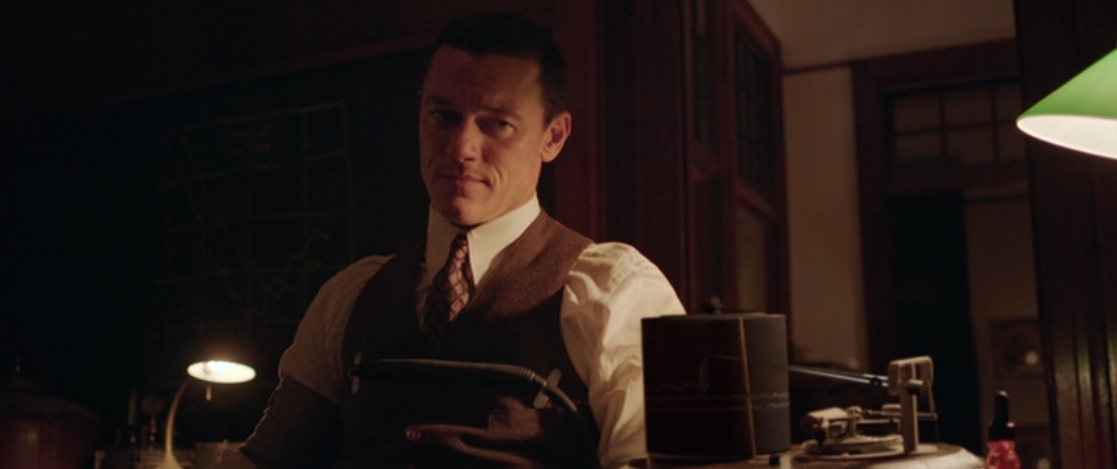
If the lover receives signals contrary to his interest, is all hope lost? Can the lover endeavor to intervene in a plan not designed for him? Albert ensures Victoria’s interest in him in The Young Victoria by intermittently playing into the signs given to him by his advisors and at times rejecting them. He is told not to mention his love of Schubert’s music, but does so anyway in an attempt to build an authentic bond with her. However, when Victoria expresses her newfound love of waltzes, he decides to secretly learn how to dance. Her surprise at his willingness to fit like a puzzle piece within her own Image-Repertoire assures her blossoming love for him. She is amazed to have “found someone who, by successive touches, each one successful, unfailing, completes the painting of [her] hallucination” (Barthes, 198).
Sometimes the gods deliver bad news which is irreversible no matter how the lover contorts himself. How can the lover, who as Barthes says, “contemplate[s] a leaf and attach[es] [his] hope to it,” recover from such damaging visions (Barthes, 163)? In the film Arrival, based on “Story of You Your Life” by Ted Chiang, Louise Banks has been both blessed and cursed with the foresight to know. She becomes like the figure of Cassandra in Greek mythology, cursed to know a future no one else sees and seemingly hopeless to prevent it. Yet by the end of the film, she embraces this fate of hers. Despite being fully aware of all the tragedies that will befall her as a result of this decision, she decides to accept her future as it has been laid out for her.
Unlike Arrival, this acceptance of an uncertain future is not done silently and singly in Eternal Sunshine of the Spotless Mind. Both Joel and Clementine become aware of their previous break-up by the end of the film, after they both literally wiped their memories of said relationship. As this scene demonstrates, Clementine rejects what the lover often mistakenly presumes . . . that the other only exists as “the beloved” and nothing else. The lover is unaware that the beloved has his or her own Image-Repertoire with which to interpret and dissect the lover. The lines between “lover” and “beloved” are dissolved and those roles are interchangeable.
“Despite the difficulties of my story, despite discomforts, doubts, despairs, despite impulses to be done with it, I unceasingly affirm love, within myself, as a value.”
(Barthes, 22)
By the end of the film, Joel and Clementine affirm what Barthes knows to be true and terms “the intractable.” The lover acts against all reason, whether it is outside authority or in Joel’s case, conclusions drawn from his own words. Through therapy recordings, both Joel and Clementine become privy to all the petty disagreements and festering resentments they once felt in their relationship before these memories were erased. Though Clementine dismisses the notion of people “saving each other,” they seem to keep being pulled back together despite the myriad reasons for the dissolution of their relationship. Not even when Patrick Wertz copies Joel’s words as a ways of easily seducing Clementine, is he able to gain her attention to the same degree Joel does. This suggests that not only is the lover unaware of what he really wants (or needs), but that love remains out of sight because it is so closely attached to the lover. If the bodily organ of the “heart” is what first comes to mind when one thinks of love, then of course the beloved would be buried deep inside the lover where he couldn’t even see her if he tried.
Extensions of Ourselves
Conjoined Twins
“I am he that aches with amorous love;
Does the earth gravitate? Does not all matter,
aching, attract all matter?
So the Body of me, to all I meet, or know.”
Whitman, Walt. “I Am He That Aches With Amorous Love.”
In “I Am He That Aches With Amorous Love,” Walt Whitman speaks of a melding between lover and beloved. In the final line, there is a play on words to suggest this. When the poem is spoken aloud, “so” becomes “sew” and the speaker, in his loneliness, asks to be attached to everything and everyone he meets. Nature does this on its own according to laws of matter and energy conservation, but if need be, the lover will get a needle and thread and replicate the process artificially.
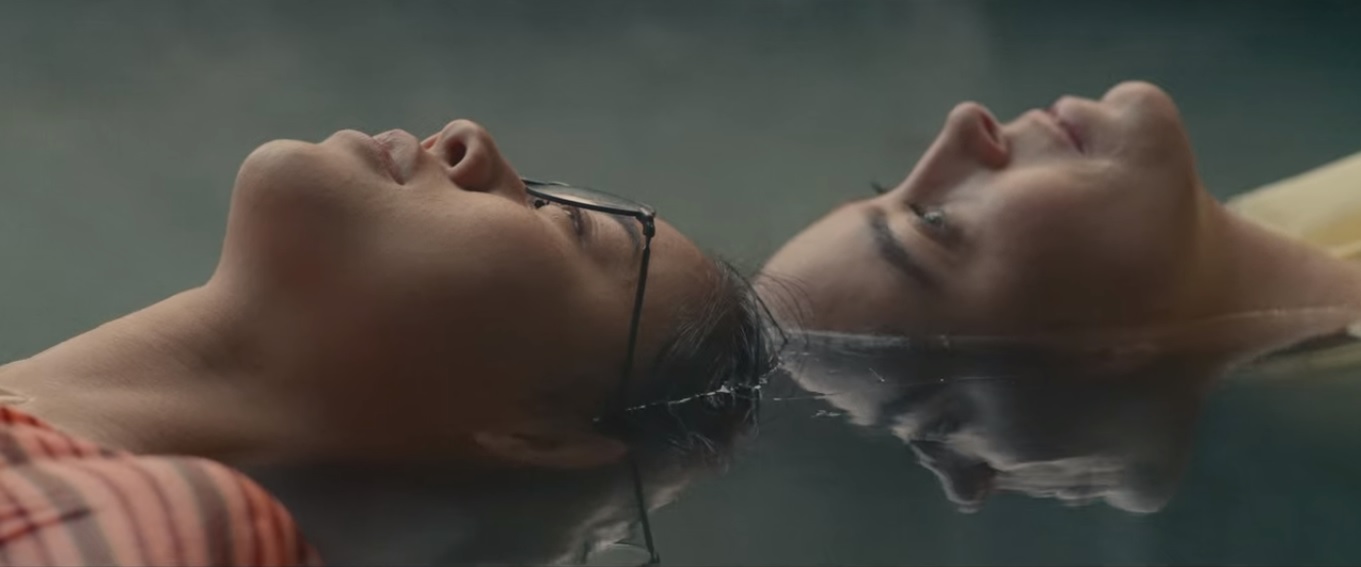
The Netflix film The Half of It explores the popular Greek myth of being separated from our “other half” as an explanation for the lover’s eternal pain and restless search for the beloved. Much like Janus, the two-faced Roman god of duality and transitions, perhaps being conjoined twins entails always facing away from each other. When Aster and Ellie hang out at Aster’s favorite “secret place,” the hot springs, the water’s reflection gives each of them a two-faced version of themselves. Aster and Ellie are presented to the viewers as potential soulmates not because they are the “other half” of each other. Instead, they make the other a more complete version of themselves when they are around each other. Yet since Aster and Ellie are laying in the water, faces held upwards toward the sky, they are unaware of this phenomenon the viewer is privy to. How then can one find one’s soulmate, whose presence is felt but remains always out of sight? This would be far different from the disparate individuals of the series Sense8 who are psychically linked to each other and privy to each other’s sufferings and joys as if they were experiencing it first-hand.
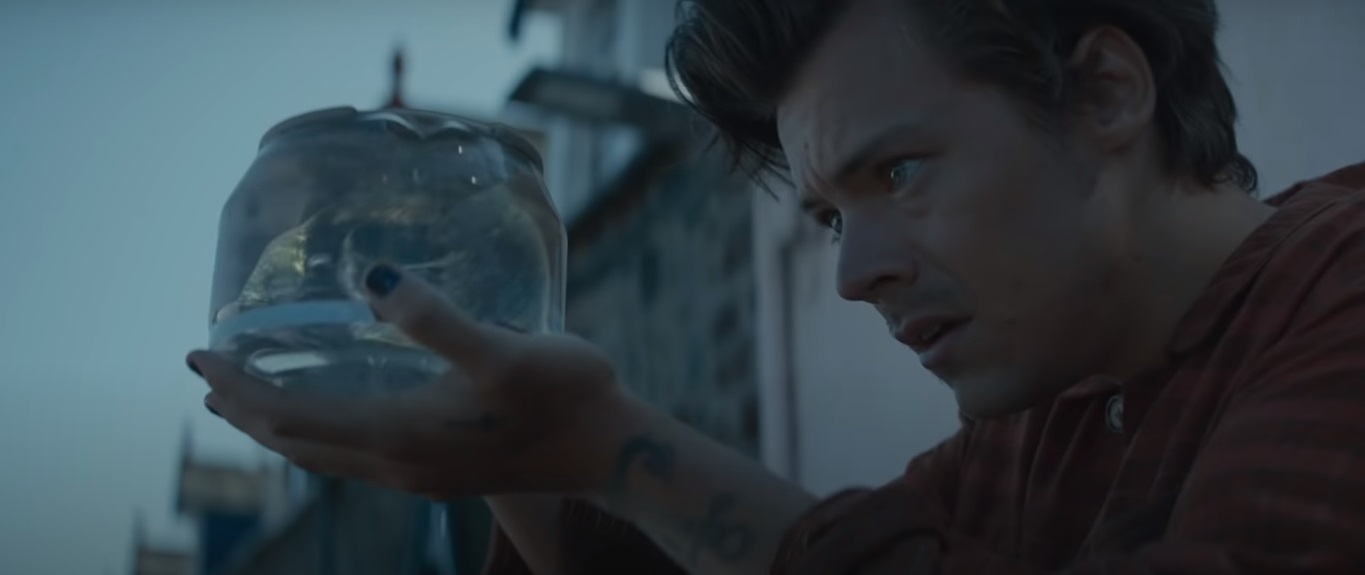
In Harry Styles’s music video for “Adore You,” the singer plays the “The Boy” on the island of Eroda. He appears to be on the verge of drowning himself until he meets a fellow “fish out of water,” this time a literal fish, and rescues him. This fish serves not only as an impetus for The Boy to leave, but a reflection of The Boy for him to reevaluate his own condition. The fish quickly outgrows each container The Boy places him in for safekeeping, whether it be a coffee pot or bookbag. Taking care of his new friend gives The Boy a renewed sense of purpose and a realization that he is simply a fish who has outgrown the pond he was placed in.
The island’s name “Eroda,” aside from spelling “Adore” backwards, sounds a lot like the word “erode.” If a small island erodes, there isn’t much left to escape to. This expresses the urgency of The Boy’s situation. His initial hopelessness was a wish to relinquish himself to the process of his identity vanishing. The introduction of a fish as an extension of himself suggests he doesn’t have to be left stranded on land, subject to the whims of the tides of public opinion. Taking care of this fish forces The Boy to contemplate an amphibious existence. By expanding who he is and who he cares for, he unintentionally expands his scope of mobility.
However, Barthes recognizes the crudeness of such a depiction of a two-faced being. What may at first appear like a beautiful symbolic union becomes a child’s drawing when pen is pressed to paper, the lines askew and the limbs jutting out at impossible angles. These conjoined twins become “a monstrous, grotesque, improbable body” and “[o]ut of dreams emerges a farce figure” (Barthes, 227). Is love turned into Frankenstein’s monster this way? Love is made disorienting in its multiplicity.
Like the look-alike characters of Declan McKenna’s music video for “The Key to Life on Earth,” this conjoined-twins phenomenon can lead to resentment and animosity. It is essentially an existential type of organ transplant rejection. The beloved’s attachment to the lover serves to benefit him, but the lover’s immune system mistakenly attacks it as a form of alien, parasitic influence that must be annihilated. When this rejection does not occur, the opposite phenomenon may occur. Like a cancerous mass, the beloved’s influence spreads uncontrollably within the lover and serves to suffocate the host body. When trying to acclimate to their intense connection with each other, Villanelle attempts to turn Eve into a copy of herself by encouraging Eve’s psychopathic inclinations and tendencies in season two of Killing Eve. As a psychopath, at this point in the series Villanelle can only picture “loving” as producing replications of herself, over and over again, indulging them with the meat of her original badness.
Ed Sheeran’s music video for “Lego House” follows a look-alike character played by Rupert Grint who has an obsession with the singer. This obsession glides back and forth between love and hate. He collects Sheeran’s used gum and has a life-size doll with Ed Sheeran’s face plaster on it. He also expresses a destructive frustration and jealousy of not actually being “Ed Sheeran,” no matter how closely he tries to dress like him or lip-sync to the song for the viewer. He will only ever be “close enough.” Such is how the toxic and intoxicating friendship between “Lenù” and “Lila” plays out in Elena Ferrante’s My Brilliant Friend. Though copying each other as a sign of allegiance, lover and beloved are forced into a deadly competition if they are to keep pace with each other. As with Erich Fromm’s To Have or to Be?, the link between “being” and having” is often subtly drawn.
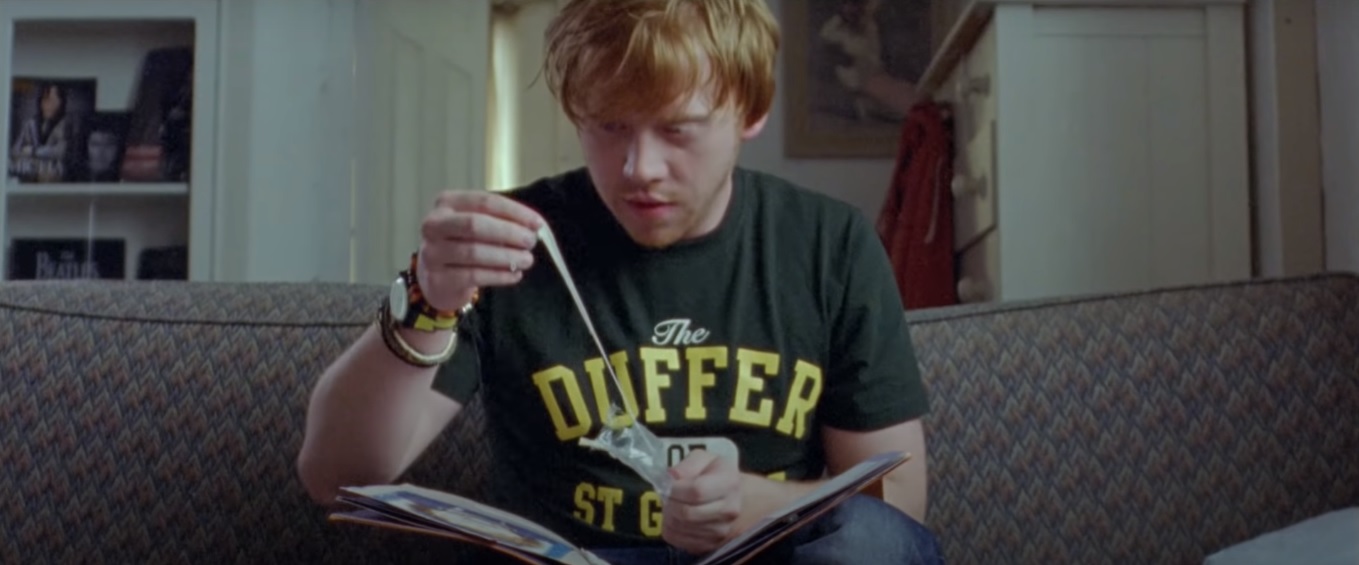
Gustav von Aschenbach’s, of Thomas Mann’s novella Death in Venice, bout of writer’s block appears to be on the mend when he is enraptured by the beauty of a young man named Tadzio. This obsession encompasses the lover’s obsession with a reminder of his younger self, one who was “of the world” and unattached to a troublesome beloved who occupies his every waking moment. Tadzio’s relieves Gustav from feeling the lover’s state of a destitute creator, by allowing him to reflect on his vitality not only as a man but as an artist. Here the beloved has imbedded himself into the memories of the lover. Returning to dreams, the lover sees the beloved as a vehicle with which to access his former, lost self. When the beloved manifests the lover’s Image-Repertoire, the lover recalls who he really is.
“[I]n order to render intellectual concepts visible to us, the god was wont to employ the physical attractions of youthful beings, adorning them with all the reflected glow of beauty to make them an implement for anamnesis.” 38.
(Mann, 36)
Negotiations with Narcissus
For those familiar with the Greek myth, the word “narcissism” might bring to mind the figure of Narcissus, the man who fell hopelessly in love with his own reflection. Even before, the woman who loved him unrequitedly, was named Echo. The myth consists of two people trying to love “the other,” but ending up with only a reflection. The word “narcissism” does not have positive connotations for most people, despite the fact that one of the many metaphors used to describe love is a “mirror.”
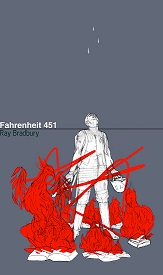
On his or her own, the lover might fill himself with all sorts of delusions of grandeur. The other provides one with a chance to see oneself more clearly, that is if one is willing to take a look. In this passage from Ray Bradbury’s Fahrenheit 451, Guy Montag remarks on his teenage neighbor Clarisse McClellan’s remarkable ability detect his own disillusioned feelings and thoughts before he’s able to give voice to (or even realize he has) them. Unlike most other people, who are too consumed by their own lives to notice anyone else, Clarisse actively relates to him. She is not a flame that burns all-consuming, suffocating everything in its wake before dying with a whimper. She is reflective, patiently waiting for his direction before bouncing back whatever he has unknowingly offered her.
“How like a mirror . . . her face. [H]ow many people did you know who refracted your own light to you? People were more often . . . torches, blazing away until they whiffed out. How rarely did other people’s faces take of you and throw back to you your own expression, your own innermost trembling thought?”
(Bradbury, 11)
Guy Montag is already well-accustomed to fires blazing away, out of control. What he is unaccustomed to is the original fireman’s weapon of choice against fiery destruction, water. Water has a similar quality to the mirror. Unless it is disturbed, the water’s surface suggests self-reflection and clarity. In Clarisse’s mirror-like approach to relationships, she reaches back into the past and accesses the type of fireman Montag is supposed to be (urging the creativeness out of the destroyer).
The film Predestination, or the short story it’s based on ‘- All You Zombies -‘ by Robert A. Heinlein, takes the “extension of ourselves” metaphor to the extreme. One is one’s own father, mother, lover, etc. There is literally no one else but “you.” “Love yourself” has perhaps never been taken so literally. One is both the beginning and end of one’s own bloodline. Like the dramatized version of the Borgia family or the family lines of George R.R. Martin’s A Game of Thrones, family means safety and danger simultaneously. This is coupled with a negation of those deemed outsiders to blood-bonds. How does this curtail the lover’s preoccupation with himself?
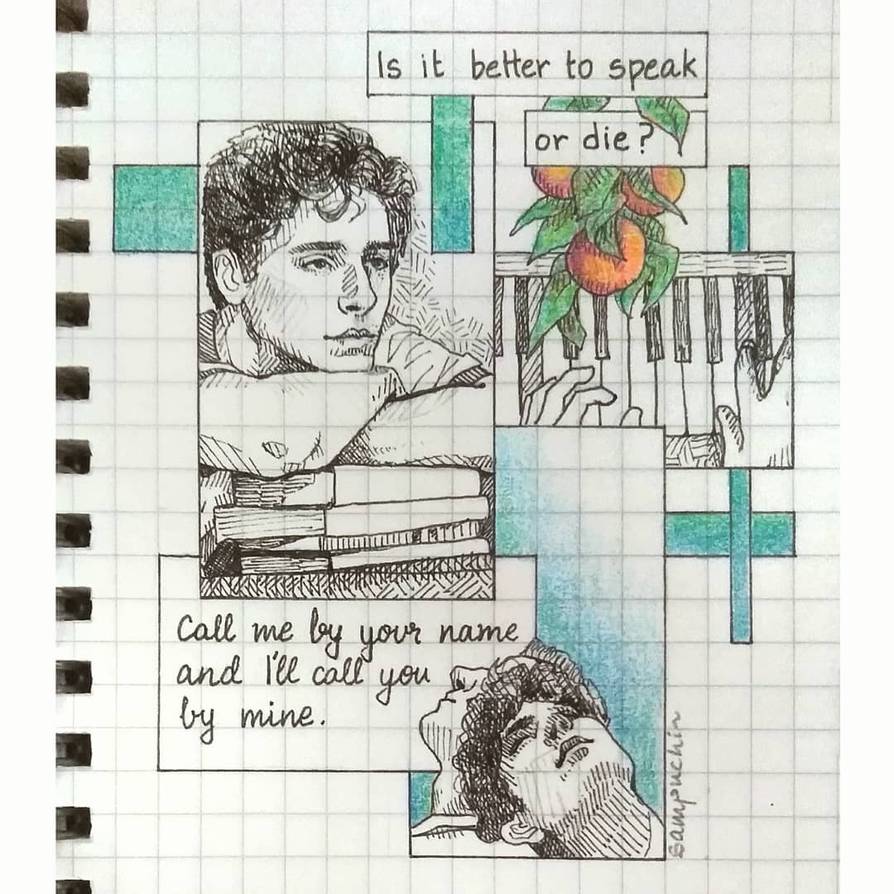
In Call Me By Your Name, as the title suggests, Oliver and Elio enter into an affair in which they urge each other to call the other by his own name. This perhaps lends support to the infamous “peach scene,” where just about any object will do when the real source of one’s desire is out of reach. Is love nothing but a type of mutual masturbation, a vehicle for which one merely uses the other’s body to gain personal pleasure? Barthes notes the lover is only capable of doing this with sleeping objects, when the beloved is reduced to aesthetic “thing.” When the lover attempts to contemplate the beloved’s own capability of Image-Repertoire, the lover reaches the possibility of true sight and therefore genuine union.
“[I]f the body I am scrutinizing happens to emerge from its inertia, if it begins doing something, my desire changes; if for instance I see the other thinking, my desire ceases to be perverse, it again becomes imaginary.”
(Barthes, 71 – 2)
Barthes emphasizes the importance of lover and beloved echoing each other. When the lover says “I love you” in any manner, the beloved must return it in the same exact fashion. In this scene from Carol, based on Patricia Highsmith’s The Price of Salt, Therese Belivet and Carol Aird sample the same perfume, incorporating each other in themselves. It is a rejection of Barthes’s observation that the lover will at times fixate on the beloved’s individual body parts, dissecting him or her as if the beloved were a frog prepped for dissection in a high school science lab. The lover is most at home with impressions the beloved leaves him with, like ripples on the water from rock-skipping, where “the other is the voice, the line of the shoulders, the slenderness of the silhouette, the warmth of the hand, the curve of a smile, etc.” (Barthes, 191). If the other is “me,” the lover feels he cannot objectify the beloved as he is prone to do.
“Proffering cannot be double (doubled): only the single flash will do, in which two forces join . . . [f]or the single flash achieves this unheard-of thing: the abolition of all responsibility.”
(Barthes, 150 – 1)
Love is best expressed to the lover through the wholeness of “oneness.” An “I love you” must be made like a duet, with both lover and beloved singing the words to each other at exactly the same moment. Call and response is too amateurish. This oneness is actually best expressed as a zero. Zero is both infinity and nothing all at once. It ensures the obliteration of love as multiplicity. The number never gets any bigger than the number of parties involved. There is no “you” and no “I.” Only perhaps . . . this, which assigns the beloved “as thus, enabl[ing] [the beloved] to escape the death of classification, . . . kidnap[ped] from the Other, from language, . . . immortal” (Barthes, 221).
Brushes with the Past to Repaint the Present
The beloved’s presence engenders a collision of images within the lover’s mind, the Image-Repertoire, which means the lover must constantly renegotiate with the past. In the climactic scenes of movies such as The Garden of Words or When Harry Met Sally, there is a moment in which shared memories sweep over and envelop the lover’s senses like an unexpected tidal wave. In Jay Chou’s film Secret, Ye Xianglun must sacrifice the present if he is to remain with Lu Xiaoyu, a time-traveler to Xianglun’s present. However, this past he consigns himself to is not his own past but hers.
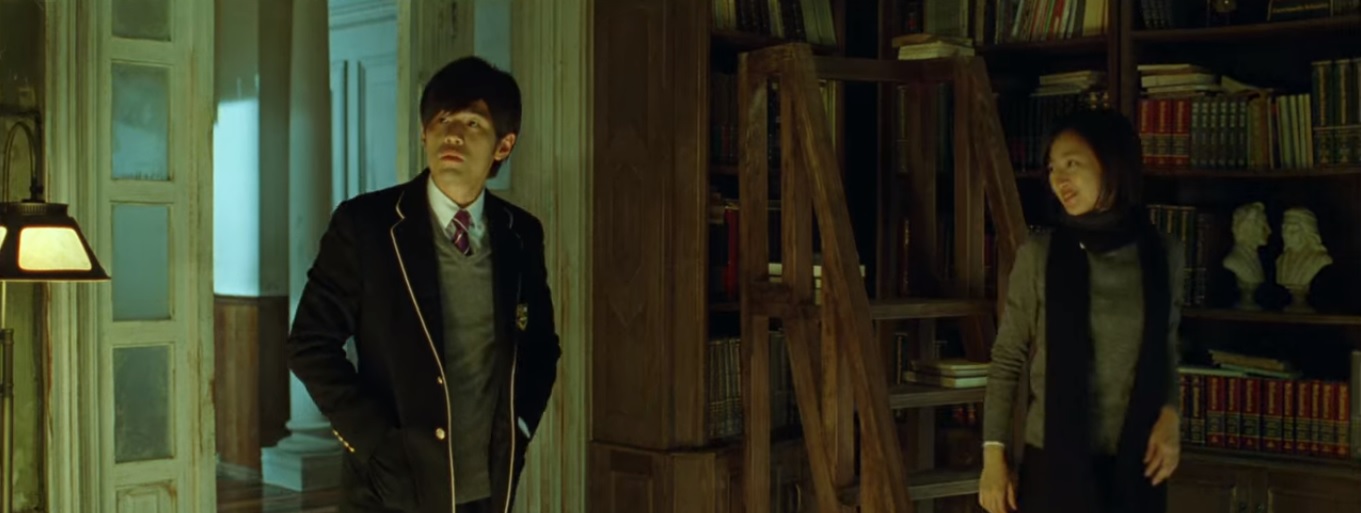
“Oneness” suggests trust in an uncertain future, a path that the lover has not dared walk before. Nostalgia is a defense mechanism the lover may resort to against troublesome languages that conflict with one’s identity. When the lover falsely assumes “oneness” with the beloved, he is indulging in pure nostalgia instead. When one examines the etymology of the word “nostalgia,” in which a return to home causes pain, it is clear what the lover is trying to accomplish here. The lover is well-accustomed to the bodily landscape of pain and conversely does not try to remedy suffering through the introduction of the beloved’s presence. Nostalgia entails surrounding oneself with images that give one the most comfort by reinforcing what the lover already believes to be true. Through nostalgia the lover occupies the “bittersweet” feeling of pleasantness and pain in equal measure, which is the lover’s only understanding of love thus far.
“[I]t seems to be alive and yet it doesn’t move: imperfect presence, imperfect death; neither oblivion nor resurrection; simply the exhausting lure of memory.”
(Barthes, 217)
Like the speaker in Lord Huron’s song “The Night We Met,” the lover usually searches for a path he has tread before in order to gain direction. Lisa Genova’s Still Alice takes a look at the deconstruction of personal identity. Alice’s most principal beloved is her former self before early onset Alzheimer’s started taking ahold of her mind. If she cannot hold onto who she was before, all those she loves (including her husband and children) are at risk of disappearing along with her.

The dangers of residing too long in the past is tackled in a short story of Ray Bradbury’s called “Mars is Heaven!”. Astronauts land on the Martian surface to find a planet that resembles Earth, but not present-day Earth as they left it. It is the Earth of their childhoods, packed with long-dead relatives, forgotten friends and toys, and home-cooked meals just like Mom used to make. The reader soon discovers this is a predatory technique developed by the resident aliens. However, one doesn’t need carnivorous aliens to explore the dangers of nostalgia to the lover. The lover cannot simply reject the past, but his visits are a matter of duration and distance. Like “Mars is Heaven!,” Mars may be an exciting place to visit but one shouldn’t rush to set up permanent residence there. Not only is it a lengthy and dangerous trip, but one needs to wear a protective suit and supply one’s own oxygen.
The reassertion of memory as a companion to love encourages ritual visits to the grave. In François Ozon’s film Frantz, nothing is left untouched by the beloved’s presence which is why “white lies” becomes of central importance. Both Anna and Adrien end up lying to prevent causing others pain, which in turn entails continually lying to themselves so often they can no longer recognize it. Anna and Adrien are brought together due to their shared grief for Anna’s late fiancé, Frantz. Anna is often told Adrien resembles Frantz in demeanor, if not appearance. Both end up living their lives reacquainting themselves with reminders of Frantz, shadows of his existence. Neither Anna nor Adrien can replace what they have lost, though they frequently court ghosts. Is the lover always offering flowers to an empty grave?

Céline: “You can never replace anybody because everybody is made up of such beautiful, specific details.” 40
from “Before Sunset” (2004).
Céline of Richard Linklater’s Before Sunset film expresses her frustration with the uniqueness of the beloved. Unlike what nostalgia would suggest, memory is never left completely intact when it is recalled. Once the beloved is lost, the lover looks for them in books, songs, in home movies, and in other people’s faces. Traces are found, but the entirety of what someone is is missing. In the German film Never Look Away, Kurt’s artistic journey is heavily influenced by his aunt. She encouraged his creativity in spite of the stifling of personal freedoms in Hitler’s construction of The Third Reich. However his aunt is someone who is a part of his life for only a brief amount of time when he is just a young boy. He never learns the truth of what happened to her or the identity of the man who condemned her to death, but her presence not only permeates throughout his life but informs his identity and subject matter as an artist. He is unable to succeed and “find himself” as an artist until he reengages with his, albeit limited and unconscious, visions of the past.
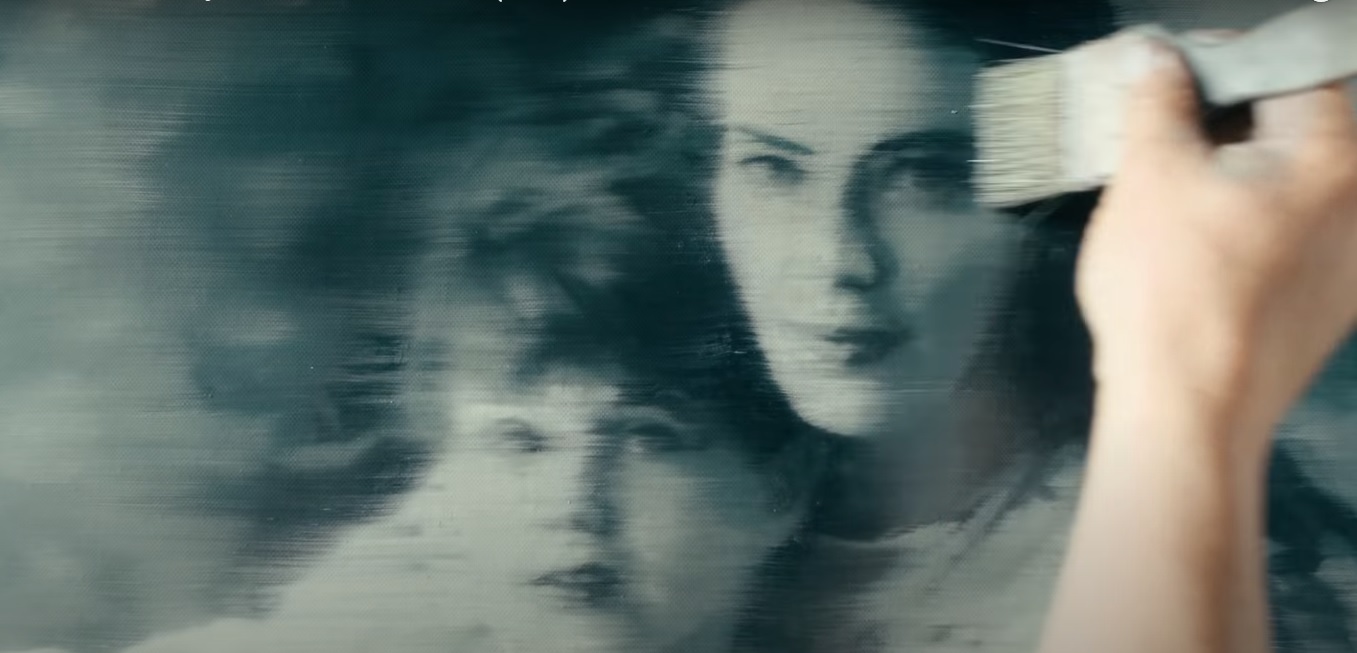
Hiromasa Yonebayashi’s film adaptation of When Marnie Was There illustrates the lover’s immersion in the past that is not self-destructive. Here the past is not simply a passive canvas for Anna to experience like an already laid-out film or book, where the author has supreme command over the direction the narrative takes and the reader is entirely oblivious to where the next page will take him. It is a role-playing game, where Anna can insert both herself as an individual and a bit of the present-day narrative landscape as well. Anna finds herself being able to actively engage with the childhood version of her grandmother, Marnie (though she is initially unaware of her identity), a person Anne only knew briefly in her own childhood. Anna serves an extension of Marnie’s childhood friend and eventual husband. Marnie serves as solid foundation for Anna, who as an adopted child, is unmoored by feelings of being unwanted.
“would that we would wake up to what we were
— when we were ocean and before that
to when sky was earth, and animal was energy, and rock was
liquid and stars were space and space was not” 41
(Howe, 17 – 20)
This excerpt of Marie Howe’s poem “Singularity” recognizes humanity’s feeling of painful separation, of feeling apart from the nature it once belonged to unequivocally. It is a wish to return to a seemingly more unified past. Words are surrounded by dashes, drawn-out spaces, and italics for emphasis. The speaker is reaching out, despite repeated trepidations, for humanity’s shared history. Any hope of a sense of renewed connection lies in humanity’s recollection of the past. In the film A Beautiful Day in the Neighborhood, Mister Rogers asks journalist Lloyd Vogel to take a moment of silence to remember all those people in his life who have “helped him into being.” The beloved exists due to the tremendous effort the lovers puts into loving. This creates a purpose for the past, to lead to this momentous moment of encountering the beloved. Through the excuse of having a “beloved,” the lover labors love itself into being.
A Sign of Evolution
“Despereaux thought that he might faint with the pleasure of someone referring to his ears as small and lovely. He laid his tail against the Pea’s wrist to steady himself . . . and his own heart immediately took up the rhythm of hers.” 43
(DiCamillo, 38)
One often claims to love no matter what changes may come. Using his knowledge of the past, he wishes to burst forward in time and transform from a single-celled organism into a multi-cellular, sentient being. In this moment from Kate DiCamillo’s The Tale of Despereaux, Despereaux the mouse begins to see himself as more than he is. Already a lover of heroic tales of romance and gallantry, Despereaux finds a means with which he can be like the knights he reads about through his adoration of Princess Pea. Like the first creatures to move from the seas to dry land, the lover finds his legs through love.
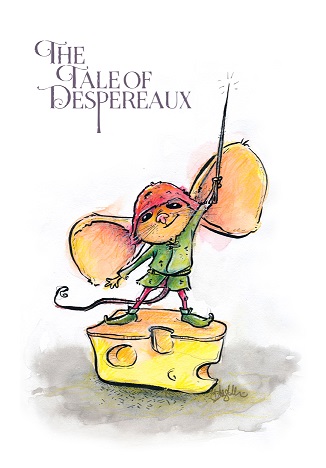
Not all lovers can be as noble-hearted and high-minded as Despereaux. In The Sword in the Stone, love may indeed be transformational . . . but the spell does not last long. When the young Arthur is turned into a squirrel by the wizard Merlin, he attracts the unwanted attention of a female squirrel who chooses him for a mate. Her love (and even her personal sacrifice to save his life against a hungry predator) do nothing to prevent him turning back into a human boy and unintentionally breaking her heart.
Barthes often assumes the lover does not act primarily in what would be termed as a “selfless” mode of being. The lover is always the “me,” the Earth in the geocentric universe theory, who suffers and is abused but is always at the center of all happenings. In Hermann Hesse’s Demian, Emil Sinclair’s journey from boy to young man involves repeatedly redefining his interior world to better understand the external one.
According to Ayn Rand in The Virtue of Selfishness, love’s selfishness exists because love should serve as a tool with which one can reform oneself. If humans are misshapen lumps of clay, then love can be the chisel with one gets rid of distracting and unnecessary imperfections. Selfishness is natural and when it “is serious, rational, principled concern with one’s own being,” it is virtuous according to Rand (Raibley). 44 This means the lover, whose principal concern is his own welfare, is not a lost cause because of his own self-absorption. In Victor Hugo’s Les Misérables, Jean Valjean’s emergence as a better man is due to a fervent desire to remedy his failures. His love for his adopted daughter, Cosette, is initially a way to assuage his guilt over failing Cosette’s mother, Fantine. Supervillain Gru of the Despicable Me franchise is soon softened by his role as foster dad to three orphaned girls. Severus Snape’s love for Harry Potter’s mother eventually outweighs his disdain for Harry’s father.
Thomas Merton asserts the act of loving itself makes the beloved worth loving, not the beloved’s intrinsic value. Charles Dickens’s Our Mutual Friend as well as the film adaptation of W. Somerset Maugham’s The Painted Veil showcase how the lover’s love can cultivate virtuousness the beloved never knew existed within them. In Whistle Down the Wind, a subtle transformation in one man happens only because of a linguistic accident. When children discover an escaped criminal in their family’s barn, he utters “Jesus Christ!” before collapsing from exhaustion when they ask his name. Instead of realizing he’s simply using the Lord’s name in vain, they assume this is actually Jesus Christ returned to Earth a second time. Though he is not miraculously cured of his criminality by the end of the film, the subtle shift in his priorities is enough to show loving (even seemingly mistakenly) is worthwhile.

The crisis moment of Jojo Rabbit consists of how Johannes (“Jojo”) Betzler handles his growing affection for the girl who is supposed to be his source of enmity. Jojo’s redemptive arc is displayed through his transitional path between several love objects. Jojo must rediscover the power of maternal love, which his growing interest in Nazism has dissuaded. Nazism serves as a way of making him feel like a man, an independent adult without the need of a mother’s warmth and guidance. His blossoming crush on this Jewish girl, Elsa, serves as a continuation and reinvention of his mother’s love that he needlessly abandoned. To cement this notion, Jojo lends Elsa one of his mother’s dresses and even ties her shoelaces as he used to do for his mother.
In Hayao Miyazaki’s adaptation of Howl’s Moving Castle, appearances are deceiving due to various curses which must be undone. An old woman, a fire demon, a giant birdlike creature, and a scarecrow are not what they seem. In the TV series The Good Lord Bird, the enslaved boy “Onion” must continue to dress as a girl as a form of self-protection. He is initially mistaken for being a girl but makes no attempts to alter this outside perception. Prior to this scene, not even the viewers knew “Onion” could sing or that he would wish to bring happiness to others in this way. This is quite strange since he is the series’s narrator, the boy who guides the audience through the twists and turns of the storyline according to his specific vantage point. He is an “onion” that no one bothers to peel, perhaps because it would make them cry.
Only others in a similar position to him recognize him as a boy, like other lovers would recognize themselves in the lover. However, the beloved has a much more difficult time seeing the lover for who he is and this causes the lover great distress. As long as he maintains his position as a slave to outside influence, the lover cannot reveal himself to the beloved. In this scene, “Onion” and Annie Brown attempt to reveal their true selves via their desires and ambitions for the future, but the intimacy of this rapport is hindered by his unwillingness to tell her he is actually a boy (and risk her father’s wrath). Whether one is molting, exchanging one’s home-bound shell for another, or shedding one’s skin like a snake, the lover risks putting himself in an incredibly vulnerable position. The beloved has the greatest chance of hurting the lover during this precise moment. The lover is allowed to hurt himself and he can withstand attacks from other lovers, but an injury by the beloved would be too great and too cruel to bear. However, “Onion” must endanger himself and reveal himself as a boy if he wishes to see himself as worthy of Annie Brown’s love. Love is the impetus which helps restore order and return beings to their proper form.
This risk may mean, counterintuitively, the lover will be thrown (far-flung) from the one who inspired such bravery in him in the first place. In Terence Malik’s film A Hidden Life, Franz Jägerstätter’s love for his wife Franziska ennobles him to stand up to the growing anti-Semitism in WWII-era Austria. Though she never drives him in any particular direction whatsoever, Franz’s own mother says her son was different before meeting her (a feeling which fills Franziska with doubt). Though his beloved wife would initially wish him to refrain from any activity that puts him and their family in danger, whatever their personal feelings may be, his dedication has already been put forward in motion. He is bound by the power and importance placed in the first look. Franz must be the man his wife inspired him to be in first place. It is a return to the internal framework the beloved sewed within him. He cannot veer from that path or risk feeling unworthy of the love he has already gained. Love ensures one acts with dignity and conviction, by encouraging the lover to return to form when he is threatened with formlessness.
Lovable Cells
“Hysteria” by Muse talks about the lover’s desirous experience as though it were a prison cell or, perhaps more appropriately, a padded cell with the lover laced up in a strait jacket for fear he will hurt someone (including himself). The major crisis of Breakfast at Tiffany’s concerns a conflict between the lover’s traditional notions of ownership versus the beloved’s carefree, unattached state of being. Both Paul Varjack and Holly Golightley are “bought” by others to attain what they want (Paul’s writing career and Holly’s glamorous lifestyle) while also at once denouncing the very idea they are dependent on anyone but themselves.
Whereas Paul soon submits to the idea of wanting a stable and set-in-stone relationship with Holly, she violently rejects the idea of being tied to anyone. She cannot even let her pet cat become a beloved to her. She simply refers to her pet, one she houses and feeds and cuddles, as “Cat” to avoid the intimacy that giving a name would suggest. They are like stray twigs who happen to bump into each other along “Moon River” before parting ways around the next bend.
“In truth, that which you call freedom is the strongest of these chains, though its links glitter in the sun and dazzle your eyes” 47
(Gibran, 20 -1)
Her so-called glamorous freedom is a sign of deep unhappiness underneath. Holly does unconsciously express a hidden longing for a place of belonging and comfort, which she displaces onto the name “Tiffany’s.” She is not merely talking about the actual jewelry store, but a state of being she might be at one day where she would want to own something and would want to be bought herself. Hannah Arendt might say that what Holly really longs for in love is fearlessness. She can lose the cat or Paul could leave her for someone else and she would have to admit she cares.
She avoids turning into the domesticated cat, the one who huddles in a wooden crate to shield itself from the downpour after it has been pushed out of the cab. Like a Buddhist’s recognition of the temporality of all beloveds, Holly wants something she cannot lose. Though “love predicated on possession, . . . inevitably turns to fear,” the high-class jewelry supplied at Tiffany’s and reflective of the untroubled lifestyle she craves appears built to last (Popova). 48 Perhaps the greatest threat the beloved poses to the lover is “loss of oneself” and vice versa.
If one considers love not an unfortunate accident, but a decision, why choose it? As Fleetwood Mac suggests in “The Chain,” love is a type of bondage the lover hopes the beloved agrees to attach herself to for the lover’s sake. With the human affinity for freedom, why would anyone consent to being “chained up” by love over and over again (despite repeated warnings)?
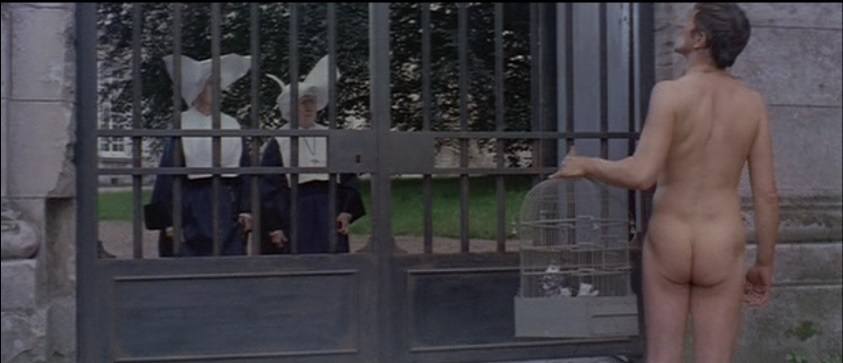
By the end of Philippe de Broca’s film King of Hearts, Scottish Private Charles Plumpick pretends to be insane when he realizes the members of the local mental institution appear saner than those who commit the senseless violence he witnesses as a soldier. For him, being a soldier becomes just as maddening as living in a padded cell. By pretending to be insane, Charles surprisingly asserts some agency over his life. Instead of lamenting and languishing in the lover’s madness, Charles decides to alternatively embrace it. As long as he knows he is sane, it might be better if the external world is not so quick to agree. How could the lover and beloved be singular in their love if the outside world were to easily nod its assent? Charles makes the lover’s madness a public spectacle, thrusting the Image-Repertoire out from private deliberation. If his Image-Repertoire is itself a prison, he would wish that others at least see him in that black-and-white striped uniform with that ball-and-chain. Like religion’s “divine madness,” might the beloved join him then?

“Of course there is not a happiness of structure; but every structure is habitable . . . I can simultaneously complain and endure; I can reject the meaning of the structure I submit to and traverse without displeasure certain of its everyday portions.”
(Barthes, 46)
In the TV series adaptation of Philippa Gregory’s The White Princess, combining the houses of Lancaster and York to put an end to the War of the Roses is a strained union at best. Elizabeth of York’s arranged marriage to Henry VII, symbolized by the Tudor rose of white (York) and red (Lancaster), is contentious and hostile. However, they soon team up against their respective meddling mothers who prove to pose a greater threat to their happiness than each other. As Barthes suggests, a structure is habitable as opposed to free-floating space. Elizabeth and Henry learn to make a home out of the prison they were placed in together. Arranged marriage is not portrayed as an automatically doomed and stifling match. In contrast to marriages based on fleeting desires, Henry and Elizabeth’s union has the benefit of not falling apart due to grand expectations not being met. The depiction of their son, King Henry VIII’s, marriage to Catherine of Aragon in The Spanish Princess is one that conversely pivots in the exact opposite direction, from passionate self-made choice to suffocating prison sentence.
Though love is nurturing, it is not relentless monitoring. The lover should not be a human panopticon, like Doctor T.J. Eckleburg’s ominous bespectacled billboard in F. Scott Fitzgerald in The Great Gatsby, ensuring the beloved’s good behavior through passive-aggressive intimidation. The lover has faith the beloved will not vanish forever, even when he or she disappears. Like the band Hyukoh express in the song “LOVE YA!,” the beloved is a monk seal. She is someone who is obviously precious, but one who does not need to be endlessly shielded from danger.
“Who would you save
If your best mate
And me are drowning
I’ll save my friend
Cause you’re like a monk seal.” 49
“Love ya!”
Buster Keaton’s Go West finds Keaton playing “Friendless” opposite the domesticated cow, “Brown Eyes.” Brown Eyes saves Friendless from a charging bull and follows him wherever he goes after he removes a stone from her hoof that caused her to limp. One could say that as a domesticated animal, Brown Eyes was born to follow and this is a mere instinctual compulsion. Whether this is true or not is actually of little consequence. Brown Eyes appears physically different to all the other cows in the film and though she is of common cattle stock, she makes up her mind to always stick with Friendless even when it would not benefit her to do so. She has the opportunity to escape mankind’s influence entirely, but finds her freedom through Friendless because he can recognize her within the herd. He allows her to walk beside him without feeling the need to shoo her away or run away (as the other humans do when the cattle accidentally overtake the city).
In Fried Green Tomatoes at the Whistle Stop Cafe by Fannie Flagg, Idgie is shown the “freest person on Earth” when she itches for personal freedom after being allied to Ruth for such a long time. This “free person” is an inebriated mess whom no one seems to pay much attention to or care about. Living things could not live were there absolutely no restrictions placed upon them at all (and people pushing back against them). Gravitational pressures prevent one from drifting out into the cold abyss of space. The habitability of Earth is due to it being in the “Goldilocks zone.” Not too hot. Not too cold. Just right. People are always both boundless and bounded. If the lover unceasingly offers himself to the beloved, he risks depriving himself of the opportunity to allow the beloved to prove himself in return.
” ‘If you cage a wild thing, you can be sure it will die, but if you let it free, nine times out of ten it will run back home’ ” 50
(Flagg, 259)
Contrary to the more aloof wolf, a domesticated dog prefers to stay in close physical proximity to a human being (even if that person is a stranger) because of the thousands of years that have been invested into this relationship. Image-Repertoire becomes a type of deja-vu for the lover and beloved to participate equally in. As in The Secret Garden by Frances Hodgson Burnett, perhaps living things grow best when they are actively looked after. Whether it be the foods we enjoy today or the animals we keep as companions, none of it suggests anything entirely “natural.” It is all the result of meticulous intervention and managing, pruning away whatever does a disservice to the beloved as well as the lover. What is deemed wild, free, and natural is not always automatically deemed “truer” or more worthwhile.
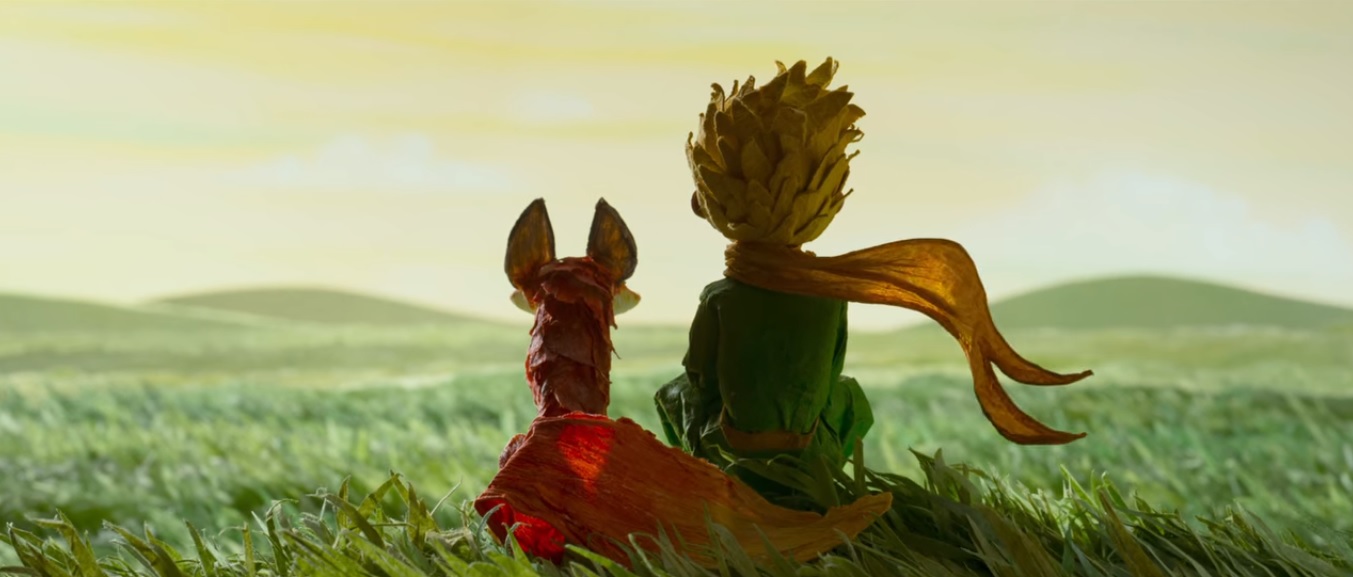
“To me, you are still nothing more than a little boy who is just like a hundred thousand other boys. And I have no need of you. And you, on your part, have no need of me. To you, I am nothing more than a fox like a hundred thousand other foxes. But if you tame me, then we shall need each other. To me, you will be unique in all the world. To you, I shall be unique in all the world . . .” 51
(de Saint-Exupéry, 90)
When love becomes sufficient in and of itself, the lover does not have to exhaust himself chasing or sit inanimate in a corner. If the lover loves well, there is no need for imprisonment. The beloved is bound by love and will want to stay nearby of his own accord. The Little Prince’s friendship with the fox is quite different to his love for the rose. It renders love as a particular level of domestication. As a wild animal without a collar or chain, the fox could leave him at any point. He is not a pet, but stays with The Little Prince because he wants to. This is Khalil Gibran’s notion that the beloved can only prove to the lover the he or she also loves if possessiveness is relinquished. Love returns like a boomerang. The beloved returns the favor by allowing the lover to “tame” them, to lessen the fierceness of wildness within. Taming is not about dominance through power. It is an ennobling type of responsibility one submits to, which serves to benefit the one who has been tamed.
Like Ovid’s Metamorphoses, love is considered to be rife with transformational energy despite its apparent ability to sedate. When Peleus is set to wed the sea-nymph Thetis, he must capture her by holding onto her no matter what external forms she takes. He is sent to do so while she is sleeping in the hopes these changes will not occur. However, change is inevitable. Thetis switches between vicious and intimidating animals to fearsome and elusive natural elements before returning to her usual form. Surviving this test of seeing love through until the end, she ultimately consents to marrying him.
The Korean film The Beauty Inside puts the theory of transformational love to the test by making it a permanent human condition. Ever since his eighteenth birthday, Woo-jin has displayed a condition inherited from his father that causes his identity to change every day. When he wakes up each morning, he is never sure what age, sex, or nationality he may see in the mirror. This makes forming any sort of lasting relationship incredibly difficult, which is why he tends to adhere to one-night-stands only. During his proposal scene to Yi-Soo, the woman who decides to continue their relationship despite the uncertainty his condition brings, she makes the curious decision to have him step back at a distance and propose “for real this time.” In this sequence, the viewer and Yi-soo see all the people she’s agreeing to marry (as opposed to just the handsome man who’s standing before her in this particular moment in time). The viewer is likely relieved to know that Yi-Soo is not solely caught up in the “here” and “now,” but has reigned in transformation through longevity. She intends to hold on for the ride.

“On Melancholy Hill” by Gorillaz accepts that the lover might not be what the beloved is looking for, but the speaker still expresses a fervent hope that he will prove to be enough anyway. In Lisa Hannigan’s “I Don’t Know,” the singer happily consents to not knowing everything about the beloved. This does not lead to despair, only excitement at each day learning seemingly trivial things about the beloved like whether he smokes or suffers from telephonophobia. Luca Guadagnino’s series We Are Who We Are asserts people live outside the conceptions the world creates for them and the lover encourages within himself because of his own insecurities. Due to Fraser’s flamboyant self-expression through fashion or Caitlin’s affinity for hunting with her father, others will likely place them into certain boxes that appear to correctly correlate with those images. Fraser and Caitlin both initially buy into this process as well, but soon realize the only appropriate option to the beloved’s frightening proposition of “Who are you?” is “I am,” just as God would reply in the Judeo-Christian religion. Like the formerly blind girl of Charlie Chaplin’s City Lights, for the beloved to simply communicate the phrase “Yes, I see you now” is enough that no words need follow in response.
The beloved is simply “adorable” and embodies the sentiments of Rumi’s poem, “Out Beyond Ideas,” where “the world is too full to talk about” (Rumi, 4). 52 If the lover is to succeed in loving, he or she must relinquish the ideas and images continually produced and processed by the Image-Repertoire. The lover, in essence, temporarily exiles the beloved from his Image-Repertoire by rendering his attempts at language mute. Like Aurora does in the “Exist for Love” music video, the lover must allow himself to occasionally sing to an audience of empty seats and simply embody love because he trusts that he is it. This is in all likelihood an impossible feat, of course.
“[T]he more I experience the specialty of my desire the less I can give it a name; to the precision of the target corresponds a wavering of the name; what is characteristic of desire, proper to desire, can produce only an impropriety of the utterance . . . adorable is the futile vestige . . . the fatigue of language itself.”
(Barthes, 20)
One way for the lover to combat this inherent impossibility is shown in The Beatles song “Because.” The lyrics proceed to list facts about the world, such as it being round and the sky being blue, rather than reasons. Why present the listener with this trivia, information which could be found in any children’s science book? These facts should not be surprising to anyone. Why mention them at all? This song appears to illustrate Barthes’s notion of “you” being the ultimate descriptor. The lover can only spit out clearly observable facts that nonetheless feel revelatory to him. All methods of comparison, however lovely and however literary, show the failure of language to capture the beloved’s essence, “the truth.”
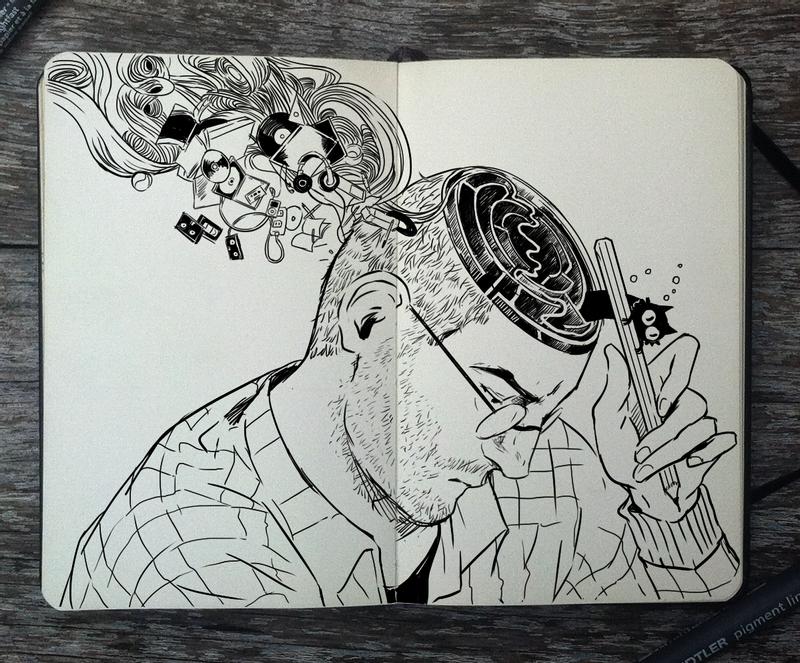
The Image-Repertoire cannot be made mute. It is the only means by which the lover can continually construct and deconstruct the beloved in his mind. However, the lover can at times turn down the volume of its influence like a knob for the car radio and simply admire the beloved of its own accord, tuning out the constant interjections of the mind. The noise will inevitably return, but the pauses encourage a chance for clarity. Look up and the maze of mind-based thoughts briefly turns into an expansive sky.
Resurrecting the Dead
We often think of love as being an entirely organic experience, one which is unique and spontaneous. It is something that simply happens of its own accord. Love is personal and impersonal, profane and sacred, selfish and selfless, limited and unlimited, conditional and unconditional, etc. It embodies all of these dichotomies. Barthes approaches love as a language. Whether one has command of the language or the language commands is an ongoing dilemma for the lover and beloved relationship. If love is a language, Barthes assumes we are not in any way fluent in it though we surround ourselves with echoes of its ancestors.
The language between lover and beloved is as if these two had been accustomed to speaking only in English, only for one of them to suddenly without warning continue the conversation in Cantonese. However, it is not merely a matter of rough translation. Surely if one were to switch deftly between languages, one would at once notice the switch.
When it comes to the language(s) of love, perhaps it would be prudent to compare it to “dead languages.” One is unaware of language’s influence on love. The hidden etymology, the roots, and the prefixes and suffixes that break down into tangible meaning. No word is so obscure and mysterious in its subtle transformations if one can carefully trace the origins. For example, the “dead language” of Latin finds its way into modern English without one ever having taken a formal class in it. Invisible influences are splashed on sign posts and campus slogans even though it hardly flows easily off the tongue. It is an affair enacted and reenacted over and over again, a magic trick that requires a particular deftness of hand and an ability to misdirect its audience. The lover is the magician and the audience and the trick all in one, simultaneously.
Works Cited
- Shakespeare, William. “Romeo and Juliet: Act Two, scene two.” The Folger Shakespeare. https://shakespeare.folger.edu/shakespeares-works/romeo-and-juliet/act-2-scene-2/ ↩
- Shakespeare, William. “Twelfth Night: Act I, scene V.” The Folger Shakespeare. https://shakespeare.folger.edu/shakespeares-works/twelfth-night/act-1-scene-5/ ↩
- Shakespeare, William. “Twelfth Night: Act I, scene V.” The Folger Shakespeare. https://shakespeare.folger.edu/shakespeares-works/twelfth-night/act-1-scene-5/ ↩
- “Little Women (2019) – Laurie Proposes to Jo Scene (6/10) | Movieclips.” YouTube, uploaded by Movieclips, 20 March 2020, https://www.youtube.com/watch?v=3cEg2HCl50I ↩
- cummings, e.e. e.e. “somewhere i have never travelled, gladly beyond” Poems.org. https://poets.org/poem/somewhere-i-have-never-travelledgladly-beyond ↩
- “The Apartment (9/12) Movie CLIP – Fruitcake Every Christmas (1960) HD.” YouTube, uploaded by Movieclips, 14 January 2014, https://www.youtube.com/watch?v=MeQCLsUrCXo ↩
- Barthes, Roland. A Lover’s Discourse: Fragments. Hill and Wang, 2010. ↩
- Arctic Monkeys. “Cornerstone.” Humbug, 2009. Genius.com. https://genius.com/Arctic-monkeys-cornerstone-lyrics ↩
- Barthes, Roland. A Lover’s Discourse: Fragments. Hill and Wang, 2010.” ↩
- “Baby Driver (2017) – Songs for Debora Scene (3/10) | Movieclips.” YouTube, uploaded by Movieclips, 13 October 2017. https://www.youtube.com/watch?v=6O554p-ovsI ↩
- The 1975. “A Change of of Heart.” i like it when you sleep, for you are so beautiful yet so unaware of it, 2016. Genius.com. https://genius.com/The-1975-a-change-of-heart-lyrics ↩
- The Garden of Words. Dir. Makoto Shinkai, CoMix Wave Films, 2013. ↩
- Sivan, Troye. “The Good Side.” Bloom (Target Edition), 2018. Genius.com. https://genius.com/Troye-sivan-the-good-side-lyrics ↩
- Vuong, Ocean. “Self-Portrait as Exit Wounds.” Poets.org. https://poets.org/poem/self-portrait-exit-wounds ↩
- “Harold and Maude (6/8) Movie CLIP – Backing Away From Life (1971) HD.” YouTube, uploaded by Movieclips, 10 October 2011, https://www.youtube.com/watch?v=mzuVsHCLSOg ↩
- Shakespeare, William. “Sonnet 130: My mistress’ eyes are nothing like the sun.” Poetry Foundation.org. https://www.poetryfoundation.org/poems/45108/sonnet-130-my-mistress-eyes-are-nothing-like-the-sun ↩
- Shakespeare, William. “King Lear: Act 1, scene 1.” The Folger Shakespeare. https://shakespeare.folger.edu/shakespeares-works/king-lear/act-1-scene-1/ ↩
- Shakespeare, William. “King Lear: Act 1, scene 1.” The Folger Shakespeare. https://shakespeare.folger.edu/shakespeares-works/king-lear/act-1-scene-1/ ↩
- WALL·E – WALL·E & EVE. YouTube, uploaded by Disney Clips, 20 November 2018. https://www.youtube.com/watch?v=vhj8ixnOeLM ↩
- Emma. Dir. Autumn de Wilde, Performances by Anya Taylor-Joy and Johnny Flynn, Focus Features, 2020. ↩
- “Emma (2020) – Dancing with Mr. Knightley Scene (5/10). YouTube, uploaded by Movieclips, 22 May 2020, https://www.youtube.com/watch?v=_NqVX2rLR8k ↩
- “The Miracle Worker (9/10) Movie CLIP – She Knows! (1962) HD.” YouTube, uploaded by Movieclips, 30 July 2013, https://www.youtube.com/watch?v=QlKuJBiw1ac ↩
- See, Lisa. Snow flower and the secret fan. New York, Rando House Inc., 2005. Print. ↩
- “Bosom Friends: Anne and Diana Moments.” YouTube, uploaded by Movieclips, 3 July 2020, https://www.youtube.com/watch?v=_3IZyMbhAf0 ↩
- Montgomery, L.M. Anne of Green Gables. New York, Bantam Books, Inc., 1987. Print. ↩
- Bradbury, Ray. Fahrenheit 451 (The 50th Anniversary Edition). New York, Ballantine Books, 1991. Print. ↩
- “Happy Feet (1/10) Movie CLIP – Mumble Has No Heartsong (2006) HD.” YouTube, uploaded by Movieclips, 24 December 2014, https://www.youtube.com/watch?v=q-H62GgHjeg ↩
- “Some Like It Hot (6/11) Movie CLIP – How the Other Half Lives (1959) HD.” YouTube, uploaded by Movieclips, 20 April 2015, https://www.youtube.com/watch?v=h55rTtbCy7o ↩
- Dickens, Charles. Great Expectations. New York, Sterling Publishing co., Inc. 2012. Print. ↩
- “The Invisible Woman Movie CLIP – I Like It (2013) – Ralph Fiennes Movie HD.” YouTube, uploaded by Movieclips, 11 December 2013, https://www.youtube.com/watch?v=ZKN1b7yH8T4 ↩
- Love & Mercy ‘But Yeah’ Clip – Starring John Cusack & Elizabeth Banks – At Cinemas July 10. YouTube, uploaded by Sony Pictures Releasing UK, 13 July, 2015. https://www.youtube.com/watch?v=yaz5BT4YYyA ↩
- “Mr. Holmes (8/12) Movie CLIP – The Dead Are Not So Very Far Away (2015) HD.” YouTube, uploaded by MovieClips Coming Soon, 3 November 2016, https://www.youtube.com/watch?v=mvYdMO5ZfYM ↩
- “The Alienist: Don’t Pretend I Have No Feelings For You – Season Finale [CLIP] | TNT.” YouTube, uploaded by TNT, 27 March 2018. https://www.youtube.com/watch?v=VkoxDyoD4ys ↩
- Trosper, Jaime. “Why Physics Says You Can Never Actually Touch Anything.” Futurism. 17 June 2014. https://futurism.com/why-you-can-never-actually-touch-anything ↩
- Midnight In Paris. Dir. Woody Allen, Performances by Owen Wilson, Rachel McAdams, Marion Cotillard, etc. Sony Pictures Classic, 2011. ↩
- “Eternal Sunshine of the Spotless Mind (6/11) Movie CLIP – Remember Me (2004) HD.” YouTube, uploaded by Movieclips, 16 June 2011, https://www.youtube.com/watch?v=lFHLE24hDQY ↩
- “Must See Moment: Chop Chop | Stream Killing Eve Now | BBC America.” YouTube, uploaded by BBC America, 26 May 2019, https://www.youtube.com/watch?v=YVAagNZK8zk ↩
- Mann, Thomas. Death in Venice (Dover Thrift Editions). New York, Dover Publications, Inc., 1995. Print. ↩
- “CAROL – Perfume – Film Clip.” YouTube, uploaded by StudiocanalUK, 26 November 2015, https://www.youtube.com/watch?v=x1gbK9tz3uE ↩
- Before Sunset. Dir. LINKLATER, RICHARD, Performances by Ethan Hawke and Julie Delpy, Warner Independent Pictures, 2004. ↩
- Howe, Marie. “Singularity.” Poets.org. https://poets.org/poem/singularity. ↩
- “A Beautiful Day in the Neighborhood (2019) – I Don’t Think You Are Broken Scene (7/10) | Movieclips.” YouTube, uploaded by Movieclips, 9 March 2020, https://www.youtube.com/watch?v=9AzXX_2BrVk ↩
- DiCamillo, Kate. The Tale of Despereaux. Cambridge, Candlewick Press, 2003. Print. ↩
- Raibley, J. Rand, Ayn. “Virtue of Selfishness.” The Atlas Society. 4 October 2010. https://www.atlassociety.org/post/virtue-of-selfishness ↩
- “‘If You Were A Boy’ Ep. 5 Official Clip | The Good Lord Bird | SHOWTIME.” YouTube, uploaded by SHOWTIME, 25 October 2020. https://www.youtube.com/watch?v=iiop4-rS9ZU ↩
- “Breakfast at Tiffany’s (1/9) Movie CLIP – The Mean Reds (1961) HD.” YouTube, uploaded by Movieclips, 10 October 2011, https://www.youtube.com/watch?v=4jsUIgchHXU ↩
- Gibran, Kahlil. “On Freedom (from The Prophet)” Poets.org. https://poets.org/POEM/FREEDOM ↩
- Popova, Marie. “Hannah Arendt on Love and How to Live with the Fundamental Fear of Loss.” 25 February 2019. Brain Pickings.org. https://www.brainpickings.org/2019/02/25/love-and-saint-augustine-hannah-arendt/ ↩
- “Love ya!” Hyukoh. 24: How to Find True Love and Happiness. Genius.com. https://genius.com/14812838 ↩
- Flagg, Fannie. Fried Green Tomatoes at the Whistle Stop Cafe. McGraw Hill, 1988. ↩
- de Saint-Exupéry, Antoine. The Little Prince. London, VIVI Books, 2016. ↩
- Rumi. “Out Beyond Ideas.” National Poetry Day. https://nationalpoetryday.co.uk/poem/out-beyond-ideas/ ↩
What do you think? Leave a comment.











Such thorough analysis! So many examples! And you used a few of my overlooked favorites, like My Fair Lady (seriously, you’d think more people would discuss it in articles like yours. The whole play/film is about language). I also loved that you put in Anne of Green Gables and Enchanted.
Thank you, Stephanie! You’re absolutely right about My Fair Lady in relation to language, especially when one considers the myth of Pygmalion as well. It’s basically about the lover constructing the beloved out of his own desires.
Absolutely right. It ramps up your sympathy/empathy for Eliza too, because even though she willingly involved herself with Higgins and even though he came to “love” her, no one should be made to feel like an experiment. Also, I never bought the idea of those two in a love relationship. In the film, he’s old enough to be her father, and in the play, he’s just a jerk. Actually, I’d call him an emotional and mental abuser. Eliza should’ve run like heck.
Yes, I think the highly-educated Higgins is ironically somewhat illiterate when it comes to the languages of love. He simply regards his relationship with Eliza as a situation in which he is always at the helm, when in reality loving constantly negotiates a state of flux between dominant and submissive forces within the lover. It entertains a state of unease Higgins is unwilling to subject himself to, which lends itself to his propensity for abusive behavior. I thought the short-lived TV show Selfie, also based on the play, evens the playing field a little bit more between them.
I had to read A Lover’s Discourse for a class a few months ago, and it was not easy. Barthes’ manner of writing is entirely too convoluted, in my opinion. That being said, I really enjoyed your discussion of his work and the many examples you use (I’ll always appreciate a mention of Fleetwood Mac)! I wish this article were around when I was studying the original; it would have made my work easier, indeed.
Thanks, Samantha! I also have you to thank for introducing me to this book. Now I kind of wish I had a university class that covered it like you did. I thoroughly enjoyed reading it, though I certainly agree his writing could be convoluted at times. And yes, Fleetwood Mac always deserves a mention! Their songs are often quite good at capturing the sometimes torturous nature of loving.
Now THIS is an article. Clicked on it and got The Artifice’s take on the language of love, perfectly written, well balanced, great quotes, and research. The Artifice, I really love you.
Thank you so much!
Brilliant article on seminal critic, who completely revolutionised how we think about writing.
Thank you! Yes, I think Barthes had an astute understanding of how language both informs and reflects how the mind operates.
And detergents, and Greta Garbo… and, if you read the posthumous Incidents, the pitfalls of hiring a male hustler…
And photography.
The English language is very poor when it comes to Love. The Greeks had much it better: instead of one word, they had four, all meaning distinct things. Instead we have this single wishy washy coverall, which we have to use for everything ranging from the feeling we might have upon seeing a newly painted living-room in an exciting colour, through the romantic attachment between partners, all the way up to spiritual feelings of benevolence for our fellow living beings.
Yes, it’s certainly a difficult issue in regard to language. We seem to simultaneously want the word “love” to encompass any remotely rejuvenating experience, but also want “love” to be singular and special and distinct so that we can easily identify it when we see it (and reject what might only pass for it).
In the modern world we have forgotten that to love someone means you must at some point also have to deal with the pain of it. We all say we love things or people, but we don’t really understand it until we realise the huge responsibility and helplessness love brings.
The religious texts are full of words about God loving us, or Jesus loving us, but these gods do not spare us any pain. People who love their children know it. Love isn’t a word. It’s a searing feeling not unlike pain and it lives in your heart forever.
Illustrated beautifully in CS Lewis’ ‘Shadowlands’:
“Twice in that life I’ve been given the choice: as a boy and as a man. The boy chose safety, the man chooses suffering. The pain now is part of the happiness then. That’s the deal.”
Beautifully put.
Lovely piece of writing, thank you.
Thank you, Theresa!
Well done, a pleasure to read your piece. There’s one thing I remember about Camera Lucida specifically, which was the last work I read of his, and that is the concept of the “punctum”– and my guess is that this is Barthes’ main contribution to our understanding and thinking about photography. Theoreticians might like to keep in mind that it’s more an affective or emotional concept than a theoretical one.
This was suggested reading for my Photography Degree along with On Photography by Susan Sontag and Ways of seeing by John Berger.
Needless to say….a typical student, I didn’t bother and thought I knew best blundering away taking photographs the way I wanted.
Now having read all three and many more academic works, I understand the value, and as you can guess, now wish I’d read them back in 97.
Reminded me I must get hold of a copy of the book.
Barthes’ point that photography (and all art and literature, even representational art and literature) is, underneath all else, about time and its extinctions (very like memory (which, whatever it is, is where we get our ideas of time and extinction from)) is a personalising one but not at odds with or beyond the reach of theory. All consciousness is predicated on loss.
Barthes was a typical product of the 1930’s Sorbonne. From his armchair he pontificated about everthing while bambozling the lazy minded with “semiotics” and “structuralism”. (and what ever became of those – are they still hanging on to life in the bottom level universities!)
If you are in love, read this book. If you are not, read it as well. If you have ever loved, you will love it.
A shattered discourse of love by a lover living the shattering postmodern condition! What is there not to love.
My heart was in pain, so I decided to read a book about it, this one. Now my heart is still in pain, but my mind has a better idea re: why its heart pains.
An intertextual meditation on the semiotics of love.
This is an astounding analytical work, in as much as it put into words emotions I’ve felt but never even considered classifying or really dwelt upon, but which certainly form part of being in love. Some of the ‘fragments’ felt like truly revelatory insights into my own life experiences.
Yes, I think the individual in the role of “the lover” is often reluctant to classify or dwell on his or her seemingly private feelings/thoughts in the form of public structure/discourse. As you seem to say, the term “fragments” is quite helpful in combatting this. It captures how disorienting and debilitating the lover’s experience is no matter its commonality.
My favorite quote:
“How does a love end? – Then it does end? To tell the truth, no one – except for the others – ever knows anything about it; a kind of innocence conceals the end of this thing conceived, asserted, lived according to eternity. Whatever the loved being becomes, whether he vanishes or moves into the realm of Friendship, in any case I never see him disappear: the love which is over and done with passes into another world like a ship into space, lights no longer winking: the loved being once echoed loudly, now that being is entirely without resonance (the other never disappears when and how we expect). This phenomenon results from a constraint in the lover’s discourse: I myself cannot (as an enamored subject) construct my love story to the end: I am its poet (its bard) only for the beginning; the end, like my own death, belongs to others; it is up to them to write the fiction, the external, mythic narrative.”
I love that quote as well! The book is full of memorable lines and images such as this.
I particularly appreciated Barthes’s take on image and imitation.
Finished this book on my flight back home from Dublin, a really special piece of theory (?) thats structured in such a way (in fragments) so as to provide pacing for the reader and, more importantly, to write honestly about how we experience love, to enact the disparate parts of the experience in the very discourse of love.
What is love? I think that is a question that has us all suspended in rumination. I have been in love twice, but even now it is something that I find difficult to explain. I think that love encompasses everything. I felt every emotion, the sane and the insane ones and everything in between. I think this book does an incredible job of explaining love in all of its facets. I feel like he connects what the heart wants and the head thinks into a polarizing explanation of the nuances of love. There are parts of this book that I could project my own experiences into what he was saying. Love makes me crazy, and it was a relief to know that some of these twisted and manic thoughts don’t just happen to me, but to everyone.
Mythologies is my favourite of Barthes’s books – true, like all his writing, it’s pseudoscientific in terminology while actually based on unsubstantiated generalisations from his own very idiosyncratic point of view. But this contradiction just makes him more interesting and complex. I love his critique of travel writing, in which he argues that it’s really about home (‘The Flying Dutchman and the Mary Celeste’).
13th-century Persian poet, Rumi, said it best:”Lovers don’t finally meet somewhere. They’re in each other all along.”
Rumi is excellent! I think those lines really illustrate love as a wide-open space/mental framework, where any lover can occupy it and easily recognize another who is in the same place at the same time. Simply beautiful.
Interesting debates that Barthes’ work initiated regarding the utility/possibility/limitations of biographical literary criticism.
`I love you.’ – the most debased currency in the human lexicon – which takes some doing.
I have a superstitious aversion to the words, as if to utter them would be a demonstration of their not-truth. In fact they have very rarely been true, and in most cases have been spoken as a response to a declaration of love from someone else, in a context where it would have seemed rude not to repeat them back. (It would also have meant the end of a relationship that I was not prepared at that point to terminate.) One one occasion I have resorted to substituting the word ‘adore’, which would never have fooled me, but which seemed at the time to do the trick. It is very hard to fake sincerity. Some appear to be satisfied merely by the bald reiteration, however palpably insincere, but their satisfaction is is of the insubstantial sort that needs to be consolidated by endless repetition. Ideally they should only be said once, but when spoken they should be binding and momentous, more so even than marriage vows or a declaration of war.
I disagree. It would be lovely if people said it and it stayed true forever, but it certainly doesn’t always.
My other half and I say it often (not in the company of other people or in the street on a mobile, though – at my age that strikes me as a bit American!) and we’re in our 60s (although we’ve only been together less than a couple of decades, not a lifetime). Sometimes it’s in a jokey ritual in the middle of the night (‘I love you more than you love me…’ ‘No you don’t – if you did you’d go out and get me a cheeseburger’) but it’s still based on the knowledge that we both mean it.
It’s one of many things that make up the ‘paying of attention’ to the other person and to the relationship, which help keep it vital. It’s because of other things that I know he means it, though, not because of the words themselves.
The Japanese have 3 basic ways of saying this when in a relationship:
好きだよ I like you
大好きだよ I really like you (lit. ‘big like’)
愛してるよ I love you
I’m not too sure on the exact usage and I’m sure someone will come along and tell me I’ve got it all wrong. But basically you can tell someone you ‘like’ them and they wont be offended that you don’t ‘big like’ them or ‘love’ them. Partly because, I think, it might be a shy way of saying you are actually nuts about them. I suppose it depends on the situation and how you say it a lot. But there is some variety there.
Being slightly reserved, Japanese people, at least the one’s I’ve known, tend not to go on about it too much. I was with my Japanese girlfriend when she left her family to go and live in the UK for a year. No hugs, or kisses, no ‘I love you’ or even ‘I big like you’. When I asked her why she said, “it’s so obvious we love each other we don’t have to mention it”.
The mistake is to suppose language is always a discourse on something external to itself. “How d’you do?”, mother said, is a greeting, not an enquiry. That is why the answer (or reply!) is another question. In Irish, to the greeting “God with you” the response is “And Mary”, while Arabic answers “Peace with you” by a chiastic “and with you peace”.
“I love you” is an utterance of this sort. Every French teen knows the response to “je t’aime” is a grammatically incomprehensible “moi aussi”. Anyone who answers “I love you” by a truthful “I don’t actually love you but am desperate to get laid”bid doomed to failure in their amor(ph)ous enterprise. In the heat of passion no one is going to jeopardise their chances by telling the truth.
Thank you. Will share this with my class. My first-year undergraduate finds his writing exhilarating.
I “heart” Barthes
I have “heart”ed Barthes since foundation, a philosopher who can actually bloody write…astonishing, even Aristotle couldn’t manage both.
Roland Barthes’ writings are very accessible (unlike a number of others like Derrida, etc), even his most theoretical works. I think that S/Z is still v. useful, as is his The Fashion System in helping to structure an analysis of fashion codes – and I believe the latter will stay a classic in fashion studies like Veblen’s Theory of the Leisure Class.
Wow! This guy knows how to talk about love.
Obviously such a great book but u must only read when you’re either in newly in love or newly heartbroken. Meanwhile, this article will do you just fine.
That’s quite a compliment! Thank you.
Best philosophy text on love I’ve ever read. There are really not that many philosophy texts on love – or good ones, at least – but this is the best. It’s kind of beautiful, actually.
I find I can’t stop reading A Lover’s Discourse. Is it my own nature to be smitten by impossible women that keeps me glued to the page after page of unsettling discourse on love as neurosis, as fixation, as something akin to demonic possession, his furor werthrinus? (Hint: Goethe).
Perhaps the real issue with Barthes is that people in these islands usually only read him at Uni, and rarely touch him for pleasure. And that is sad as he can be quite a fun read.
For me, I read him when I was researching a cycling piece I was writing (the Tour de France is covered in the second Mythologies collection). I also wanted to read Barthes’ photography piece, having read Sontag’s. The rest just followed as I enjoyed him.
Your article is better than anything I have read in the French-speaking press! Thank you!
Oh, wow! That’s lovely to hear. Thank you for the compliment.
This has everything about love articulated in such a fascinating, engaging and excellent way.
Relatable, beautiful, thought provoking.
One of the best books Ive ever read. Beautiful, intelligent, funny, and deeply associative.
This book made me wanna swear off love altogether, made me cry for what has happened to me, made me want to just read books and drink wine with friends on the porch, only to bike home alone drunk, always alone. But then it made me want to have passionate sex immediately, made me want to butter a piece of toast for my lover and feed it to them with my own hands.
Read this several stages of my life. Thanks for highlighting it.
I sometimes find myself thinking or evening saying “I am just a tissue of quotations” and then thinking where’s that from again? oh yeah, Barthes: “The text is a tissue of quotations drawn from the innumerable centres of culture.” That’s the best sentence he ever wrote.
Yes, I agree. That’s such a great line! So evocative and true.
Roland Barthes is Miller Heavy, everything you dont want in a French intellectual author only more.
Fantastic article! I loved it. Thanks for the read.
Thank you so much, Amyus! I’m glad you enjoyed it.
One of the best books on love I’ve ever read. Almost every section gave me pause.
This is really an open exploration into the language and meaning behind love. Great article.
Thank you, Tina! Yes, I tried to be both laser-focused and expansive in this exploration. I’m really glad to hear my efforts appear to have paid off.
Some years ago I ran a seminar applying the S/Z codes to a detective story. We used coloured highlighters, had a lot of fun and I think demystified or rather disproved the allegation of obscurity. I thought it was in Barthes’ spirit that I attempted this with a QAA inspector in the room. She loved it. Too bad.
I keep thinking I should have a go at Audithologies, analyses of sound and music. Although I remain unconvinced by The Grain of the Voice, most singers talk about vocal timbre and colour like bread and butter.
Love is better defined as something you do in silence rather than something you say.
His writings on photography (a book barely about photography) are some of the most important of their kind.
This is the book that really started my love of psychoanalytic writing. I turn to it often.
Barthes has already written everything I’ve ever felt, which is embarrassing but good.
This is filled with beauty and melancholia, just like love itself.
It could arguably be called a case study in madness. 🙂
This book often hits too close to home.
Your description of Wall-E and Eve in “Wall-E” reminded me of Čapek’s “Rossum’s Universal Robots” at the end of the play, where two of the robots discover emotions and fall in love.
Thank you for introducing me to this work! I’m not even sure if I was aware of it beforehand or not (or that it apparently introduced the word “robot” to the world). Nice observation there!
Wow. This article was so well-written and gave such thoughtful insight within each example.
Thank you! I’m glad you enjoyed it.
Oh my, this certainly was exhaustive! I admire your application. This article feels a little like one of those corkboards drawn up by sleuths to find the connections between clues, which is a very suitable way of looking at love, I think.
Haha! Thank you. Yes, it definitely took some time to cobble together. I love the detective metaphor by the way. That’s a great way of looking at it.
This felt like a dissertation on love. Talk about having to breaks for a snack or something in between examples! One of the first things I thought of when reading this was the book “The Love Affair as a Work of Art” and this essay was certainly a work of art!”
Haha! Thank you for returning to my work after repeated snack breaks. I definitely have to check out that book you mentioned. It sounds fascinating! Thanks for both the recommendation and the lovely compliments as well.
Such a generous and expansive study! Thank you so much for posting it. It is a wonderful gift.
What a lovely compliment, Anne! Thank you so much for your support.